

We Are Water
- Donate Donate
Get news and insights

@Carlos Garriga – We Are Water Foundation
Saving water, the first step towards sustainable tourism
- Share on Facebook
- Share on Twitter
- Share on LinkedIn
- Share by WhatsApp
- Smart water
- Sustainable development
Tourism is one of the key industries for international economic recovery after the pandemic, especially for developing countries. It is also key for the sustainability of the planet. Reducing the consumption of water is a priority first step.
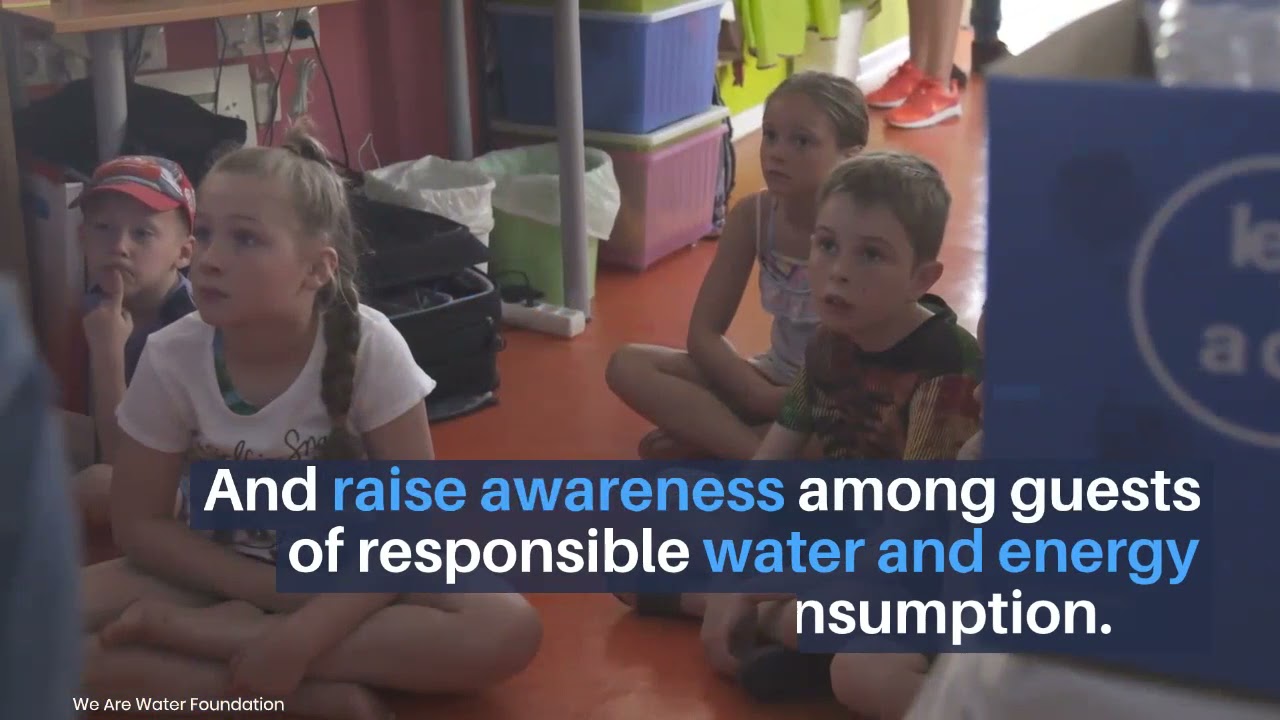
Saving millions of liters of water, raising the awareness of guests of the importance of sustainable practices, turning them into communication agents in their homes and obtaining donations for aid projects in India , Guatemala and Indonesia are achievements that might have seemed overoptimistic a few years ago. Let’s Make a Deal , the initiative developed during the 2018 tourist season with Diamond Resorts , was able to do it. It was an eye-opening experience of the role of tourism as an effective awareness-raising factor in the importance of sustainability in the use of the water.
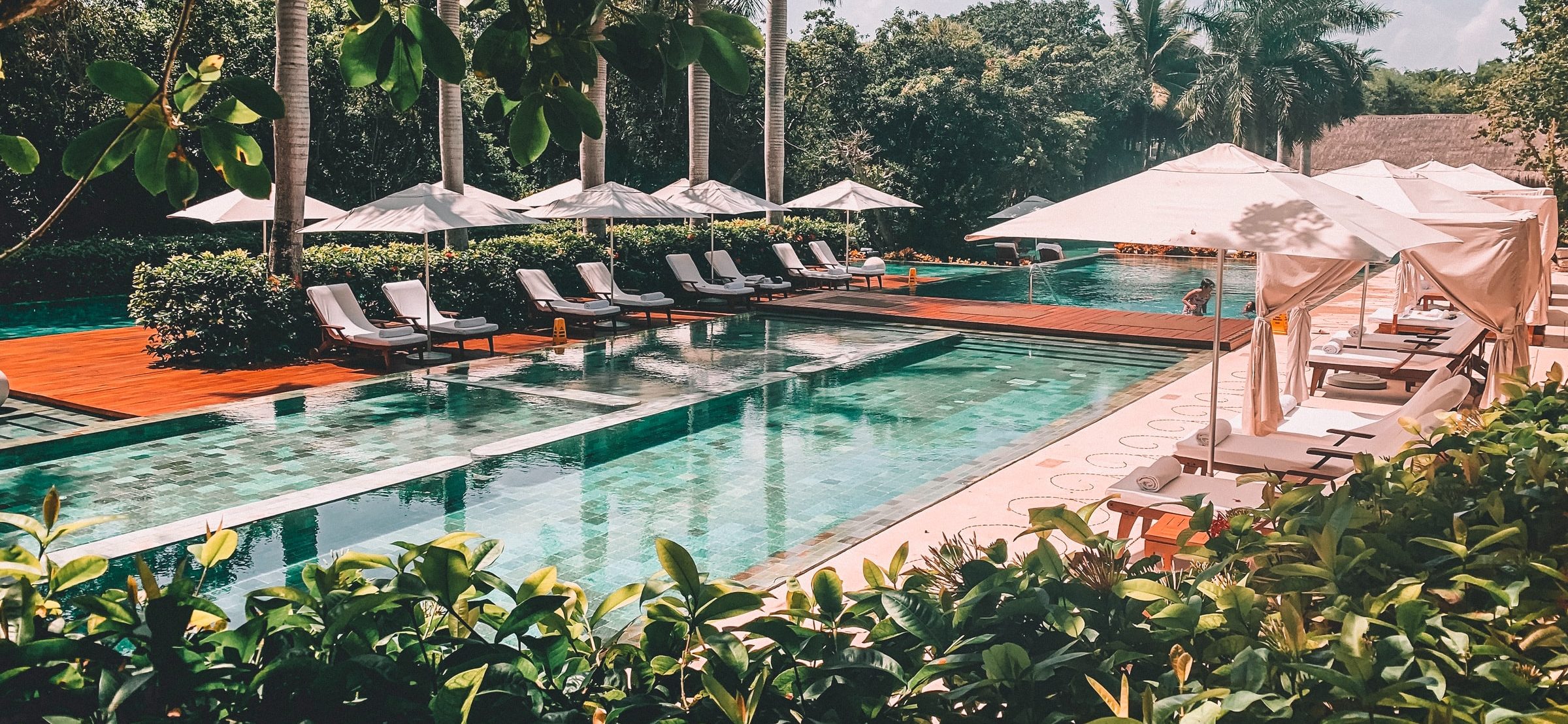
Tourists consume more water than residents and in very different quantities depending on the destinations. © Dayana Brooke-unsplash
In total, 970,000 liters were saved by reducing towel washing alone and 1.02 million were saved by extending the use of sheets. Over 1,500 water filters were installed in toilets and kitchens to allow guests to refill their We Are Water bottles, leading to the saving of more than half a ton of plastic in containers and glasses.
Last October, amidst a crisis in the industry due to the Covid-19 lockdown, architects, developers and professionals of the tourism industry corroborated the importance of these goals at the Smart Water Smart Reaction debate, which took place in the virtual room at the Expo CIHAC Digital in Mexico City.
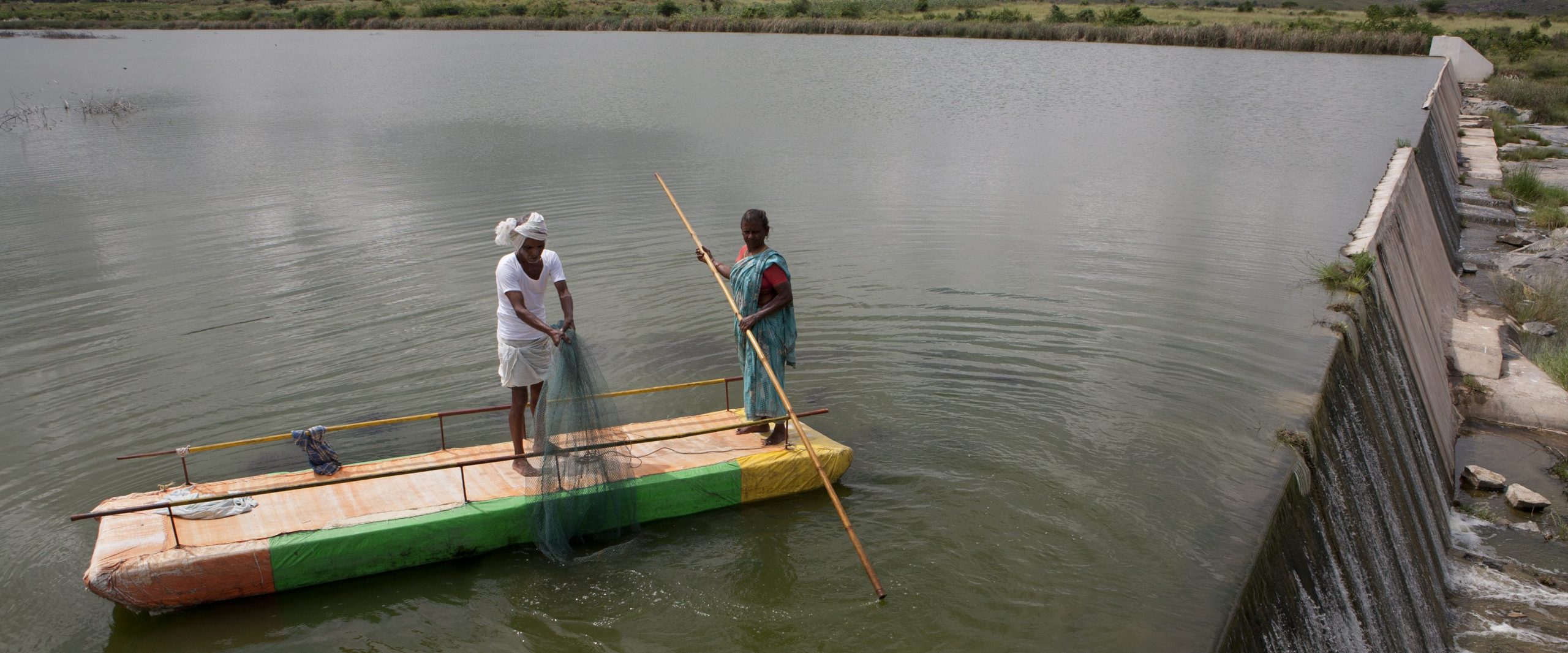
Saving millions of liters of water, raising the awareness of guests of the importance of sustainable practices and obtaining donations for aid projects in India , Guatemala and Indonesia are achievements that might have seemed overoptimistic a few years ago. © Javier Biscayar

Suzana Gomercic , senior vice president of European operations at Diamond Resorts, summarized the results of the initiative in their European facilities, pointing out that saving water had not been the only success: raising the awareness of guests and of the entire staff was much more revealing and encouraging. This was achieved with the development of educational and fun programs, such as the activities of the Aquanauts program for children and their families. Gomercic highlighted: “Combining sustainability and fun activities is ideal to raise awareness of cooperation and create positive habits that guests took home with them. Proof of the success is that we have managed to raise 40,000 euros in donations for the projects of the Foundation. We really managed to bring the message to life”.
More water is spent at the hotel than at home
Saving water is the first step towards a sustainable tourism industry. It is generally acknowledged that tourists consume more water than residents and in very different quantities depending on the destinations. The World Tourism Organization ( UNWTO ) states that in European hotels, every guest consumes on average around 394 liters per night; in Hong Kong, Singapore, Indonesia or Thailand, the average rises sharply to 677 liters, while in Barbados the figure rockets to 839 liters.
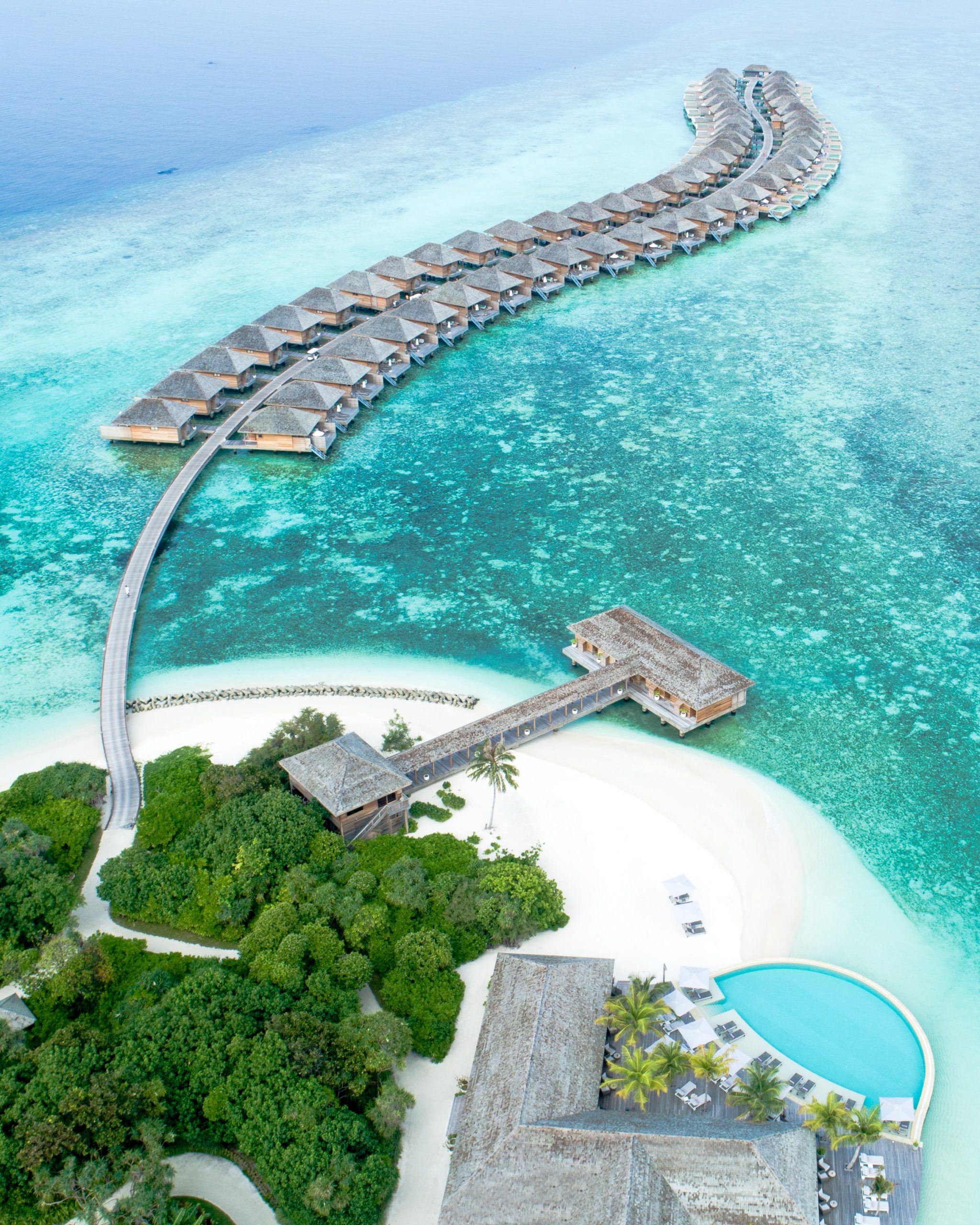
Sustainable tourism is one of the key industries for international economic recovery after the pandemic . © Shifaaz Shamoon-unsplash
If we compare this data to the consumption of guests in their homes, the contrast is striking: an average European consumes between 120 and 150 liters per day at home. If we consider the case of a citizen in Barcelona or Copenhagen, which consumes around 105 liters per day, one of the lowest consumptions in Europe, we see that they can multiply that consumption by four during their holidays in a Mediterranean hotel and by eight if they spend their vacation in a hotel in Barbados. In tourist destinations, per capita water consumption greatly increases when compared to domestic use.
These data are “per capita”; if we consider consumptions per room, in 2017, in tourist facilities in these countries, the usual consumption reached an average of 2,000 liters per day and in some cases even exceeded 3,400 liters per day.
Unsustainable pressure for many regions in the world
International tourism responds to the sun-and-beach claim: 85% of international tourists go to places with water scarcity, with a tendency to concentrate in the summer season in the northern hemisphere, as this is the part of the world that generates the most holiday travelers. The impact on the water resources of local communities is very high.
Recent research has provided in-depth analysis of consumption, offering data that must lead to reflection. Three months before the global lockdown, the University of Palma de Mallorca published a must-read study that advocates an urgent change in the management of water and in the environmental responsibility of hotel owners and tour operators.
These are recommendations that make up the conclusions of the experience of Let’s Make a Deal. The laundry service is an area with a high consumption of water and this is proportional to the number of stars of the facilities. In 3-star hotels it reaches a minimum percentage of 12% of the total consumption, but in luxury hotels located in tropical regions it can reach up to 50% of the total water expenditure, if no measures are taken to contain the laundering of sheets and towels. In these cases, the laundry service is the activity with the highest consumption.
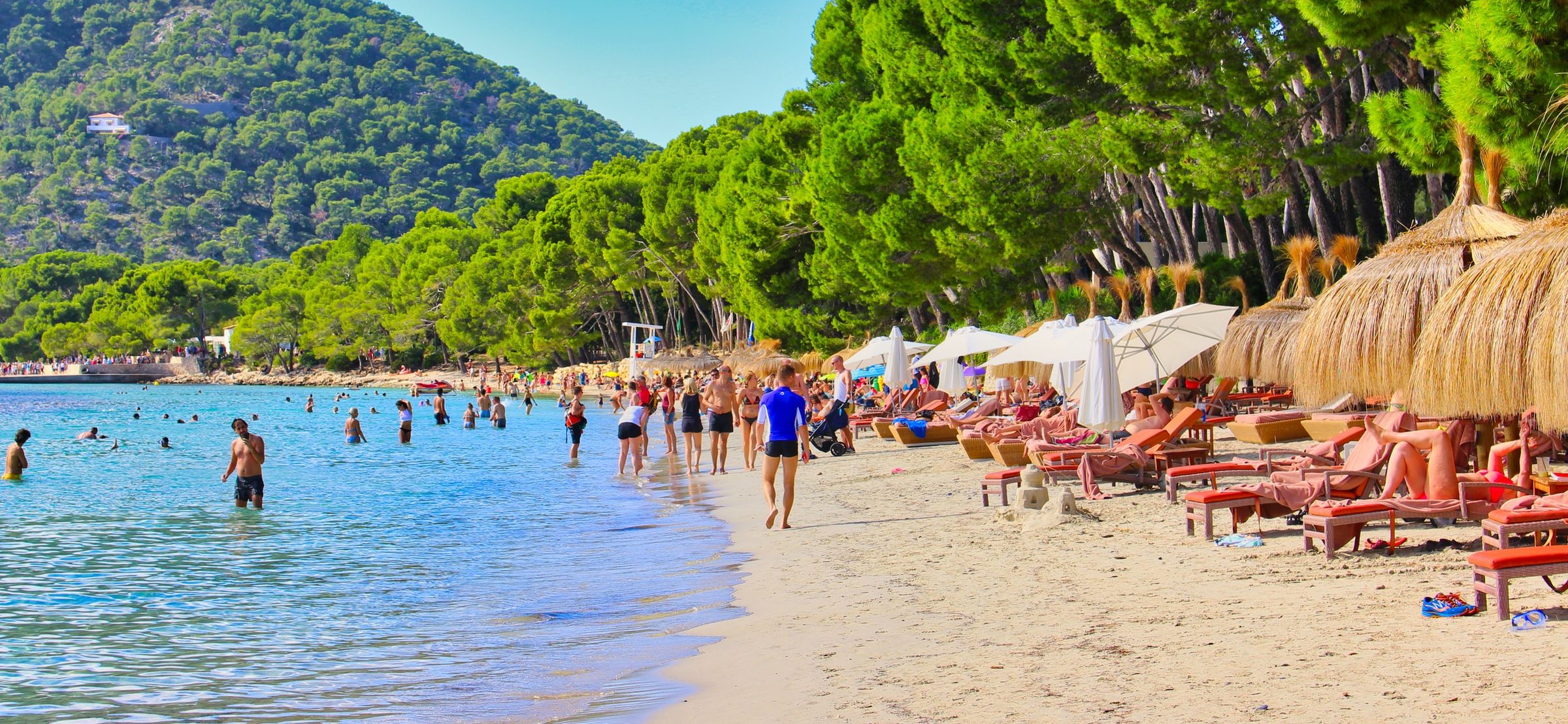
International tourism responds to the sun-and-beach claim: 85% of international tourists go to places with water scarcity. © dj Nick Otronic-unsplash
On the other hand, water consumption is correlated to electricity use. Efficient management measures and the use of recent technological resources can save an important amount of liters and kilowatts. A study by British and Spanish researchers estimates that a hotel with 100 rooms can save at least 227 liters per room and night by implementing the right measures. That hotel could save up to 16,573 m 3 of water, 209,541 kWh of energy and 58,436 euros every year.
Encouraging guests to reuse towels and bed sheets and to reduce the duration of their showers can save millions of liters of water all around the world; and many more if WCs with partial flush or faucets with flow limiters are installed. Water sustainability takes a step further in new hotels and resorts , which opt for water recycling for irrigation, the adoption of native flora in gardening, and the collection of rainwater for ecological vegetable gardens. The architecture and design of new tourist destinations are fully embracing smart technologies, using automatic systems that adjust water pressure, detect leaks and monitor consumption.
The tourism industry is aware of its incalculable potential as a tool for the creation of a sustainability culture, a culture that is one of the main assets to overcome the crisis caused by the pandemic. Even before lockdown, sustainable and environmentally-friendly tourism was key to improving a fair distribution of wealth; now it is even more important. With an estimated 1.8 billion travel arrivals worldwide by 2030, the way tourists consume water will determine the sustainability of the planet.
Related insights
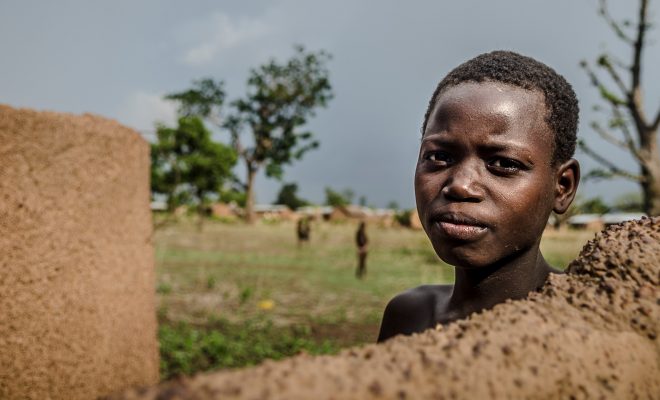
Sustainable tourism, a resilience factor
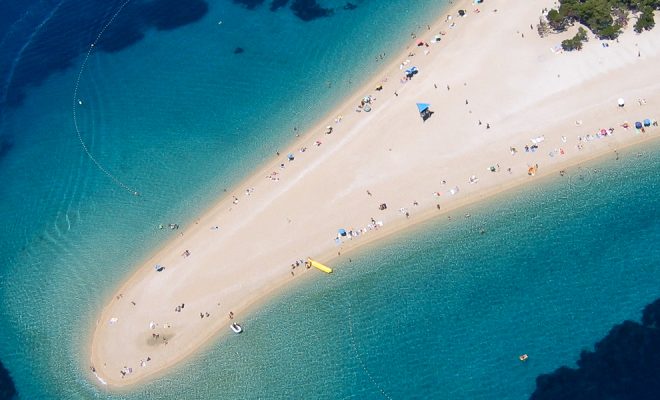
Tourism and water, a difficult relationship that should be exemplary
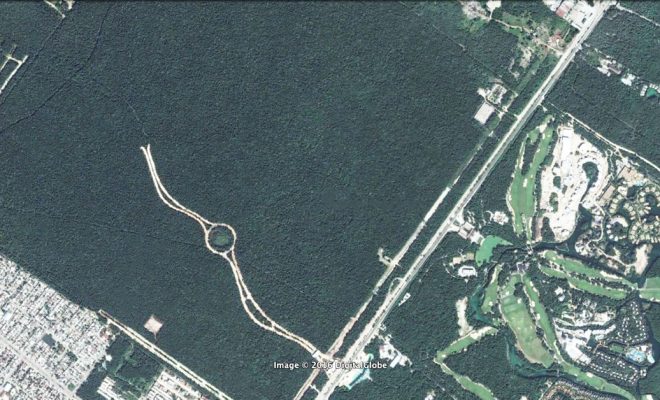
The care of water, an up and coming tourism value
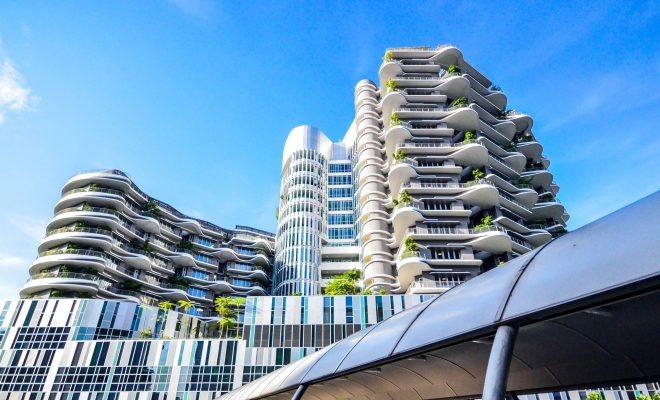
Smart Reaction: the opportunity is here and now
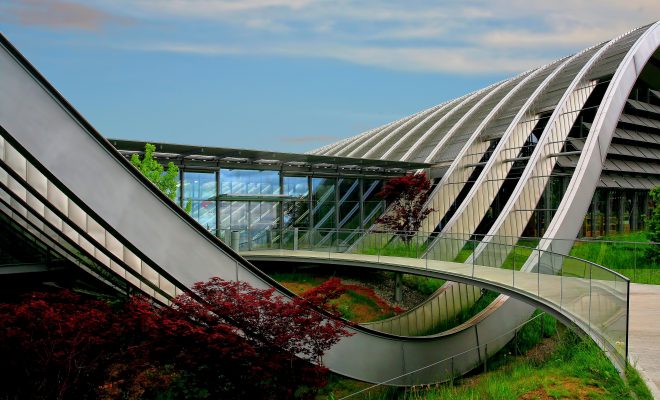
Smart Water, Smart Reaction: towards collective intelligence
Sign up to receive news about the water crisis and We Are Water projects.
" * " indicates required fields
UN Tourism | Bringing the world closer

share this content
- Share this article on facebook
- Share this article on twitter
- Share this article on linkedin
Waste Water (Sewage) Management
As with water also the management of wastewater (sewage) is a key concern for tourism and requires relevant monitoring efforts. If not properly managed it can lead through pollution to contamination of its key resources -beaches, lakes, rivers- and can harm wildlife and natural resources and subsequently the destination. Indicators in this area range, among others, from measuring the percentage of wastewater receiving treatment to the number of establishments participating in water conservation programmes.
PUBLICATIONS
PRESENTATIONS
OTHER RESOURCES
Ecomasteryproject
A Going Green Guide
Top 5 Water Conservation Strategies for Sustainable Tourism
Imagine you're standing at the edge of a dazzling lake, its pristine waters reflecting the golden hues of the setting sun. You take a moment to appreciate the beauty before realizing that this idyllic scene is not just a picturesque backdrop for your vacation, but also a fragile ecosystem in need of protection.
As the demand for tourism grows, so does the strain on our water resources. So, how can we ensure the sustainability of this precious liquid while still enjoying the wonders of travel?
In this discussion, we will explore the top five water conservation strategies for sustainable tourism, strategies that not only preserve the natural beauty of our destinations but also contribute to the long-term viability of our planet.
Table of Contents
Rainwater Harvesting
To effectively conserve water in a sustainable tourism setting, consider implementing rainwater harvesting techniques. By collecting and storing rainwater, you can reduce your dependence on traditional water sources and promote a more environmentally friendly approach to water management.
One of the key benefits of rainwater harvesting is the ability to have a dedicated water storage system. This allows you to collect and store rainwater during the wet season, ensuring a continuous supply of water during the dry season when water scarcity is more prevalent. By utilizing rainwater for non-potable uses such as irrigation and toilet flushing, you can significantly reduce your reliance on freshwater sources.
In addition to water storage, rainwater harvesting can also contribute to water purification efforts. By implementing simple filtration systems, you can remove contaminants and ensure the water is safe for various uses. This not only reduces the strain on traditional water treatment facilities but also promotes the use of natural, renewable resources.
To maximize the benefits of rainwater harvesting, it's important to invest in proper infrastructure and maintenance. This includes installing rainwater collection systems, implementing effective filtration methods, and regularly inspecting and cleaning the storage tanks. By taking these steps, you can effectively conserve water and contribute to the sustainability of your tourism operation.
Efficient Water Fixtures and Appliances
Consider upgrading your water fixtures and appliances to more efficient options to reduce water consumption in your sustainable tourism operation. By investing in water efficient technology, you can significantly decrease your water usage and contribute to the conservation of this precious resource.
Start by replacing old toilets with low-flow models that use less water per flush. These toilets are designed to maintain flushing power while using significantly less water, making them an ideal choice for sustainable tourism operations.
Additionally, consider installing aerators on faucets and showerheads to decrease water flow without sacrificing water pressure. These simple and affordable fixtures mix air with water, reducing the overall water consumption without compromising the guest experience.
When it comes to appliances, opt for water-efficient models such as dishwashers and washing machines that have a high energy star rating. These appliances are designed to use less water during operation, saving both water and energy.
Water Recycling and Reuse
If you're looking to further reduce water consumption in your sustainable tourism operation, one effective strategy to explore is water recycling and reuse. By implementing water recycling and reuse practices, you can significantly contribute to water scarcity management and water resource conservation.
Here are three practical ways to incorporate water recycling and reuse in your sustainable tourism operation:
- Greywater Recycling : Capture and treat greywater from sinks, showers, and laundry facilities. This treated water can then be reused for non-potable purposes such as landscape irrigation or toilet flushing.
- Rainwater Harvesting : Install rainwater collection systems to capture and store rainwater from rooftops. This collected water can be used for irrigation, reducing the reliance on treated water for landscaping.
- Water Treatment and Reuse Systems : Implement advanced water treatment technologies, such as membrane filtration or reverse osmosis, to treat wastewater. The treated water can then be reused for various purposes, including irrigation or even potable water in some cases.
Community Engagement and Education
Engage and educate the local community to foster sustainable water practices in your tourism operation.
Community involvement is crucial in promoting water conservation efforts. By engaging with the community, you can create awareness and encourage active participation in water-saving initiatives.
One effective way to engage the community is through awareness campaigns. These campaigns can be conducted through various channels, such as social media, local events, and workshops. Raise awareness about the importance of water conservation and share practical tips on how individuals can contribute.
Encourage community members to take ownership of their water usage and make conscious choices to reduce waste.
Additionally, education plays a vital role in creating long-term behavior change. Collaborate with local schools, community organizations, and tourism operators to develop educational programs focused on water conservation. These programs can include interactive workshops, field trips to water treatment facilities, and informative materials that highlight the impact of water consumption on the environment.
Sustainable Landscaping and Irrigation
To ensure the sustainability of your tourism operation's water conservation efforts, it's essential to implement sustainable landscaping and irrigation practices. By incorporating water efficient plants and practicing water wise gardening, you can significantly reduce water usage and contribute to a more sustainable environment.
Here are some strategies to consider:
- Choose water efficient plants : Opt for native or drought-tolerant plants that require less water to thrive. These plants have adapted to local conditions and can withstand periods of low rainfall.
- Mulch your garden : Applying a layer of organic mulch around plants helps retain moisture in the soil, reducing the need for frequent watering. Mulch also suppresses weeds, which compete for water resources.
- Install efficient irrigation systems : Replace traditional sprinklers with drip irrigation or micro-sprinkler systems. These systems deliver water directly to the plant's roots, minimizing evaporation and reducing water waste.
- Collect and reuse rainwater : Install rain barrels or cisterns to capture rainwater, which can then be used for irrigation purposes. This reduces reliance on freshwater sources and helps conserve water.
- Regularly maintain and monitor your irrigation system : Check for leaks, adjust watering schedules based on weather conditions, and ensure that your system is functioning efficiently. This will help avoid water waste and ensure optimal water usage.
Implementing these sustainable landscaping and irrigation practices won't only conserve water but also create a beautiful and eco-friendly environment for your tourism operation.
Congratulations! By implementing these top 5 water conservation strategies for sustainable tourism, you'll transform your destination into an oasis of conservation.
Rainwater harvesting will quench your thirst for sustainable practices, while efficient water fixtures and appliances will shower you with savings.
Water recycling and reuse will flow through your veins, and community engagement and education will ignite a wave of awareness.
Finally, sustainable landscaping and irrigation will bloom with beauty, ensuring a sustainable future for all.
Get ready to dive into a world of water conservation success!
- Shop Partners
Social Widget
Related post, why is teaching children about water conservation important, how agriculture practices can help prevent drought, drought-resistant landscaping: a how-to guide, what are the metrics for community water conservation programs, what are the latest technologies for community water conservation, what are inspiring community water conservation projects.
National Geographic content straight to your inbox—sign up for our popular newsletters here

Reusable water bottles are a traveler’s best friend. But how do you find potable water to fill them?
- PLANET OR PLASTIC?
6 plastic-free ways to travel with safe drinking water
These tips can help you stay hydrated and healthy while adventuring—and ditch single-use plastic while you do it.
Staying hydrated when you travel can be a challenge, particularly in places where tap water is unsafe or unavailable. Rather than reaching for a single-use plastic bottle and contributing to the world’s plastic problem , learn some new strategies for safe water consumption wherever you roam.
B.Y.O.F.B. (bring your own filtration bottle)
Travelers looking for an all-in-one approach might consider a self-contained filtration and purification bottle, with a combined filter and vessel that make it easy to clean, carry, and drink water on the go. LifeStraw uses a hollow fiber membrane and an activated carbon capsule to remove bacteria, parasites, and microplastics and to reduce foul odors and tastes. GRAYL takes its commitment to safe water consumption a step further, protecting against viruses as well.
Not all filtration bottles are created equal: Some rely on suction, others require pressure, some protect against a variety of pathogens and others don’t. Filter lifespans vary widely and aren’t available in all destinations, so you may need to pack extras. Carefully read product descriptions and instructions.
Disrupt dangerous DNA
There’s a good chance you’ve already consumed UV-purified water—bottling companies and municipal treatment plants often use this method. Thanks to lightweight, innovative products like Steripen and Larq Bottle , travelers can take similar tech on the road.
At specific intensities, ultraviolet light destroys the DNA of viruses, protozoa, and bacteria . With a touch of a button and a swirl of the wand, the Steripen fills the water with UV rays intended to kill more than 99 percent of bacteria and viruses in a few minutes.
While UV light has the power to purify, it doesn’t filter sediment, heavy metals, and other particulates, so it’s best to use UV devices in combination with a filter.
Personal filtration system
This is a good option if you prefer a filtration system that’s compact enough to travel and flexible enough to let you configure the components according to your needs.
The detachable filter on both the LifeStraw Flex and Sawyer Mini doubles as a straw for sipping directly from the water source and can be used on a hydration pack as well. Both systems use a hollow fiber membrane, but the Flex adds an activated carbon capsule to catch chemicals and heavy metals. The Flex filter requires replacement after about 25 gallons of use—much sooner than the Sawyer, which claims to last for 100,000.
Electrify to purify
Adventurers opting for lightweight convenience might also consider an electrolytic water purifying device. Small in size but big on results, the portable gadget zaps a simple brine solution—easily made on the spot from salt and water—with an electric current to create a disinfectant you can add to your water (up to 20 liters at a time) to destroy almost all pathogens.
Unlike UV devices, this type of disinfectant can perform in turbid water. The device is long-lasting and rechargeable—the Potable Aqua PURE is advertised to purify about 60,000 liters of water before replacement parts are required, and its battery can be charged via USB. If taste or chemical sensitivity are concerns, be aware that disinfectant does leave a chlorine residue in the water.
Keep tabs on chemical treatments
Chlorine tablets can be hazardous to handle and iodine tablets have been linked to health issues . And both leave treated water with an unpleasant odor and taste. One alternative is sodium dichloroisocyanurate (NaDCC): It’s affordable, easy to use, and achieves the same purifying results as chlorine, with fewer risks.
Drop a NaDCC purification tablet— Aquatabs are one example—in non-turbid water to release hypochlorous acid, which reduces most pathogens and renders the water drinkable after about 30 minutes. Keep in mind: This method doesn’t remove particulates or contaminants like pesticides. If you’re treating turbid water, it’s best to filter before dissolving the tablets. Remember to read the instructions for any time adjustments that may be required.
Speak up, set an example
Filtered water may be available for free—if you know where to look. Apps like RefillMyBottle and Tap can pinpoint water refill stations while you’re on the road.
Using water filtration and purification tools has helped Mike and Anne Howard, the husband-and-wife traveling duo HoneyTrek , globetrot continuously for over 2,000 days without breaking their no-plastic-bottles pact.
And sometimes it’s simply a matter of speaking up: The more travelers ask restaurants, hotels, and tour operators to refill their reusable water bottles, the more those services cater to demand—and the less single-use plastic gets used.
- Nat Geo Expeditions
FREE BONUS ISSUE
Related topics.
- WATER QUALITY
You May Also Like

Is tap water safe to drink? Here’s what you really need to know.

Here’s what worries engineers the most about U.S. infrastructure

How to deal with food poisoning while traveling—and how to avoid it altogether

What exactly is a red tide—and how does it affect humans?
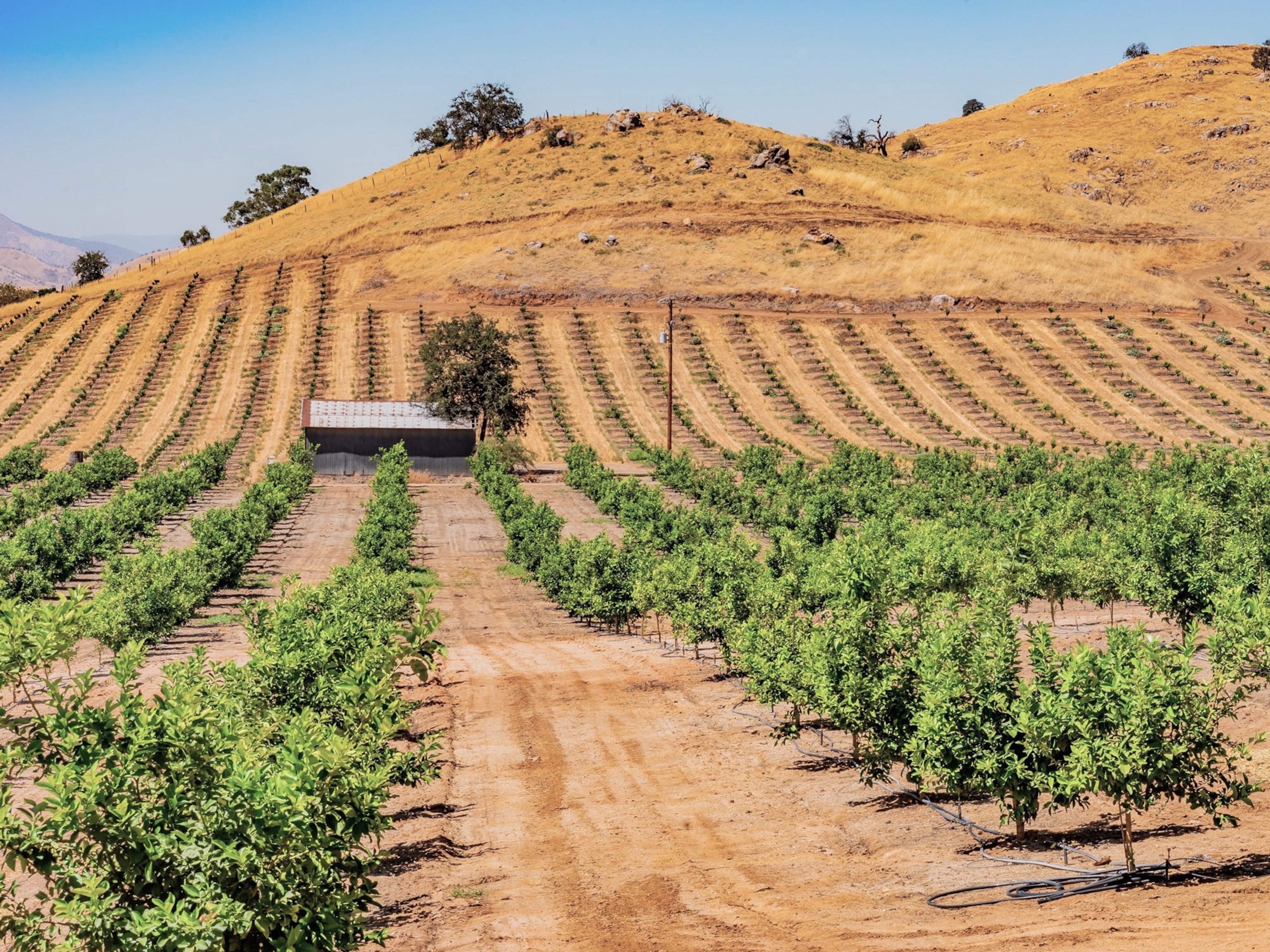
The deceptively simple plan to replenish California’s groundwater
- Environment
- Paid Content
History & Culture
- History & Culture
- History Magazine
- 2023 in Review
- Mind, Body, Wonder
- Terms of Use
- Privacy Policy
- Your US State Privacy Rights
- Children's Online Privacy Policy
- Interest-Based Ads
- About Nielsen Measurement
- Do Not Sell or Share My Personal Information
- Nat Geo Home
- Attend a Live Event
- Book a Trip
- Inspire Your Kids
- Shop Nat Geo
- Visit the D.C. Museum
- Learn About Our Impact
- Support Our Mission
- Advertise With Us
- Customer Service
- Renew Subscription
- Manage Your Subscription
- Work at Nat Geo
- Sign Up for Our Newsletters
- Contribute to Protect the Planet
Copyright © 1996-2015 National Geographic Society Copyright © 2015-2024 National Geographic Partners, LLC. All rights reserved
We inform you that Fundació Esade, as data controller, will process the data for the purpose of managing the registration and sending the DoBetter Newsletter. No data communications will take place The interested party may exercise, if desired, the rights of access, rectification, and deletion of data, as well as request that the processing of personal data be limited, oppose to it, request the portability of their data, not to be subject to automated individual decisions, where appropriate, as well as to withdraw their consent at any time by contacting the Data Protection Officer at [email protected] You can consult additional and detailed information on Data Protection here

Making better decisions for sustainable tourism water management
- Global agenda
- Compartir en Twitter
- Compartir en Linked in
- Compartir en Facebook
- Compartir en Whatsapp Compartir en Whatsapp
- Compartir en e-Mail
This article is based on research by Mar Vila , Núria Agell & Gerard Costa
Tourism is adapting to a new kind of growth. Many destinations are prioritising sustainable growth , rather than just economic growth. Managing water usage to mitigate the environmental impact of visitors is a major factor in this new scenario.
Global water use has tripled over the last 50 years. However, tourism is only relevant as a significant factor in a few countries because agriculture and industry generally use much more water than visitors.
The situation, however, changes when trends are considered and water demand is concentrated in time and space. Seasonal tourist concentrations usually peak when water is scarce, and tourist spatial concentrations usually occur on the coast.
Global water use has tripled over the last 50 years
Tourism may contribute to improvements in water quality , such as when sewage treatment systems are built that also process local wastewater, or when treatment systems are installed to improve local water quality to meet tourist expectations. However, tourism can also worsen water quality.
The use of water by tourism activities is likely to rise due to increased tourist numbers, higher hotel standards , and the growth of water-intensive activities. Climate change may also have consequences for water availability.
Given these trends, the efficient management of water is crucial for ensuring sustainable tourism destinations.
Esade Professors Mar Vila, Núria Agell, and Gerard Costa, together with postdoctoral researcher Arayeh Afsordegan, and Mónica Sánchez from UPC-Barcelona Tech, investigated the subject.
"Our goal was to present a new methodology that guides decision-making for water managers," state the authors. "To develop this method, we ran a structured selection of factors that affect these decisions, and considered stakeholder preferences for technical, economic, social, political and environmental aspects."
The methodology guides decision-making for water managers
In their paper, Influential factors in water planning for sustainable tourism , published in the Journal of Sustainable Tourism , the authors present a new qualitative technique for making decisions about water use.
Water pressures
The researchers focus on the Costa Brava, in the Spanish region of Catalonia on the Mediterranean coast. As one of Spain’s major summer tourist destinations , the Costa Brava sees its population rise from around 250,000 to over one million in July and August.
Tourism is the region’s main socioeconomic activity , but the Costa Brava suffers from limited water resources, and its geography creates complex water-management challenges during the hot and dry summer months.

The public water utility, the Costa Brava Consortium (CCB), must decide which measures to take after considering energy and investment costs , as well as social and environmental factors. There are multiple stakeholders, often with complex, non-obvious and competing priorities.
This means that when making a decision-making analysis , the CCB must consider multiple criteria before selecting the relevant factors and assessing possible solutions or scenarios.
Qualitative Delphi method and decision making
The work presented by the research team at Esade forms part of a longer ongoing project on sustainable water management , but an important methodological solution is delivered at this stage. At its core is the Delphi technique, which the researchers describe as "a well-known group decision-making method for reaching consensus among a panel of experts or stakeholders on the significant features of a certain topic."
For sustainable water management, decision-makers must consider the various technical, economic, social, political and environmental factors that matter to stakeholders and select a list of influential factors.
The Delphi technique uses questionnaires to extract information – but this has limitations. Experts may find it difficult to give opinions in uncertain situations, or with imperfect knowledge.
The Delphi technique uses computational linguistics to summarise the opinion of many stakeholders and find potential solutions for responsible water management
Other technical problems can arise due to imprecision when labelling linguistic terms . To overcome these drawbacks, the team created a new integrated Q-Delphi (Qualitative Delphi) method based on computational linguistics for water use planning.
"The methodology makes it possible for tourist destinations to better capture opinions on multi-dimensional concepts without losing or misrepresenting information," explain the authors.
The method considers the intensity of preferences and, crucially, it allows experts to respond with uncertainty.
The Q-Delphi technique enables the CCB to select and rank indicators, weighing the relevance and importance of factors such as energy consumption, job creation, land use, tourist satisfaction and political acceptance, for experts in tourism, water management, hotel management and others.
The complexity given by the existence of multiple stakeholders with diverse – and sometimes competing perspectives – justifies the need and hence the contribution of this method.
The main benefit is that it provides a ranked list of factors , which can be qualitative and quantitative, that summarises the opinion of many stakeholders.
"By having various values for each indicator in each solution, a global result can be obtained that summarises all the relevant factors – and so it is easy to compare scenarios," write the researchers.
For the CCB and other water-management decision-makers, implementing solutions chosen in this way means more sustainable and responsible water management.
The results obtained in the Costa Brava case show that the final selection of indicators is a combination of quantitative factors (energy consumption, investment, operational costs, and water losses) and qualitative factors (water quality, public health, tourist satisfaction, and public acceptance).
Related programmes
Sustainable business models - sustbus, executive master in finance - emf, do you want to receive the do better newsletter.
Subscribe to receive our featured content in your inbox.
- Business law
- People & talent
- Strategy & business models
- Women in business
- Geopolitics & global risks
- Global governance
- Global markets
- International economy
- Sustainable development
- Data science & behavioural insights
- Entrepreneurship
- Future of education
- Technological change & digital transformation
- Ethics in business
- Managing diversity
- Public purpose
- Social cohesion & inclusiveness
- Technology & people

Clean Water and Sanitation pp 1–12 Cite as
Water Use in the Tourism Accommodation Sector
- Albert Llausàs 7 , 8
- Living reference work entry
- First Online: 24 September 2020
182 Accesses
Part of the book series: Encyclopedia of the UN Sustainable Development Goals ((ENUNSDG))
Lodging sector ; Water Consumption
Definitions
Water use is water that is withdrawn from its source for a specific purpose (agriculture, industry, etc.). Water demands by the tourism accommodation sector are usually classified in the wider category of domestic water use. Whereas the term water consumption is defined as the portion of water use that is not returned to the original source after being withdrawn, in studies addressing domestic water, “use,” and “consumption” are often used interchangeably.
Tourism accommodation sector is part of the hospitality industry, which specializes in offering lodging (e.g., hotels, youth hostels, campsites, motels) to travelers.
Introduction: Water, Tourism, and Sustainability
Based on a rough average of the data collected by international organizations such as the World Bank, FAO, or OECD, it is possible to state that around 70% of the fresh water that humans extract from the planet is allocated to agricultural uses, 20% supports...
This is a preview of subscription content, log in via an institution .
Ayuso S (2006) Adoption of voluntary environmental tools for sustainable tourism: analysing the experience of Spanish hotels. Corp Soc Responsib Environ Manag 13:207–220
Article Google Scholar
Bohdanowicz P (2006) Environmental awareness and initiatives in the Swedish and polish hotel industries—survey results. Int J Hosp Manag 25:662–682
Butler J (2008) The compelling “hard case” for “green” hotel development. Cornell Hosp Q 49:234–244
Chan WW (2009) Environmental measures for hotels’ environmental management systems: ISO 14001. Int J Contemp Hosp Manag 21:542–560
Chan ES (2011) Implementing environmental management systems in small- and medium-sized hotels: obstacles. J Hosp Tour Res 35:3–23
Charara N, Cashman A, Bonnell R, Gehr R (2011) Water use efficiency in the hotel sector of Barbados. J Sustain Tour 19:231–245
Cole S (2012) A political ecology of water equity and tourism. Ann Tour Res 39:1221–1241
Deyà Tortella B, Tirado D (2011) Hotel water consumption at a seasonal mass tourist destination. The case of the island of Mallorca. J Environ Manag 92:2568–2579
Dinarès M, Saurí D (2015) Water consumption patterns of hotels and their response to droughts and public concerns regarding water conservation: the case of the Barcelona hotel industry during the 2007-2008 episode. Documents d’Anàlisi Geogràfica 61:623–649
Drius M, Bongiorni L, Depellegrin D, Menegon S, Pugnetti A, Stifter S (2019) Tackling challenges for Mediterranean sustainable coastal tourism: an ecosystem service perspective. Sci Total Environ 652:1302–1317
Article CAS Google Scholar
European Commission (2016) European tourism indicators system for sustainable destination management. In: Internal market, industry, entrepreneurship and SMEs - European Commission. https://ec.europa.eu/growth/sectors/tourism/offer/sustainable/indicators_en . Accessed 11 July 2020
Gabarda-Mallorquí A, Garcia X, Ribas A (2017) Mass tourism and water efficiency in the hotel industry: a case study. Int J Hosp Manag 61:82–93
Garay L, Font X (2012) Doing good to do well? Corporate social responsibility reasons, practices and impacts in small and medium accommodation enterprises. Int J Hosp Manag 31:329–337
González-Rodríguez MR, Martín-Samper RC, Köseoglu MA, Okumus F (2019) Hotels’ corporate social responsibility practices, organizational culture, firm reputation, and performance. J Sustain Tour 27:398–419
Gössling S (2015) New performance indicators for water management in tourism. Tour Manag 46:233–244
Gössling S, Peeters P, Hall CM, Ceron J-P, Dubois G, Lehmann LV, Scott D (2012) Tourism and water use: supply, demand, and security. An international review. Tour Manag 33:1–15
Gössling S, Hall CM, Scott D (2015) Tourism and water. Channel View Publications, Bristol
Book Google Scholar
Han H, Yu J, Lee J-S, Kim W (2019) Impact of hotels’ sustainability practices on guest attitudinal loyalty: application of loyalty chain stages theory. J Hosp Market Manag 28:905–925
Google Scholar
Hillary R (2004) Environmental management systems and the smaller enterprise. J Clean Prod 12:561–569
Hof A, Schmitt T (2011) Urban and tourist land use patterns and water consumption: evidence from Mallorca, Balearic Islands. Land Use Policy 28:792–804
Hof A, Morán-Tejeda E, Lorenzo-Lacruz J, Blázquez-Salom M (2018) Swimming pool evaporative water loss and water use in the Balearic Islands (Spain). Water 10:1883
Jenkins K, Warren R (2015) Quantifying the impact of climate change on drought regimes using the standardised precipitation index. Theor Appl Climatol 120:41–54
Kallis G (2001) The EU water framework directive: measures and implications. Water Policy 3:125–142
Kapmeier F, Gonçalves P (2018) Wasted paradise? Policies for Small Island states to manage tourism-driven growth while controlling waste generation: the case of the Maldives: F. Kapmeier and P. Gonçalves: managing tourism-driven growth and waste generation. Syst Dyn Rev 34:172–221
Kasim A (2007) Corporate environmentalism in the hotel sector: evidence of drivers and barriers in Penang, Malaysia. J Sustain Tour 15:680–699
Kasim A, Gursoy D, Okumus F, Wong A (2014) The importance of water management in hotels: a framework for sustainability through innovation. J Sustain Tour 22:1090–1107
Kim J-Y, Hlee S, Joun Y (2016) Green practices of the hotel industry: analysis through the windows of smart tourism system. Int J Inf Manag 36:1340–1349
Llausàs A, Padullés Cubino J, Ribas Palom A (2020) Small and medium-sized accommodation managers and opportunities for water conservation. Pasos 18:129–142
Mensah I (2006) Environmental management practices among hotels in the greater Accra region. Int J Hosp Manag 25:414–431
Pachauri RK, Allen MR, Barros VR, Broome J, Cramer W, Christ R, Church JA, Clarke L, Dahe Q, Dasgupta P (2014) Climate change 2014: Synthesis report. Contribution of working groups I, II and III to the Fifth assessment report of the Intergovernmental Panel on Climate Change
Park J, Jeong Kim H, McCleary KW (2014) The impact of top management’s environmental attitudes on hotel companies’ environmental management. J Hosp Tour Res 38:95–115
Rahman I, Reynolds D, Svaren S (2012) How “green” are North American hotels? An exploration of low-cost adoption practices. Int J Hosp Manag 31:720–727
Razumova M, Ibáñez JL, Palmer JR-M (2015) Drivers of environmental innovation in Majorcan hotels. J Sustain Tour 23:1529–1549
Razumova M, Rey-Maquieira J, Lozano J (2016) The role of water tariffs as a determinant of water saving innovations in the hotel sector. Int J Hosp Manag 52:78–86
Ricart S, Arahuetes A, Villar R, Rico AM, Berenguer J (2019) More water exchange, less water scarcity? Driving factors from conventional and reclaimed water swap between agricultural and urban-tourism activities in Alicante, Spain. Urban Water J 16:677–686
Rico A, Olcina J, Baños C, Garcia X, Sauri D (2020) Declining water consumption in the hotel industry of mass tourism resorts: contrasting evidence for Benidorm, Spain. Curr Iss Tour 23:770–783
Rico-Amoros AM, Olcina-Cantos J, Sauri D (2009) Tourist land use patterns and water demand: evidence from the Western Mediterranean. Land Use Policy 26:493–501
Robinot E, Giannelloni J-L (2010) Do hotels’ “green” attributes contribute to customer satisfaction? J Serv Market 24:157–169
Scott D, Gössling S (2015) What could the next 40 years hold for global tourism? Tour Recreat Res 40:269–285
Sinha A, Driha O, Balsalobre-Lorente D (2020) Tourism and inequality in per capita water availability: is the linkage sustainable? Environ Sci Pollut Res 27:10129–10134
Styles D, Schoenberger H, Galvez-Martos JL (2015) Water management in the European hospitality sector: best practice, performance benchmarks and improvement potential. Tour Manag 46:187–202
Torres-Bagur M, Ribas A, Vila-Subirós J (2019) Incentives and barriers to water-saving measures in hotels in the Mediterranean: a case study of the Muga river basin (Girona, Spain). Sustainability 11:3583
Untaru E, Ispas A, Han H (2020) Exploring the synergy between customer home-based and hotel-based water consumption and conservation behaviors: an empirical approach. J Consum Behav cb.1826
UN-Water (2020) United nations world water development report 2020: water and climate change. UNESCO - United Nations Educational, Scientific and Cultural Organization, Paris
UNWTO (2019) International tourism highlights, 2019 edition. World Tourism Organization (UNWTO), Madrid, Spain.
UNWTO (2020) Tourism for SDGs. http://tourism4sdgs.org/ . Accessed 13 July 2020
Warren C, Becken S (2017) Saving energy and water in tourist accommodation: a systematic literature review (1987-2015). Int J Tour Res 19:289–303
WEF (2020) The global risks report 2020. World Economic Forum, Geneva
Woodside AG (2009) Applying systems thinking to sustainable golf tourism. J Travel Res 48:205–215
Yoon H, Sauri D, Rico Amorós A (2018) Shifting scarcities? The energy intensity of water supply alternatives in the mass tourist resort of Benidorm, Spain. Sustainability 10:824
Download references
Author information
Authors and affiliations.
Department of Geography, University of Valencia, Valencia, Spain
Albert Llausàs
Institute of the Environment, University of Girona, Girona, Spain
You can also search for this author in PubMed Google Scholar
Corresponding author
Correspondence to Albert Llausàs .
Editor information
Editors and affiliations.
European School of Sustainability, Hamburg University of Applied Sciences, Hamburg, Hamburg, Germany
Walter Leal Filho
Center for Neuroscience & Cell Biology, University of Coimbra, Coimbra, Portugal
Anabela Marisa Azul
Faculty of Engineering and Architecture, Passo Fundo University Faculty of Engineering and Architecture, Passo Fundo, Brazil
Luciana Brandli
HAW Hamburg, Hamburg, Hamburg, Germany
Amanda Lange Salvia
International Centre for Thriving, University of Chester, Chester, UK
Section Editor information
Centre for Social Studies, Coimbra, Portugal
Paula Lopes
Rights and permissions
Reprints and permissions
Copyright information
© 2020 Springer Nature Switzerland AG
About this entry
Cite this entry.
Llausàs, A. (2020). Water Use in the Tourism Accommodation Sector. In: Leal Filho, W., Azul, A.M., Brandli, L., Lange Salvia, A., Wall, T. (eds) Clean Water and Sanitation. Encyclopedia of the UN Sustainable Development Goals. Springer, Cham. https://doi.org/10.1007/978-3-319-70061-8_159-1
Download citation
DOI : https://doi.org/10.1007/978-3-319-70061-8_159-1
Received : 03 August 2020
Accepted : 05 August 2020
Published : 24 September 2020
Publisher Name : Springer, Cham
Print ISBN : 978-3-319-70061-8
Online ISBN : 978-3-319-70061-8
eBook Packages : Springer Reference Earth and Environm. Science Reference Module Physical and Materials Science Reference Module Earth and Environmental Sciences
- Publish with us
Policies and ethics
- Find a journal
- Track your research
- Architecture and Design
- Asian and Pacific Studies
- Business and Economics
- Classical and Ancient Near Eastern Studies
- Computer Sciences
- Cultural Studies
- Engineering
- General Interest
- Geosciences
- Industrial Chemistry
- Islamic and Middle Eastern Studies
- Jewish Studies
- Library and Information Science, Book Studies
- Life Sciences
- Linguistics and Semiotics
- Literary Studies
- Materials Sciences
- Mathematics
- Social Sciences
- Sports and Recreation
- Theology and Religion
- Publish your article
- The role of authors
- Promoting your article
- Abstracting & indexing
- Publishing Ethics
- Why publish with De Gruyter
- How to publish with De Gruyter
- Our book series
- Our subject areas
- Your digital product at De Gruyter
- Contribute to our reference works
- Product information
- Tools & resources
- Product Information
- Promotional Materials
- Orders and Inquiries
- FAQ for Library Suppliers and Book Sellers
- Repository Policy
- Free access policy
- Open Access agreements
- Database portals
- For Authors
- Customer service
- People + Culture
- Journal Management
- How to join us
- Working at De Gruyter
- Mission & Vision
- De Gruyter Foundation
- De Gruyter Ebound
- Our Responsibility
- Partner publishers

Your purchase has been completed. Your documents are now available to view.
Water resources utilization and tourism environment assessment based on water footprint
With population growth and economic development, global Water Resources (WR) are becoming increasingly scarce. As an important consumer sector, the tourism industry is increasingly consuming and polluting WR. How to reasonably utilize WR and protect the water environment has become an important issue for the sustainable development of the current tourism industry.
Based on the Water Footprint of WR utilization and tourism environment assessment, this article used four different WR management schemes in different tourist areas to compare with the traditional scheme.
According to the experimental results, it could be concluded that the wastewater discharge and environmental risk index under low Water Consumption technology in a certain mountainous tourist attraction were approximately 90,000 m 3 and 0.25, respectively; the wastewater discharge and environmental risk index of a certain tourist city using renewable water technology were approximately 600,000 m 3 and 0.5, respectively. The impact of adopting different WR management schemes in different regions has also varied.
This also indicated that when formulating WR management plans for various tourist areas, it was necessary to fully consider the impact of the tourism environment and develop scientific and reasonable management measures. The research in this article has broad application prospects in practice, which helped to promote sustainable economic development and progress in social civilization.
1 Introduction
With the increase of population and the acceleration of urbanization, the contradiction between the supply and demand of Water Resources (WR) has become increasingly prominent. As a comprehensive WR evaluation index, Water Footprint (WF) has gradually become a widely used term in the research field. The shortage of resources and pollution have become important issues that constrain the sustainable development of human society. The traditional WR assessment mainly focuses on the supply side, while the WF pays more attention to the use side, which can more comprehensively reflect the human use of WR. WF can provide a reference for WR management by considering production, consumption, international trade, and other factors to evaluate the utilization efficiency of WR as a whole. In addition, tourism, as one of the important pillars of China’s economy, has also become an important field of WR utilization. The tourism industry not only requires a large amount of WR to support its development, but also has a certain impact on the local water environment. The evaluation of WR utilization based on WF can be analyzed as a whole at the macro level, to improve the utilization efficiency of WR and maximize profit. The concept of WF fully considers the recycling of WR and can provide reasonable WR utilization strategies for relevant departments. The rapid development of the tourism industry is also increasing the demand for WR, but the development of the tourism industry also faces problems such as environmental pollution and ecological damage. In this context, tourism environmental impact assessment based on WF plays a very positive role in the green transformation of tourism and the popularization of environmental awareness. By calculating and comparing the WF of different types of tourism, the utilization of local WR by tourism can be more comprehensively understood, to adjust the development direction of tourism and further promote the sustainable development of tourism. The WR utilization and tourism environment assessment based on WF can grasp the utilization efficiency and profit of WR as a whole and provide a reference for WR management and the green development of tourism.
Through the assessment of the WF of the tourism industry, the consumption and pollution of WR by the tourism industry can be found, and more reasonable WR utilization strategies and environmental protection measures can be formulated to promote the sustainable development of the tourism industry. Yang used the data envelopment analysis Tobit two-stage model to evaluate the efficiency of WR utilization, and analyzed the regional differences and influencing factors of WR utilization [ 1 ]. Tibet is China’s province with the largest international river and WR reserves. Considering the negative output of WR utilization, Xie used a super-efficiency relaxation measure model to measure the WR utilization efficiency of Tibet and the Tibetan region from 2006 to 2016 [ 2 ]. Wang established a quantitative model based on system dynamics theory to reflect the coupled system of “socio-economic water environment.” He chose Hubei Province, China, to validate the model. The results indicated that the water supply and demand and pollution pressure under the sustainable development scenario were lower than those under the other two scenarios. This meant that the role of industrial structure adjustment in alleviating water supply and demand pressure was relatively weak [ 3 ]. The evaluation of WR utilization and tourism environment based on WF has important background significance.
WF is an indicator to measure the utilization of WR. It can comprehensively consider the consumption and pollution of water and more comprehensively evaluate the utilization of WR. The United States is the world’s largest producer of goods and services. Rainfall, surface water supply, and groundwater aquifers are basic inputs for economic production. Marston Landon calculated the WF of more than 500 food, energy, mining, services, manufacturing, and commodities in the United States. A data-intensive method was adopted to integrate WF and input-output technology into a new methodology framework. This method could help to understand the WR in the United States economy, to enable supply chain managers to assess direct and indirect water dependence [ 4 ]. The concept of WF is considered very valuable in raising people’s awareness of the large amount of WR needed to produce and consume food. Vanham Davy provided three major European countries (Britain, France, and Germany) with a geographically detailed national WF related to food consumption. Using socio-economic data, national food survey, and international food consumption and WF databases, the national WF data could be refined to the smallest possible administrative boundary within a country [ 5 ]. However, they did not provide corresponding rectification suggestions for the shortcomings of these plans.
To enhance the utilization efficiency of WR and improve the ecological environment of tourism, this article focused on the analysis of WR utilization and tourism environment assessment based on WF and analyzed different tourism and different WR management schemes. According to the experimental results, it could be concluded that different WR management schemes had different effects in different tourism industries. Some were better than traditional solutions, while others were not as good as traditional solutions. The innovation of this article was to use the theory of WF, comprehensively consider Water Consumption (WC) and pollution, and more comprehensively evaluate the WR utilization of tourism. When proposing improvement suggestions, full consideration should be given to the sustainable development of the tourism industry and environmental protection, which could ensure the efficiency of WR utilization and reduce WR consumption and pollution.
2 Calculation algorithm of WF
The WF refers to the amount of freshwater used by a person, a community, or a country in the production and consumption process. WF is a comprehensive indicator, which is used to measure the amount of WR used by a country, region, or individual in the production and consumption process. According to different types of WF, it can be divided into blue WF, green WF, and gray WF. The process framework for WR utilization and tourism environment evaluation is shown in Figure 1 .

Framework diagram of WR utilization and tourism environment evaluation.
2.1 Calculation and evaluation of gray WF
With the rapid development of China’s tourism industry, the demand for WR in the tourism industry is increasing, which also brings about the problem of gray water discharge. Gray water refers to living sewage other than toilet sewage, including sewage generated from laundry, bathing, and dishwashing. Grey water can be purified through simple physical and biological treatment processes, and can then be used for irrigating plants, flushing toilets, cleaning floors, and other nondrinking water purposes, thereby achieving WR conservation and recycling.
With the continuous development of the tourism industry, the discharge of gray water has been increasing year by year. According to statistics, the overall gray water discharge from China’s tourism industry reached approximately 50.89 billion cubic meters in 2018. Among them, gray water discharge from hotels and tourist attractions accounts for the largest proportion [ 6 , 7 ]. At present, the gray water discharge standards for China’s tourism industry are relatively lagging, and some regions have not even formulated the corresponding gray water discharge standards. This has led to non-standard discharge standards for gray water in the tourism industry, making it difficult to unify management and supervision, which has had a certain impact on the environment. Especially in the peak tourist season, the capacity of gray water treatment facilities in some tourist attractions and hotels is insufficient, which makes it difficult to effectively treat the gray water discharge and has a certain impact on the surrounding environment. The treatment of gray water discharge in the tourism industry faces certain difficulties and challenges [ 8 , 9 ]. On the one hand, the discharge of gray water from the tourism industry involves multiple departments and fields, making governance difficult. On the other hand, some tourist attractions and hotels have problems such as irregular gray water discharge, lack of treatment facilities, and high treatment costs [ 10 , 11 ].
2.1.1 Agricultural gray WF
This article selected the value of nitrogen element as the evaluation standard and used the surface pollution source formula for calculation. The formula is as follows:
Among them, GWF xhk is the agricultural gray WF; β is the proportion of nitrogen fertilizer entering the unit water body; variable Xqqz is the amount of nitrogen fertilizer used; E max is the concentration of pollutant water quality; E mxd is the natural local concentration of the storage water body.
2.1.2 Industrial ash WF
The key pollutants in industrial sewage are chemical oxygen demand and ammonia nitrogen, so the above two are selected as indicators to calculate industrial ash WF:
Among them, GWF jmt ( j ) refers to the industrial ash WF based on the j -type pollutant; Z jmt ( j ) is the emission load of the j th industrial pollutant; GWF jmt represents the total WF of industrial ash; S ct is the discharge amount of industrial wastewater.
2.1.3 Living ash WF
Living sewage and industrial sewage are both point source pollution, and their key pollutants are the same as industrial sewage. Therefore, the calculation formulas of living ash WF are as follows:
2.1.4 Regional total gray WF
The total ash WF can be obtained by summing the agricultural, industrial, and living ash WF. The calculation formula is as follows:
Among them, TGWF is the total gray WF.
2.2 China gray WF rectification suggestions
The current situation of China’s tourism gray WF cannot be ignored. In order to achieve the sustainable development of tourism, it is necessary to strengthen the management and supervision of graywater discharge in tourism and formulate the corresponding graywater discharge standards, to strengthen the construction, operation, and maintenance of graywater treatment facilities in tourist attractions and hotels. It also needs to promote cleaner production, water-saving technology, and other means, and reduce the waste and pollution of WR, to jointly achieve the sustainable development of tourism [ 12 , 13 ].
2.2.1 Improved regional balance
To improve the gray WF in China’s economy, it is necessary to adjust the traditional industrial structure, increase the independent research and development of wastewater treatment technology, and formulate a set of scientific and practical wastewater treatment schemes. At the same time, it is also necessary to carry out discharge permission and water environment monitoring for wastewater, to gradually improve the utilization efficiency of WR, minimize the gray WF of each region, and improve the environmental fairness of WR [ 14 , 15 ]. Scientific and feasible wastewater treatment schemes include biological treatment, chemical treatment, physical treatment, plant treatment, and so on. The eastern region should focus on the remediation of water pollution in provinces and cities with high internal gray WF and conduct a comprehensive investigation of pollution sources, to promote the innovation of sewage treatment technology and improve the urban drainage network and the normalized urban and rural water quality monitoring system. Reducing the gray WF in the central and western regions is the key to improving the balance of China’s gray WF and improving the equity of the water environment. Therefore, it is necessary to do the following work: On the basis of promoting efficient farmland irrigation technology, it is necessary to reduce the loss of pesticides and fertilizers, develop ecological agriculture, and gradually replace fertilizers; it is necessary to strengthen the management of high pollution industries, complete rectification within the specified time, and vigorously develop “green” industries; while implementing sewage treatment projects, the construction of sewage treatment projects should be strengthened to fully utilize their functions; on this basis, further research and development would be carried out on a water quality purification system suitable for the local area.
2.2.2 Improved structural balance
Improving the balance degree of agricultural gray WF : Improving the balance degree of China’s economic aggregate gray WF and controlling water pollution are the key work of each major agricultural pollution province. In the planting industry, various effective irrigation methods are adopted based on the local situation, and soil testing and fertilization formulas are applied. Biopesticide technology is developed, and economic subsidies are provided to farmers developing ecological agriculture. In the aquaculture industry, reasonable scale control has been implemented for livestock and poultry farming. Feed quality has been adjusted, and dry and fecal cleaning technologies have been promoted to minimize pollution emissions. On this basis, people have proposed a sustainable development model with livestock and poultry breeding, biogas production, and composting as the main goals. Livestock and poultry breeding biogas production composting is a production mode that comprehensively utilizes livestock and poultry manure. Specifically, the feces generated during livestock and poultry farming can be fermented to produce biogas and compost, which can be used for energy and fertilizer production, thus achieving waste resource utilization and environmental protection. Improving the balance of industrial sewage footprint : Heat energy and process water should be saved, and the reuse of industrial water should be improved by using technologies such as sewage closed-circuit reuse; by diverting clean and dirty water from drainage pipelines, the sewage treatment and standard discharge rate can be improved; for enterprises with severe pollution, rectification can be carried out within the specified time to meet the requirements. Improving the level-by-level balance of living wastewater : The resource utilization of living wastewater should be promoted, and public ecological awareness should be raised. Water prices and sewage treatment costs should be adjusted, and the scope of collection should be expanded. Collection standards should be raised, and the popularization of living wastewater treatment facilities and water-saving equipment in underdeveloped areas should be accelerated, thereby improving the fairness of the water environment. Before the sewage enters the sewage treatment plant, pretreatment facilities such as grids, sand settling tanks, and regulating tanks can be set up to pretreat the wastewater and remove suspended and sediment particles of large particles, to reduce the burden on the sewage treatment plant.
3 Experimental evaluation of WR utilization and tourism environment assessment based on WF
3.1 experimental design.
Background and significance of the experiment : With the development of the tourism industry, the increase in WC and wastewater discharge has become one of the important issues in WR management and environmental protection [ 16 ]. The increase in WC and wastewater discharge in the tourism industry may have an impact on the sustainability of the tourism industry. If the tourism industry causes damage to the local WR and environment, it may affect the long-term development of the local tourism industry. Traditional WR management methods are no longer able to meet the sustainable development needs of the tourism industry. Therefore, researching and developing new WR management technologies is crucial for the sustainable development of the tourism industry. This article aims to evaluate the impact of different WR management technologies on the WC, wastewater discharge, WR utilization efficiency, and environmental risk index of the tourism industry, and provide sustainable WR management solutions for the tourism industry.
The WF algorithm is a method to assess the consumption of WRs by human activities. It quantifies the impact of human activities on WRs and expresses it as WF. In the experimental analysis of WRs utilization and tourism environment assessment based on WF, this article can integrate the WF algorithm into it to better analyze the utilization and protection of WRs [ 17 ].
In terms of WRs utilization, this article can use the WF algorithm to measure the use of WRs by various human activities. For example, in the tourism industry, the WF algorithm can be used to assess the consumption of local WRs by tourism activities. This way, this article can better understand the WR needs of different tourism activities and develop reasonable tourism planning and management measures to minimize WR waste and pollution [ 18 ].
For the experimental analysis of tourism environmental assessment, this article can use the WF algorithm to assess the status of local WRs. By measuring the WF, we can understand the impact of various human activities on WRs, to help us assess the local WRs utilization and protection. When evaluating the tourism environment, WF can be used as an important evaluation indicator to better understand the impact of tourism activities on local WRs, to better develop tourism planning and management measures to minimize waste and pollution of WRs.
Integrating the WF algorithm into the experimental analysis of WRs utilization and tourism environment assessment based on WF can help people better understand the consumption of WRs by human activities, assess the impact of tourism activities on WRs, and develop better tourism planning and management measures to protect local WRs [ 19 , 20 ].
Experimental Area : This article selects different types of tourist areas, including mountainous tourist attractions, tourist cities, lake scenic areas, and coastal tourist areas.
Experimental group and control group : This article would use WR management schemes of low WC technology, renewable water utilization technology, ecological restoration technology, and rainwater collection technology as the experimental group. This article would use traditional WR management schemes as the control group.
3.2 Experimental steps
Step 1: Determining the experimental area, experimental group, and control group.
First, different types of tourist areas were selected, including mountainous tourist attractions, tourist cities, lake scenic areas, and coastal tourist areas (as shown in Figure 2 ). The experimental area was divided into an experimental group and a control group. The experimental group adopted a WR management plan consisting of low WC technology, renewable water utilization technology, ecological restoration technology, and rainwater collection technology, while the control group used traditional WR management plans as the control group.

Study area map.
Step 2: Collecting data on tourism WC and wastewater discharge in the experimental area, and calculating WR utilization efficiency and environmental risk index
The calculation formula for WC in the tourism industry is WC in the tourism industry = number of tourists × WC coefficient of tourism industry;
The calculation formula for wastewater discharge is wastewater discharge = tourism WC × wastewater discharge coefficient.
The calculation formula for WR utilization efficiency is WR utilization efficiency = tourism WC/total WR × 100%;
The calculation formula for the environmental risk index is environmental risk index = wastewater discharge/water environment capacity × 100%.
In the experimental group, different WR management technologies were used to control and manage the WC and wastewater discharge of the tourism industry.
Step 3: The experimental group adopted a WR management plan consisting of low WC technology, renewable water utilization technology, ecological restoration technology, and rainwater collection technology to control and manage the WC and wastewater discharge of the tourism industry.
Low WC technology includes measures such as improving equipment, adjusting equipment, adjusting water quality, and controlling water flow;
Renewable water utilization technology includes measures such as irrigation, flushing, and recycled water circulation;
Ecological restoration technologies include measures such as wetland restoration, vegetation restoration, and soil restoration;
Rainwater collection technology includes measures such as rainwater collection and utilization.
Step 4: The data of the experimental group and the control group were compared. The impact of different WR management technologies on tourism WC, wastewater discharge, WR utilization efficiency, and environmental risk index was analyzed.
Using statistical methods, data were analyzed and processed using software such as SPSS (Statistical Product and Service Solutions) to obtain experimental results.
3.3 Experimental data processing and evaluation
The WR utilization and tourism environment assessment based on the WF has important research significance to different types of tourism regions, which helps to promote the sustainable development of tourism, improve the efficiency of WR utilization, and promote the improvement of WR management theory. This article selects different types of tourist areas, including mountainous tourist attractions, tourist cities, lake scenic areas, and coastal tourist areas. Different tourist attractions and enterprises were selected from different tourist regions, and data on WC and wastewater discharge in the tourism industry were collected. At the same time, data on the total amount of WR and water environmental capacity in various tourist areas were also collected. After data processing, data on tourism WC, wastewater discharge, WR utilization efficiency, and environmental risk index were obtained. This article used software such as SPSS to analyze the data. First, descriptive statistical analysis was conducted on the WC, wastewater discharge, WR utilization efficiency, and environmental risk index of the tourism industry to obtain statistical indicators such as average and standard deviation of each indicator. Methods such as analysis of variance were used to compare the data of the experimental group and the control group and to obtain the effects of different WR management technologies on tourism WC, wastewater discharge, WR utilization efficiency, and environmental risk index.
The blue WF and green WF are two different types of WF, which refer to the amount of fresh water and rainwater used by human beings, respectively. The blue WF and green WF of the tourist attraction can be calculated according to the WC and water use mode of the tourist attraction. At the same time, the gray WF of the scenic spot can be calculated according to the sewage discharge of the scenic spot. According to the calculation results, the influencing factors were analyzed, such as the development level of the tourism industry and the scarcity of WR. The results are shown in Table 1 .
Data of WC and WF of four tourist attractions
This article conducted a comparative experiment on WR management in a mountainous tourist attraction using low WC technology. The experimental group adopted low WC technology for WR management in tourist attractions, while the control group adopted traditional WR management in tourist attractions. Figure 3 shows the experimental results. The units of WC and wastewater discharge in the tourism industry in the following text were both 10,000 m 3 .

WR management scheme for low WC technology.
Figure 3(a) shows the WR management plan for mountainous tourist attractions in the experimental group, and Figure 3(b) shows the WR management plan for mountainous tourist attractions in the control group. In Figure 3 , the WC of the tourism industry using low WC technology in a certain mountainous tourist attraction was approximately 150,000 m 3 , and the wastewater discharge was approximately 90,000 m 3 . The efficiency of WR utilization was approximately 68%, and the environmental risk index was approximately 0.25. The tourism industry using traditional WR management schemes consumes approximately 270,000 m 3 of water and discharges approximately 200,000 m 3 of wastewater. The efficiency of WR utilization was approximately 57%, and the environmental risk index was approximately 0.45. Therefore, it could be concluded that the use of low WC technology in mountainous tourist attractions was more effective than traditional solutions.
This article presents a comparative experiment on WR management in a tourist city using renewable water technology. The experimental group adopted renewable water utilization technology for WR management in tourist cities, while the control group adopted traditional WR management in tourist cities. Figure 4 shows the experimental results.

WR management plan for renewable water utilization technology.
In Figure 4 , Figure 4(a) shows the WR management scheme of renewable water utilization technology, and Figure 4(b) shows the traditional WR management scheme. In Figure 4 , the WC of the tourism industry under the use of renewable water technology in a certain tourist city was approximately 800,000 m 3 , and the wastewater discharge was approximately 600,000 m 3 . The efficiency of WR utilization was approximately 75%, and the environmental risk index was approximately 0.5. The tourism industry using traditional WR management schemes consumes approximately 1 million m 3 of water and discharges approximately 800,000 m 3 of wastewater. The efficiency of WR utilization was approximately 80%, and the environmental risk index was approximately 0.6. Although the use of renewable water technology in tourist cities was more effective than traditional schemes, the utilization rate of WR was still not as good as traditional schemes, so rectification was needed.
This article presents a comparative experiment on WR management in a lake scenic area using ecological restoration technology. The experimental group adopted ecological restoration technology for WR management in lake scenic areas, while the control group adopted traditional WR management in lake scenic areas. Tables 2 and 3 show the experimental results.
WR management plans for ecological restoration technology
WR Management solutions for traditional technologies
In Tables 2 and 3 , the tourism industry’s WC and wastewater discharge under the ecological restoration technology in a certain lake scenic area were approximately 350,000 and 250,000 m 3 , respectively. The efficiency of WR utilization was approximately 71%, and the environmental risk index was approximately 0.4. The tourism industry using traditional WR management schemes consumes approximately 500,000 m 3 of water and discharges approximately 400,000 m 3 of wastewater. The efficiency of WR utilization was approximately 80%, and the environmental risk index was approximately 0.3. Traditional solutions were more effective in tourist cities.
This article presents a comparative experiment on WR management in a coastal tourism area using rainwater harvesting technology. The experimental group adopted rainwater harvesting technology for WR management in coastal tourism areas, while the control group adopted traditional WR management in coastal tourism areas. Figure 5 shows the experimental results.

WR management plan for rainwater harvesting technology.
In Figure 5 , Figure 5(a) shows a WR management scheme using rainwater harvesting technology, and Figure 5(b) shows a traditional WR management scheme. In Figure 5 , the WC of the tourism industry using rainwater harvesting technology in a certain coastal tourism area was approximately 1.2 million m 3 , and the wastewater discharge was approximately 900,000 m 3 . The efficiency of WR utilization was approximately 75%, and the environmental risk index was approximately 0.8. The tourism industry using traditional WR management schemes consumes approximately 1.5 million m 3 of water and discharges approximately 1.2 million m 3 of wastewater. The efficiency of WR utilization was approximately 80%, and the environmental risk index was approximately 1.2. From this, it could be concluded that the environmental pollution risks of using both traditional schemes and rainwater harvesting techniques in coastal tourist areas were very high, so they could not be adopted.
3.4 Rectification opinions
For the four experiments designed for WR utilization and tourism environment assessment based on WF, the following rectification opinions are adopted in this article:
Experiment 1: comparative experiments on WR management in tourist attractions using low WC technology
For tourist attractions with high WC, WC can be reduced by introducing water-saving equipment and improving facilities. For scenic spots with low WR utilization efficiency, it is possible to strengthen the management and protection of WR, promote water-saving measures, and improve the utilization efficiency of WR. The scenic spot management department should strengthen education and guidance for tourists, enhance their environmental and water-saving awareness, and further reduce the waste and loss of WR.
Experiment 2: comparative experiment of water pollution control technologies in tourist attractions
For scenic spots with poor water quality, the construction and operation of sewage treatment facilities should be strengthened to ensure that the effective treatment and discharge of sewage meet the standards. For scenic spots with good water quality, source control should be carried out, the management and guidance of tourists should be strengthened, illegal pollution discharge and littering should be reduced, and the quality of WR should be protected. For scenic areas with poor sewage treatment efficiency, technical transformation and equipment updates should be strengthened to improve sewage treatment efficiency and quality.
Experiment 3: comparative experiment of WR management planning in tourist attractions
For scenic spots with sufficient WR utilization, it is necessary to strengthen the protection and management of WR, establish WR management plans, and develop scientific and reasonable WR utilization plans. For scenic areas with water scarcity, scientific and reasonable WR utilization measures should be taken, and the promotion and application of water-saving measures should be strengthened to improve the efficiency of WR utilization. The scenic area management department should establish a reasonable WR management system based on the actual situation of the scenic area and strengthen the supervision and protection of WR.
Experiment 4: comparative experiment of water energy consumption in tourist attractions
For scenic areas with high energy consumption, clean energy and energy-saving technologies should be adopted to reduce energy consumption and environmental impact. For scenic areas with low energy utilization efficiency, energy management and regulation should be strengthened, advanced technologies and management models of energy management should be promoted, and energy utilization efficiency should be improved. The scenic area management department should strengthen education and guidance for tourists, enhance their awareness of environmental protection and energy conservation, and reduce energy waste and loss.
This article should strengthen the scientific and reasonable planning and management in WR management and environmental protection of tourist attractions, and actively promote water-saving, energy-saving, and other technical means, to strengthen the education and guidance of tourists, thus improving the environmental awareness and water-saving awareness of tourists and jointly achieving the sustainable development of tourist attraction.
4 Conclusion
This article aimed to evaluate the WR utilization and tourism environment of tourist attractions based on the WF method. Through the WF assessment of different tourist attractions, it is found that there are obvious differences in the WR utilization efficiency of different tourist attractions. Some scenic spots have successfully reduced WC and improved WR utilization efficiency by adopting low WC technology and improving WR management; however, some scenic spots face problems such as WR waste and poor management, leading to waste and loss of WR. When formulating WR management plans for scenic spots, it is necessary to fully consider the impact of the tourism environment and develop scientific and reasonable management measures. The experimental design of WR utilization and tourism environment assessment based on WF can provide a scientific basis for the WR management of tourist attractions, find problems and improve them, and promote the sustainable development of tourist attractions. It is suggested that the WF method should be widely used in the WR management of tourist attractions to strengthen the management and protection of WR and improve the utilization efficiency of WR, to achieve sustainable development. This article only provided evaluation and improvement suggestions for WR utilization and environmental protection and did not involve other factors that affect the sustainable development of the tourism industry, such as cultural, social, and economic factors.
Funding information: This work was supported by Project No. XP201811S, 2018 Wuyi University Scientific Research Platform project, subject name: Research on Tourism Experience Marketing of World Heritage Sites; Project No. YJ202312, 2023 Wuyi University talent introduction research start-up funding project, subject name: Research on the Spatio temporal Evolution and Driving Mechanism of Mount Wuyi Recreational Space, a World Double Heritage Site.
Conflict of interest: There is no potential conflict of interest in our article, and all authors have seen the manuscript and approved it to submit to your journal. We confirm that the content of the manuscript has not been published or submitted for publication elsewhere.
[1] Yang Y. Evaluation of China’s water-resource utilization efficiency based on a DEA-Tobit two-stage model. Water Supply. 2021;21(4):1764–77. 10.2166/ws.2020.349 Search in Google Scholar
[2] Xie Q, Ma H, Zheng X, Wang X, Wang FY. Evaluation and spatial–temporal difference analysis of Urban water resource utilization efficiency based on two-stage DEA model. IEEE Trans Comput Soc Syst. 2021;9(5):1282–96. 10.1109/TCSS.2021.3116043 Search in Google Scholar
[3] Wang H, Huang J, Cheng X, Zhou H, Yuan Y. Scenario simulation of water resources development and utilization based on a system dynamics model. Int J Water Resour Dev. 2022;38(3):447–63. 10.1080/07900627.2021.1908235 Search in Google Scholar
[4] Marston L, Ao Y, Konar M, Mekonnen MM, Hoekstra AY. High‐resolution water footprints of production of the United States. Water Resour Res. 2018;54(3):2288–316. 10.1002/2017WR021923 Search in Google Scholar
[5] Vanham D, Comero S, Gawlik BM, Bidoglio G. The water footprint of different diets within European sub-national geographical entities. Nat Sustain. 2018;1(9):518–25. 10.1038/s41893-018-0133-x Search in Google Scholar
[6] Tian C, Peng J, Zhang W, Zhang S, Wang J. Tourism environmental impact assessment based on improved AHP and picture fuzzy Promethee II methods. Technol Econ Dev Econ. 2020;26(2):355–78. 10.3846/tede.2019.11413 Search in Google Scholar
[7] Giddy JK, Webb NL. The influence of the environment on adventure tourism: From motivations to experiences. Curr Issues Tour. 2018;21(18):2124–38. 10.1080/13683500.2016.1245715 Search in Google Scholar
[8] Zhang W, Qin Q. Decoupling analysis on water resources utilization of planting industry and economic development in Shaanxi Province from the perspective of water footprint. Zhongguo Shengtai Nongye Xuebao/Chin J Eco-Agric. 2019;27(1):153–62. Search in Google Scholar
[9] Wang Z, Jiang Q, Fu Q, Jiang X, Mo K. Eco-environmental effects of water resources development and utilization in the Sanjiang Plain, Northeast China. Water Sci Technol: Water Supply. 2018;18(3):1051–61. 10.2166/ws.2017.177 Search in Google Scholar
[10] Chu S. Study on comprehensive utilization of water resource environment in water-saving design of buildings. Acad J Environ Earth Sci. 2021;3(3):47–50. 10.25236/AJEE.2021.030310 Search in Google Scholar
[11] Fan J, Liu X, Wang D. Study on ecosystem services and spatial and temporal evolution of water resources development and utilization in Gansu Province. Ekoloji. 2018;27(106):1029–39. Search in Google Scholar
[12] Zhang Y. Research on ecological environmental protection and utilization of water resource—Investigation and data analysis on ecological practice of five villages in Jiangsu, Jiangxi, Hubei, Hunan and Gansu. J Coast Res. 2020;115(SI):522–5. 10.2112/JCR-SI115-143.1 Search in Google Scholar
[13] Li Z, Xu X, Sheng X, Lin P, Tang J, Pan L, et al. Solar-powered sustainable water production: state-of-the-art technologies for sunlight–energy–water nexus. ACS Nano. 2021;15(8):12535–66. 10.1021/acsnano.1c01590 Search in Google Scholar PubMed
[14] Jani KA, Chaubey NK. A novel model for optimization of resource utilization in smart agriculture system using IoT (SMAIoT). IEEE Internet Things J. 2021;9(13):11275–82. 10.1109/JIOT.2021.3128161 Search in Google Scholar
[15] Apriani M, Hadi W, Masduqi A. Physicochemical properties of sea water and bittern in Indonesia: Quality improvement and potential resources utilization for marine environmental sustainability. J Ecol Eng. 2018;19(3):1–10. 10.12911/22998993/86150 Search in Google Scholar
[16] Harris F, Moss C, Joy EJ, Quinn R, Scheelbeek PF, Dangour AD, et al. The water footprint of diets: a global systematic review and meta-analysis. Adv Nutr. 2020;11(2):375–86. 10.1093/advances/nmz091 Search in Google Scholar PubMed PubMed Central
[17] Dazhi X, Yuan Y, Xiao X. Evaluation of water resources carrying capacity based on ecological footprint. Acad J Environ Biol. 2021;2(2):12–20. 10.38007/AJEB.2021.020202 Search in Google Scholar
[18] Ankite S. Water resources ecological footprint based on ARIMA model. Acad J Environ Biol. 2022;3(4):37–44. 10.38007/AJEB.2022.030405 Search in Google Scholar
[19] Ginty A. Evaluation technology of tourism environmental capacity of nature reserves based on big data. Nat Environ Prot. 2021;2(3):40–9. 10.38007/NEP.2021.020305 Search in Google Scholar
[20] Olga D. Natural environment and sustainable development of rural tourism based on deep learning. Nat Environ Prot. 2021;2(4):28–37. 10.38007/NEP.2021.020404 Search in Google Scholar
© 2023 the author(s), published by De Gruyter
This work is licensed under the Creative Commons Attribution 4.0 International License.
- X / Twitter
Supplementary Materials
Please login or register with De Gruyter to order this product.
Journal and Issue
Articles in the same issue.
An official website of the United States government
The .gov means it’s official. Federal government websites often end in .gov or .mil. Before sharing sensitive information, make sure you’re on a federal government site.
The site is secure. The https:// ensures that you are connecting to the official website and that any information you provide is encrypted and transmitted securely.
- Publications
- Account settings
Preview improvements coming to the PMC website in October 2024. Learn More or Try it out now .
- Advanced Search
- Journal List
- Int J Environ Res Public Health

Healthy Water-Based Tourism Experiences: Their Contribution to Quality of Life, Satisfaction and Loyalty
Ana maría campón-cerro.
1 Department of Business Management and Sociology, School of Business Studies and Tourism, University of Extremadura, Avda. de la Universidad s/n, 10071 Cáceres, Spain; se.xenu@zedrehmj
Elide Di-Clemente
2 Department of Business Management and Sociology, Research Institutes, LAB 0L3, University of Extremadura, Avda. de las Ciencias s/n, 10004 Cáceres, Spain; se.xenu@etnemelcide
José Manuel Hernández-Mogollón
José antonio folgado-fernández.
3 Department of Financial Economics and Accounting, School of Business Studies and Tourism, University of Extremadura Avda. de la Universidad s/n, 10071 Cáceres, Spain; se.xenu@odaglofaj
The scientific literature on tourism identifies two driving trends: the quest for experientiality and the growing connection between holidays and quality of life. The present research focuses on water-based activities practiced with a healthy purpose, capable of driving positive economic, social and environmental effects on the territory where this type of tourism is developed. Considering the growing demand of experiential tourism, it is important to assess the experiential value of these practices and their impact on the quality of life, satisfaction and loyalty. A sample of 184 customers of thermal spas and similar establishments was used to test the structural model proposed, employing the partial least squares technique. The results show the experiential value of healthy water-based activities and confirm their positive impact on the individuals’ quality of life, satisfaction and loyalty towards both the experience and the destination.
1. Introduction
The tourism industry is undergoing a substantial change. The advance in new technologies and a skilled and demanding consumer target means that the organisations and destinations need new marketing and management tools to meet the modern tourists’ expectations and the industry’s requirements for innovation [ 1 ].
The scientific literature on tourism issues identifies two driving trends: the quest for experientiality and the growing connection existing between holidaymaking and perceived improvements in individuals’ quality of life. The former is forcing the tourism sector to face a new competitive scenario. Increasing importance is being given to the emotional value of the tourism experiences offered, leaving in the background their functional properties [ 2 ]. The latter is a facet of the tourism phenomenon which is gaining momentum in recent times. Tourism literature has shown a growing consensus about the benefits that individuals can get from tourism experiences and meaningful travel [ 3 , 4 , 5 , 6 ].
In this new experiential stream, tourism businesses face the challenge of changing their business and commercial strategies and improving the affective components of their products, that is, being able to deliver pleasant sensations and memories to the consumer, as well as ensuring the practical functionality of the goods/services offered [ 7 ]. The functional qualities of a tourism proposal are no longer considered differentiators and are not enough to capture the attention and the preferences of consumers.
Considering the preceding, the tourism industry is in need of drawing innovative tourism proposals in line with the recent requirements of modern tourists who see in holidaymaking a possible avenue to pursue happiness [ 8 ]. However, still very little is known about how tourism contributes to quality of life and whether some specific practices are more suitable than others to turn holidays into significant enhancers of personal happiness [ 9 ].
According to Nawijn [ 10 ], ‘in the light of the experience economy’ (p. 560), the tourism industry could improve its performance and foster the effect that holidays have on happiness, giving more attention to the experiential content of the tourism offered, and thus, understanding what causes happiness. The author realises that certain types of holidays are worth further examination to this extent, as they show the potential to positively impact tourists’ happiness. The ones he suggests are wellness tourism, promulgating physical and psychological recovery, or slow tourism, suggesting people should travel with slower means of transport in order to enjoy the trip and experience relaxed rhythms. Based on this consideration, the present research focuses on water-related activities practiced with a healthy purpose, that besides their experiential potential due to the sensorial properties of water (unique touch, sounds, flavours, colours, cold or hot feelings, etc.), accomplish the objective of preserving water resources and ecosystems from contamination, which is often the case of the touristic use of water [ 11 , 12 ]. In fact, natural water resources, such as rivers, lakes, streams, wetlands, aquifers and estuaries, are often jeopardised by people’s use, forcing a change in water policies and management [ 13 ].
Water is for sure a resource with an inestimable environmental value, which unfortunately is not sufficient to preserve it from misuses. Draper [ 14 ] points out that a wise management of water resources needs a commitment with a dynamic economy, social equity and healthy environment. Even if tourism is traditionally considered a water-consuming industry whose impact on its conservation is usually assessed to be more negative than positive, it is possible to encourage a proper and sustainable tourism use of water resources.
Tourism can contribute to this objective by means of giving to intangible water heritages a tangible value, that is, an economic (besides environmental) value in order to save it and its connected water-based ecosystems and biodiversity from destruction. Water-based experiences are potential solutions to preserve both the environmental and the economic value of water, and its tangible and intangible heritage [ 15 ]. However, Essex et al. [ 16 ] claim that ‘there is little research on the significance of water in tourism development’ (p. 6). In the same line, Jennings [ 17 ] maintains that the theme of water-based experiences in tourism has been little explored. Therefore, this work turns the spotlight onto tourism experiences based on water natural resources and settings with the aim of exploring their touristic value within the new experiential context.
Luo et al. [ 18 ] assert that experience economy research has not focused on the customer experience in wellness tourism, and also claim that it is relevant to understand how visitors achieve a bettering of their quality of life through this type of tourism.
The most renowned water-based activities related to health are the visits to thermal spas and similar establishments (spas, Arab baths, etc.) [ 17 ]. However, there are other activities that involve water as a key element, and these are the enjoyment of landscapes and soundscapes related to water, visiting fluvial beaches, trekking through routes with water resources, enjoying river boat trips and watching aquatic birds. Moreover, drinking mineral and medicinal waters provides significant benefits for human health. Restaurants have begun offering a water menu along with the wine menu. The recent concern about health and wellbeing that characterises modern society involves water as a functional element, where a conscious consumption can enhance personal wellness. This trend contributes to generating a new ‘water culture’ [ 19 ] that can lead to the development of innovative initiatives in the tourism sector, addressed to those consumers who will benefit from water properties in places where this element is a central attraction. The rise of a new ‘water culture’ can have beneficial effects on both individuals’ health and on tourism destinations’ economies.
Therefore, it is important to assess the potential of these tourism experiences linked to water and health and their impact on outcome variables such as the tourists’ satisfaction, loyalty and quality of life. Water-based experiences can generate long-term revenue, driving positive behavioural intentions. The main objective of this research is to analyse water-based tourism experiences as a strategy capable of fostering the tourists’ satisfaction, quality of life, and positive future behaviours. As a consequence, water-based experiences could be assumed as capable of enhancing the economic, social and environmental sustainability of a destination where singular hydrographical resources are placed. This work tries to assess tourism activities based on binomial water-health through the experience model proposed by Pine and Gilmore [ 20 ]. This is an original contribution to tourism research as it is the first attempt: (1) to obtain an integrative perspective about the phenomenon of tourism experiences based on water and health; (2) to offer new ideas for tourism products development using water in a non-consumptive way, in line with the modern tourists’ demand of experientiality and wellbeing; (3) to test whether water-based activities accomplish the objective of enhancing individuals’ quality of life which, in turn, can contribute to driving tourists’ loyal behaviours.
The results achieved offer insightful ideas for the elaboration of new experiential proposals and show marketers and practitioners the most suitable actions to undertake in order to satisfy current tourism demand, expecting travel to be a changing and once-in-a-lifetime experience, using water as a tourism attraction from an environmentally respectful perspective.
2. Materials and Methods
2.1. experiential tourism: the experience and its dimensions.
The theoretical background that supports the hypotheses’ definition and operationalization of the concepts involved in this research has to be seen in the theory of experience economy and its application in the tourism industry. The rise of the experiential trend in modern economies is nowadays bringing the hospitality and tourism sector into a new competitive stage. New technological advances and the easy access to information have meant that those elements traditionally designed to differentiate what is being offered in the market can be easily replicated by competitors, nullifying their differential power and making them interchangeable in consumers’ eyes [ 21 ]. According to Jensen and Prebensen [ 22 ], experience-based tourism can be considered an offer that differentiates itself from more conventional tourism practices due to its intangible and emotional value which is what modern tourists seek and appreciate most in their holiday time. Therefore, the tourism industry faces the challenge of turning its proposals into experiences and providing what is currently being offered with a new emotional and intangible value in order to identify new competitive advantages [ 23 ].
Water and tourism have traditionally been studied from two different focal points: the environmental concern, as tourism activities are water-consuming and polluting practices [ 11 ]; and the health and wellness perspective, with a specific reference to thermal and spa activities [ 24 , 25 ]. This work considers the water-tourism connections under this second approach and highlights the experiential value of water-related tourism practices.
Health and wellness tourism has recently been a focus of attraction in tourism research as, nowadays, people are particularly sensitive to safeguarding their personal wellness and conducting a healthy lifestyle [ 3 ]. As a consequence, the concept of health has widened its boundaries, being a synonym for happiness, wellbeing and long life, and more than just the absence of diseases [ 25 ]. This new social consciousness introduces some changes regarding tourists’ decisions and preferences and offers some new opportunities for tourism destinations’ management and innovation.
Besides rest and relaxation, physical and psychological recovery, modern tourists have an expectation of personal enrichment in their holidays [ 26 ]. In this line, experiential travel and healthy practices may provide benefits to tourists beyond satisfaction and enjoyment [ 4 ], contributing to enhancing their perception of personal quality of life [ 8 , 9 ].
Pine and Gilmore [ 20 ] made the most significant contribution to the definition of the experience concept. The authors developed a conceptual model defining experiences which has been largely applied to assessing experientiality in different tourism contexts [ 27 , 28 , 29 ]. The authors describe experiences by means of two dimensions: participation and connection, embedded in a spectrum from passive to active, and from absorption to immersion. The participation implies that consumers are impacted by the experience, while the connection dimension assesses the degree to which the tourists themselves impact the experience, contributing to its creation [ 20 ]. The intersection of these two dimensions gives birth to four realms defining the experience concept, also known as the 4Es’ model, as its components are entertainment, education, esthetics and escape.
The water-related activities considered in this research have a high experiential potential. At a conceptual level they fit the model proposed by Pine and Gilmore [ 20 ]. With regard to the ‘escape’ component, these activities are often held in outstanding natural settings which induce the feeling of escaping from the daily contexts. The physical contact with water has a relaxing power due to the feeling of the lack of body weight perceived while immersed. Therefore, tourists who decide to practice these activities have, in water, an effective vehicle to escape from stress and routine. The ‘esthetics’ dimension is provided by the beauty of the landscapes related to water. Healthy water-related activities are ‘educational’ as tourists who choose these practices can learn about the beneficial properties of water for human health and differentiate between the kinds of waters and the effects of its uses. Finally, water-based experiences provide ‘entertainment’ with activities such as observing landscapes, the contemplation of sounds and the colours of water, and the enjoyment of baths and water-treatments.
2.2. Variables and Hypotheses Definition
2.2.1. experiential satisfaction.
According to Kim et al. [ 30 ], research on travel and tourism has largely examined the tourists’ satisfaction concept. Similarly, Neal and Gursoy [ 31 ] assert that customer satisfaction is frequently examined for being a topic capable of enhancing the destination’s competitiveness by means of inducing loyal behaviors and intentions of revisiting the destination in the future [ 32 ].
The new experiential push that pervaded the tourism industry, as well as the whole modern economy, entailed some changes in the treatment of satisfaction. This variable has been traditionally considered to be predicted by functional factors (i.e., quality, value and image) [ 30 , 33 ]. However, few researches offer useful insights demonstrating that new affective and emotional concepts, such as pleasure, arousal, joy, love, positive surprise, mood and hedonics, are gradually integrating [ 7 , 34 , 35 ] or even substituting the traditional utility-based approach to satisfaction [ 7 , 36 , 37 ]. Satisfaction is considered a key driver for customer experience assessment [ 38 ].
Scientific literature provides numerous evidences supporting the relationship between emotions and satisfaction [ 36 ] and shows that a growing consensus exists on the need to incorporate emotional and affective components in the assessment of this variable [ 39 ]. Lin and Kuo [ 40 ] found proof of the relationship between tourist experience and satisfaction. Agyeiwaah et al. [ 41 ] demonstrate the relationship in the context of culinary tourism, Ali et al. [ 42 ] in creative tourism, and more specifically, Luo et al. [ 18 ] in wellness tourism experiences.
According to Pine and Gilmore [ 43 ] the 4Es’ model leads to satisfaction. Some researchers have already tested the relationship between the experience concept and satisfaction. Oh et al. [ 29 ] found significant evidence linking the esthetic component of the experience and satisfaction. Similarly, Hosany and Witham [ 28 ] demonstrated that esthetics and entertainment significantly contribute to satisfaction. Quadri-Felitti and Fiore [ 27 ] empirically showed the positive relationship between education and esthetics on satisfaction. Considering the preceding, the following hypothesis is proposed:
Healthy water-based experiences have a positive impact on tourists’ experiential satisfaction.
2.2.2. Quality of Life
Holidays are generally considered events that increase wellbeing and quality of life [ 44 ]. Research on quality of life regarding the tourism experience is an emerging area of study, considered as an important field of tourism studies because of its relationship with short-term and long-term effects on individuals, on businesses, and on society [ 38 ]. According to Luo et al. [ 18 ] since the past decade, wellness tourism has been a booming industry, making it relevant to understand how visitors achieve quality of life through the wellness experience, in which healthy water-based tourism experiences has to be included.
Connections between tourism and quality of life have started to be explored and have recently become a focus in tourism studies [ 45 ]. Many authors started to test the potential relationship that exists between tourism experiences, travellers’ satisfaction and tourists’ happiness [ 3 , 8 , 9 , 46 , 47 ]. Gilbert and Abdullah [ 48 ] suggest that holidaymaking can improve the level of happiness experienced by tourists. Similarly, Puczkó and Smith [ 49 ] define holidays as ‘a state of temporary happiness’ (p. 265) associated with some specific activities and behaviours that people have while on holidays.
Neal et al. [ 46 ] in their study on vacation experience and quality of life showed that satisfaction with tourism services is a positive determinant of overall quality of life. More specifically, within the experiential context, Kim et al. [ 26 ] confirms that a strong relationship links satisfaction with a travel experience together with the individuals’ perception of their overall quality of life. Luo et al. [ 18 ] found that in wellness tourism visitors’ satisfaction with experiences predict quality of life. This supports the following hypothesis:
Experience satisfaction has a positive impact on tourists’ quality of life.
2.2.3. Loyalty
Loyalty is a traditional marketing outcome where the importance has been increasingly recognised in tourism and hospitality research [ 50 ]. Satisfaction is often considered a significant determinant of loyalty and future behaviour intentions [ 51 , 52 ]. It could be thought that providing satisfying experiences will possibly drive loyal behaviours in the future, which usually coincides with positive word-of-mouth and revisiting intentions. However, the tourism market is in constant change and new trends in consumers’ desires and needs bring tourism marketing to face ever-new challenges that make it more difficult for the plain satisfaction-loyalty binomial to remain effective. Kim and Ritchie [ 53 ] maintain that satisfaction alone is no longer enough to drive positive future behaviours, as researches have noted that more than the 60% of satisfied costumers decide to switch to another firm. Thus, it has to be recognized that, in order for satisfaction to effectively result in loyal intentions, some other components should intervene.
Experientiality is challenging the traditional idea of loyalty [ 54 , 55 ]. The tourists’ search for unique experiences and wanderlust are forcing a reassessment of the concept in light of new experientiality. In this context, loyalty should be, on one hand, addressed towards new experience-related objects, rather than the destination (i.e., the kind of experience itself), and on the other, new antecedents should be involved in the loyalty-forming process (i.e., quality of life). As a consequence, this research considers loyalty towards two objects: the destination and the water-based experiences. In addition, quality of life is introduced in the conceptual model as an antecedent of both variables considered for loyalty.
Within the experiential literature, some studies confirm that experiential satisfaction is a direct antecedent of behavioural intentions [ 56 , 57 , 58 ] and that quality of life, or similar concepts, is a new antecedent of loyalty [ 26 , 54 , 59 ].
Literature points out that positive tourism experiences could enhance repeat visits and recommendations [ 41 ]. Wu and colleagues [ 56 , 57 , 58 ] provide empirical evidences supporting the theoretical relationship that links the experiential satisfaction with loyalty. The authors in their studies on theme parks [ 58 ], the golf industry [ 56 ] and heritage tourism [ 57 ] confirm that experiential satisfaction leads to loyal behaviours in the future. Other authors in other tourism contexts verified that relationship [ 40 , 41 , 42 ]. These results offer a valuable support to the following hypotheses:
Experiential satisfaction has a positive impact on loyalty to the experience.
Experiential satisfaction has a positive impact on loyalty to the destination.
With regard to the consideration of quality of life as a direct antecedent of loyalty, some valuable insights can be found in Kim et al. [ 26 ], Lin [ 54 ] and Kim et al. [ 59 ].
Kim et al. [ 59 ], in their study on chain restaurants, confirm that consumers’ wellbeing perceptions are the most powerful antecedents of future positive behaviours. Lin [ 54 ] shows that cuisine experiences and psychological wellbeing are important determinants of revisit intentions. Kim et al. [ 26 ], following a structural path starting from elderly tourists’ involvement in tourism experiences and resulting in revisiting intentions, showed how satisfaction and quality of life contribute to determine the tourists desire to revisit the destination. Their results confirm that quality of life is an effective predictor of loyal behaviours. Therefore, the following hypotheses are proposed:
Quality of life has a positive impact on loyalty to the experience.
Quality of life has a positive impact on loyalty to the destination.
The hypothesized relationships are graphically presented in Figure 1 .

Theoretical model.
3. Methodology
The study setting is the region of Extremadura, a southwest region of Spain, where water has been traditionally seen as an abundant resource. However, growing irrigation demands under a low price are outstripping the supply of raw water and competing with other uses [ 60 ], a challenge that could be faced with sustainable tourism practices. The region relies on more than 1500 kilometres of inland water, more than 60 natural-based bath areas and 7 thermal spas, according to the Touristic Plan of Extremadura 2017–2020 promoted by the Government of Extremadura. The data shapes the region as a destination to enjoy diverse tourism water experiences, and thus an excellent place to locate this study.
This research relied on an exploratory study using quantitative methodology to evaluate the proposed model through analyses based on structural equation modelling (SEM), due to its capacity to test several relationships established in a model that emerges from theory [ 61 ].
The population was identified in customers of thermal spas of Extremadura and other similar establishments. The tool used for data collection was a self-administered paper-based survey, complemented with an online survey.
The scales used to measure the variables of the model were validated in previous studies and have been adapted to the context of this research (see Table 1 ).
Scales used.
The questionnaire used multi-item scales rather than one-item scales, as suggested by MacKenzie et al. [ 63 ]. The indicators were measured on a five-point Likert scale.
The questionnaire was distributed to the customers enjoying thermal spa visits and other similar water-based experiences in Extremadura. The dissemination of the questionnaires was conducted using two procedures: a paper-based questionnaire in thermal establishments and an online questionnaire. To ensure that no biases were introduced in data analysis due to the use of two collecting procedures, a t-test for independent samples was performed. The results confirm the equality of means between the two groups of data. Only 2 out of 32 indicators showed statistically significant differences, thus the potential bias was minimal and can be assumed. The two subsamples have been unified for the model assessment.
A total of 184 completed questionnaires were collected between 3th of November and 24th of December of 2017, using a non-probability convenience sampling. The sample size is suitable as it accomplishes the criterion proposed by Hair et al. [ 64 ], who propose a minimum value for the item-response ratio between 1:5 and 1:10.
Following Hair et al.’s [ 61 ] guidelines, the partial least square (PLS) technique was considered the most appropriate method for the assessment of the hypothesised model versus models based on covariances, considering that it contains a second-order construct (experience) and reflective and formative indicators, thus a complex model structure. It is also appropriate for relatively small samples, as in this study. In addition, the PLS algorithm transforms non-normal data, so results are robust to the condition of normality [ 65 ]. The SmartPLS 2.0 M3 software (SmartPLS GmbH, Hamburg, Germany) was employed for the model evaluation, while the descriptive analysis and the collinearity test were performed with IBM SPSS Statistics, Version 22 (IBM Corp, Armonk, NY, USA)
4.1. Sample Profile
The sample was composed of 37.0% men and 57.6% women. Within this research, the tourists visiting thermal spas in Extremadura (Spain) came from other Spanish regions (56.7%), had a mature age (59.8% were ‘more than 55 years old’) and a high education level (36.4%) (see Table 2 ).
Socio-demographic sample profile ( n = 184).
Regarding the frequency that this sample engages in tourism experiences linked to the binomial water-health, 34.2% asserts that they only ‘sometimes’ practice this kind of activity, and 31.0% said ‘frequently’. This result points out that the users of thermal spas surveyed are loyal to tourism water-related experiences. With respect to the interest that respondents have in water-based experiences, the most valued one was ‘visiting health spas’ (3.87 out of 5 points), followed by ‘observing landscapes related to water’ (3.68), ‘visiting fluvial beaches’ (3.41) and ‘trekking routes related to water’ (3.35). It is important to highlight that the other rated activities, which were ‘visiting spas’, ‘river boat trips’, ‘watching aquatic birds’ and ‘asking for water menus in a restaurant’ have achieved a mean over 2.5. Respondents recognise the benefit that water-based tourism experiences have on health, considering the high scores registered by this indicator (4.24 out of 5). The sample also confirms a high interest in including water-based experiences in their trips (4.01). Hence, these activities reckon with the potential of a latent tourism demand. In addition, respondents appreciate water-based tourism experiences as potential enhancers of personal health (4.01) (see Table 3 ).
Opinion about water-based experiences.
4.2. Analysis of The Model
4.2.1. measurement model assessment.
Since the proposed model is multidimensional, the two-stage approach was selected for its assessment [ 66 ]. In order to perform the model assessment, this study followed the guidelines proposed by Wright et al. [ 67 ]. Following MacKenzie et al.’s indications [ 63 ], the constructs taken into account in the first step were considered reflective. Consequently, the measurement model was evaluated to assess the items’ reliability, internal consistency, convergent validity and discriminant validity [ 61 ]. Regarding individual reliability, all the indicators are above the acceptable threshold of 0.707 [ 61 , 68 ]. Construct reliability was measured through composite reliability (CR). According to Nunnally and Bernstein [ 69 ], the values obtained in this study are acceptable, being in the range of 0.60–0.70 (see Table 4 ).
Descriptive statistics and measurement model assessment: reflective indicators (I).
Note: a Critical t -values: * p < 0.05; ** p < 0.01; *** p < 0.001; ns not significant (based on t (4999), one-tailed test); t (0.05; 4999) = 1.645; t (0.01; 4999) = 2.327; t (0.001; 4999) = 3.092. b Composite reliability. c Average variance extracted.
With regard to convergent validity, the average variance extracted (AVE) is above 0.50, so all the constructs fall into the adequate parameters according to Hair et al. [ 61 ] (see Table 4 ). Discriminant validity is confirmed when the correlations between the constructs are lower than the square root of the AVE (values in bold in Table 5 ) [ 68 ].
Discriminant validity assessment (I).
a Quality of life. b Educational. c Entertainment. d Esthetics. e Escape. f Destination loyalty. g Experience loyalty. h Experience Satisfaction.
The scores resulting from the first step can now be used for the second step in order to model the second-order construct (experience). The aggregated scores, calculated by PLS for the experience construct, generate a new set of data to be used in the following analysis. The model shows a novel nomological structure, including reflective and formative variables, that needs to be assessed in its measurement and structural validity. The experience construct now acts as formative [ 63 ]. Moreover, the dimensionality of experience, proposed by Pine and Gilmore [ 20 ], has been widely confirmed in previous research and this is assumed to be further evidence supporting the formative nature of the construct.
The reflective measurement model was analysed by repeating the steps described above. The analysis of items’ reliability, CR and AVE revealed a satisfactory evaluation (see Table 6 ).
Measurement model assessment: reflective indicators (II).
Table 7 shows that discriminant validity is demonstrated.
Discriminant validity assessment (II).
a Quality of life. b Destination loyalty. c Experience loyalty. d Experience Satisfaction.
The evaluation of a formative measurement model required an examination of any possible multicollinearity between the indicators, an assessment of the weight of each indicator and a review of their significance. For all the indicators, the variance inflation factor (VIF) was below 5 [ 61 ]. Therefore, no problem was found with multicollinearity between the indicators of the experience construct. The weights of the indicators entertainment and escape are statistically significant. However, the weights of the indicators educational and escape are not significant. Nevertheless, some authors recommend maintaining the items, as long as their loadings are statistically significant, at a confidence level of 99%, and absence of multicollinearity is assured [ 70 ] (see Table 8 ).
Collinearity statistics and analysis of formative indicators.
a Variance inflation factor. b Critical t -values: * p < 0.05; ** p < 0.01; *** p < 0.001; ns not significant (based on t (4999), two-tailed test); t (0.05; 4999) = 1.65; t (0.01; 4999) = 1.96; t (0.001; 4999) = 2.58. c Educational. d Entertainment. e Esthetics. f Escape.
4.2.2. Structural Model Assessment
R 2 of each dependent construct needs to be analysed, as well as the paths’ significance, by using the bootstrapping method [ 61 ]. Table 7 shows the R 2 values for the endogenous variables. The best explained variable is experience loyalty (67.1% or substantial-moderate), followed by destination loyalty (64.7% or substantial-moderate), experience satisfaction (51.9% or moderate) and, finally, quality of life (46.0% or moderate). This table also shows how much the predictive variables contribute to the explained variance of the endogenous variables [ 71 ]. The analysis of the structural paths’ significance was done with the bootstrapping method, following Hair et al.’s [ 61 ] guidelines. All the hypotheses are statistically significant (see Table 9 ).
Effects on endogenous variables and structural model results.
Notes: a R 2 value of 0.75, 0.5 or 0.25 for the latent endogenous variables in structural models can be considered substantial, moderate or weak, respectively [ 61 ]. b Critical t -values: * p < 0.05; ** p < 0.01; *** p < 0.001; ns not significant (based on t (4999), one-tailed test); t (0.05; 4999) = 1.645; t (0.01; 4999) = 2.327; t (0.001; 4999) = 3.092.
Figure 2 graphically presents the results of the measurement and structural model assessment.

Graphical summary of the model assessment. * ENT: Entertainment. EDU: Educational. ESC: Escape. EST: Esthetics. EXP: Experience. ESA: Experience Satisfaction. QOL: Quality of life. ELO: Experience loyalty. DLO: Destination loyalty.
5. Discussion
The model proposed in this study provides a better comprehension of the impact of healthy water-based tourism experiences in perceived quality of life, satisfaction and loyalty. It has been empirically validated supporting all the model hypotheses established from the literature review. Thus, the results show the importance of offering experiential value with tourism products in the context of tourism experiences based on water and health. The model offers a substantial-moderate capacity to explain the variation of the endogenous variables, which are experience satisfaction (R 2 = 51.9%), quality of life (R 2 = 46.0%), experience loyalty (R 2 = 67.1%) and destination loyalty (R 2 = 64.7%). It is worth noting the role of experience satisfaction in determining experience loyalty (42.4%) and destination loyalty (56.4%). The positive relationship between satisfaction and loyalty has been largely confirmed in scientific literature [ 51 , 52 ] and it is further proven in the context of healthy water-based tourism experiences.
It is important to highlight the positive impact that the experience variable exerts on experience satisfaction (β = 0.720 ***) (H1+). This result is consistent with past research [ 40 , 41 , 42 , 43 ], and more specifically with Luo et al.’s [ 18 ] research that verified the relationship between wellness tourism experience and satisfaction.
An assessment of the dimensionality of the experience reveals that entertainment and esthetics are the most determining factors of the construct. This result is closely related to the outcomes reached by Oh et al. [ 29 ] and Hosany and Witham [ 28 ] who found a key role of these components versus education and escape. Similarly, Quadri-Felitti and Fiore [ 27 ] identified the impact of esthetic on satisfaction. According to Oh et al. [ 29 ], these findings suggest the relative importance of the four realms of the experience proposed by Pine and Gilmore [ 20 ] depending on the study context. The results of this research, showing the remarkable relevance of the entertainment and esthetics dimensions, is reasonable if considering that baths and water treatments are enjoyable practices and that water with its shapes, sounds, movements and colours embellishes outdoor and indoor spaces.
The education and escape dimensions turned out to be of lower importance. Regarding the former, an explanation exists that can be found in the low consciousness about the properties that water has on human health, and a general lack of ‘water culture’. The latter can be explained by the therapeutic focus of many thermal spas and similar establishments. This can introduce the feeling of being involved in medical practices to address health problems or ailments more than in pleasant activities capable of taking tourists away from daily problems and worries. This may suggest the importance of complementing the traditional thermal spas’ offerings with new proposals related with the enjoyment of water and more focus on wellbeing rather than on health. In short, education and escape may become more important dimensions when a water culture has gained force.
Even if statistics do not fully support the role of education and escape as determining factors of the experience construct as their weights turned out to be non-significant, they still make a contribution to the definition of the experience variable according to their loadings’ scores (see Table 6 ). Therefore, they cannot be disregarded.
Regarding the link between experience satisfaction and the individual’s quality of life (H2+), the findings of this study are consistent with the ones obtained by Neal et al. [ 46 ] and Kim et al. [ 26 ]. The results also confirm the strength of this relationship (β = 0.678 ***), concluding that healthy tourism water-based experiences are effective enhancers of quality of life.
In line with Neal et al. [ 46 ], this research supports the idea that the tourism industry provides ‘experiences that offer enduring types of satisfaction that positively impact the overall quality of life of those participating in the tourism experience’ (p. 162). These results are also in accordance with Luo et al.’s [ 18 ] findings in wellness tourism.
The proposed model also demonstrates the relationship between experience satisfaction and loyalty in accordance with general marketing literature [ 52 ] and similar studies [ 40 , 41 , 42 ]. Following other authors [ 54 , 55 ], this work challenges the traditional conceptualisation of loyalty by considering two objects towards which loyal behaviours can be prompted: the destination and the kind of experience itself. Under this original approach, this research confirms the direct impact that experiential satisfaction exerts on both experiential loyalty (H3+) (β = 0.545 ***) and on destination loyalty (H4+) (β = 0.707 ***).
This study also finds support for the relationship between quality of life and loyalty, which is in line with the outcomes of other authors [ 26 , 54 , 59 ], validating the importance of quality of life as an effective predictor of loyalty behaviours. However, some specifications are needed in the context of this research. The direct impact that quality of life has on destination loyalty is low (H6+) (β = 0.135 *) if compared with the one it exerts on experiential loyalty (H5+) (β = 0.346 ***). Then, it can be affirmed that in experiential contexts with healthy water-based tourism, the perceived enhancement of quality of life is a more effective driver of loyal intentions towards the experience rather than for loyalty towards the destination. Therefore, experiences appear to be more valuable tools than destinations in the loyalty formation process, which is possibly even more noticeable in experiences that have the potential of enhancing an individual’s health.
The positive results obtained by the proposed model support the suitability of considering healthy water-based tourism experiences as a strategy which capitalises water in a sustainable way and fosters economic and social benefits. The former are achieved with the creation of an innovative tourism proposal capable of diversifying the offer of a territory that counts with bodies of water that have marked the landscapes and lifestyles. This diversification of the tourism industry has a positive direct impact on economic revenues and employment. The latter, that is, are social benefits that are referred to two beneficiaries: tourists and residents. Travellers directly benefit from the contact of a new tourism attraction that provides them physical and mental wellbeing and recovery. Indirectly, residents can enjoy the network of infra-structures and services developed for the water-based tourism activity, even more important in rural and depopulated settings. Thus, quality of life is not only promoted for tourists, but also for the residents of the territories in which the tourism activity is developed.
In addition, it is essential to take into account the development of this type of destination and tourism products from a structured planning point of view. In tourism it is vital to plan bearing in mind the application of sustainable criteria, which is more important in fragile settings such as the ones with water resources. This is one of the most important requirements to implement a successful tourism development strategy in the long term.
6. Conclusions
In this work we explore the impact that tourism water-based activities practiced with a healthy purpose have on significant marketing outcomes such as satisfaction, loyalty and individuals’ quality of life. By applying the 4Es’ model [ 20 ], the dimensions of entertainment and esthetics were the most influential in creating experiences in the context considered for this study. As other authors did before in different contexts [ 27 , 28 , 29 ], this research validated, for the first time, the 4Es’ model in water-and-health tourism.
This work offers an original perspective on how tourism experiences based on water and health can be considered and implemented as a strategy. The main contribution of the study is the confirmation that water-based practices offer experiential value to tourists and exert a positive impact on tourists’ quality of life, satisfaction and loyalty. Those results open a wide ground field of study where water is the central resource supporting new proposals. Water-based experiences can be considered the seed of a new value for water, which in turn can develop and commercialise healthy water-based tourism experiences that can foster economic and social benefits. Given that, the promotion of this new water culture through tourism could enhance the consciousness about the importance of implementing smart and sustainable water management strategies in order to assure the preservation of this essential resource.
The theoretical contributions of this work are threefold. Firstly, it is confirmed that tourism activities based on water and health are perceived as tourism experiences, according to the 4Es’ model [ 20 ], whose scale has been validated in the context of this research. Secondly, the results achieved offer empirical support to the structural model proposed which suggests that the experiences based on water and health have a positive impact on satisfaction, quality of life and loyalty. Finally, this research puts forward a brand-new approach for satisfaction and loyalty. These two variables are studied towards the tourism experience itself, rather than measuring the tourists’ satisfaction with regard to functional elements and loyalty towards the destination.
The results of this research have useful practical implications for those companies and destinations that have in water and health their main tourism attractions and that wish to turn their offers into more experiential proposals. The study suggests that, in order to foster experientiality in water-based activity, it would be recommendable to put forward tourism products that combine the visits to thermal spas and treatments with other offers, such as nature-based activities, wellness practices (e.g., yoga and mindfulness) and experiences focused on raising a new awareness for the benefits of water on human health.
The study’s findings show how tourism products linking water and health are a suitable response to the current desires and needs of modern tourists, increasingly interested in living authentic, educational and emotional experiences during their holiday time [ 1 , 7 ]. Moreover, this research confirms the important role that water-based experiences have on enhancing the tourists’ perceptions of quality of life, and how this drives tourists’ satisfaction and future loyal behaviours, with a special emphasis on behavioural intentions towards a specific kind of experience (water-based in this context). This suggests that, in the current experiential trend, managers and practitioners need to pursue loyal clients by focusing on the promotion of experiences more than the destination’s attributes in order to better their performances and increase their revenues.
In the context of natural settings, the quest for loyalty from tourists who are interested in healthy water-based tourism experiences has to be interpreted as a sustainable strategy to manage water in the long-term. If healthy water-based tourism experiences were promoted from a natural resources point of view, noticeable benefits for nature, individuals, companies and local residents could be obtained through quality of life and economic and social benefits, which can definitively endorse preserving natural environments and fostering a ‘water culture’.
Finally, the use of bodies of water for tourism purposes generates a net of interests for the protection of water’s quality not just for its environmental value, but also for being economically worthy as the engine of a new economic and social push. Water-based experiences have the power of revitalising rural economies, generating new employment opportunities, saving decaying societies and, most importantly, encouraging a respectful and long-lasting use of water.
The limitations and delimitations of this study have to be seen in the use of a non-probability sampling procedure, which could limit the results’ generalisability. The combination of a paper-based and an online technique for data collection may have introduced some bias, even though it did not compromise the validity of the results according to the outputs of a t-test performed. Despite these limitations, this research can possibly contribute to the identification of a new research line linking water and tourism that can add new knowledge to the experience and wellness tourism literature.
The study was applied in thermal spas and similar establishments. Future research could be focused on nature-based activities related to water, which may offer more consistent results from the application of the 4Es’ model [ 20 ]. This may allow a greater generalisation of this study’s results and provide significant contributions to other kinds of destinations and companies that use water as a main tourism attraction.
Acknowledgments
Project co-funded by FEDER and Junta de Extremadura (Spain) (Reference No. GR18109).
Author Contributions
Conceptualization, A.M.C.-C. and E.D.-C.; methodology, A.M.C.-C., J.M.H.-M.; resources, J.A.F.-F.; data curation, J.A.F.-F.; writing – original draft preparation A.M.C.-C.; writing – review & editing, E.D.-C.; supervision, J.M.H.-M. All authors have read and agreed to the published version of the manuscript.
Conflicts of Interest
The authors declare no conflict of interest.

7 Best Travel Water Filters & Purifiers (8 Factors Compared)
Concerned about safe water while traveling? This post will help. In this article, you’ll learn how to choose the best portable water filter or travel purifier for your trip (including the 8 features to consider).
And I shortlist the 7 best water filters for travel (and the best expat water purifier).
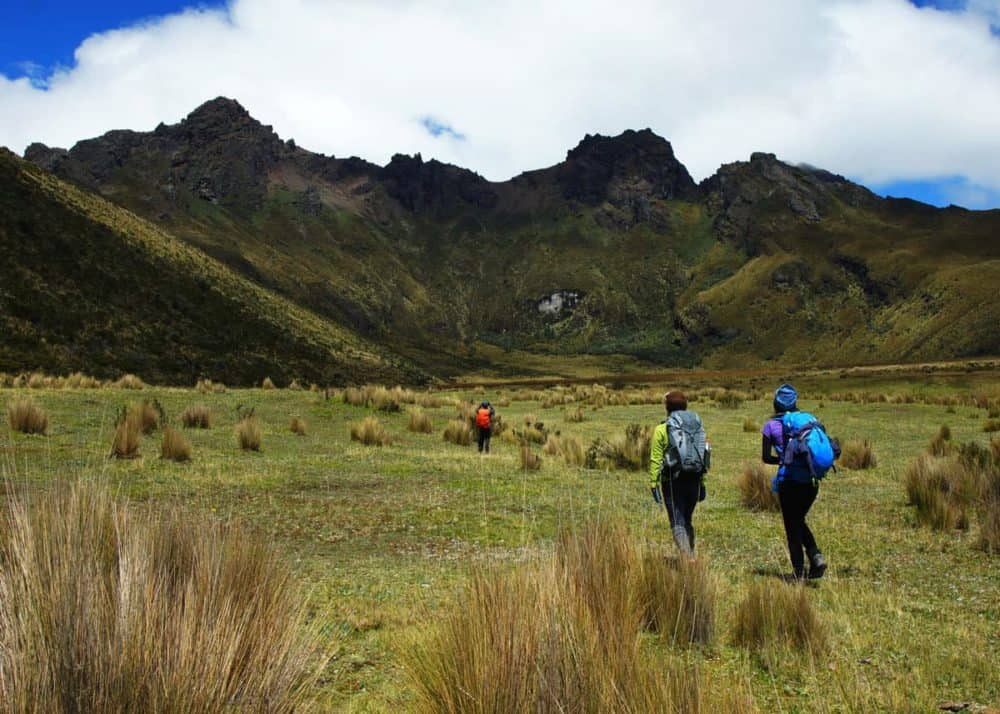
These purifiers get rid of parasites, bacteria, protozoa, and viruses harmful to humans. Those surprise little nasties in the water are the main reason travelers get sick each year, especially in countries without clean drinking water or the infrastructure to treat their water.
Best Portable Water Filter for Travel
Bottled water, portable water purification, or water filtration device? The good news is that you don’t have to spend a fortune daily on bottled water.
2 Top Picks: Travel Water Filters
Before we get to the full guide and all the specifics, here are our top picks. If you don’t want the backstory – and just our recommendations – here they are.
Please note: to remove protozoa, bacteria, and viruses you’ll need both a filter (like the Lifestraw bottle) and a purifier (like the Steripen UV water purifier).
- Steripen UV Water Purifier (Use any bottle): This is great for travel. Charges via USB, up to 50 treatments per charge. Use any bottle or dish. This is a must to ensure that all contaminants – including viruses are removed.

Okay, so now back to the post:
Why not use bottled water? Bottled water is expensive, heavy, and can be hard to find if you are traveling long distances, especially in remote areas. Having to stop to look for little stores along the way can be frustrating to you and everyone else, or when traveling in remote areas there may not be stores.
First things first, let’s get started with the basic differences between a portable water filter and a portable water purifier and go from there.
What is safe drinking water?
Safe drinking water is free of protozoa, parasites, bacteria, and viruses making it safe for human consumption. In other words, you won’t get sick when you drink the water.
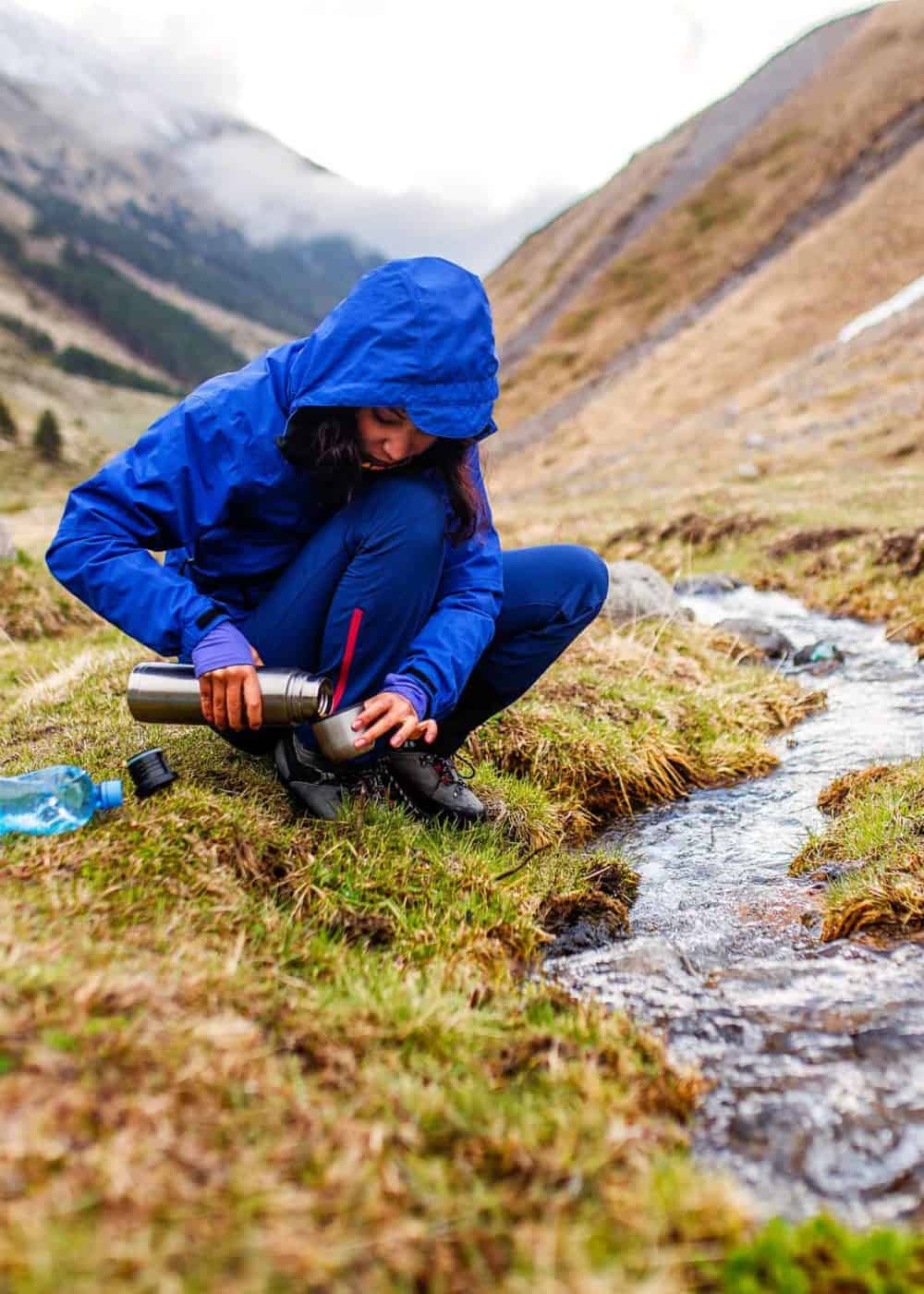
Water Filters vs Water Purifiers
In the past, travelers either had to boil water or use harsh chemical treatments that left a gross taste in their mouths.
While both options are still good, some ways are faster and free of chemicals.
Difference between water filter and water purifier?
The main difference is in the level of protection. There are 3 classes of microbes to be concerned about. Only water purifiers remove/kill them all.
- Water filters remove protozoa and bacteria. They clean the water by removing particles, protozoa, parasites, and even bacteria. They filter it to make clean drinking water by also removing grit, floating particles, and debris so it looks clearer and more palatable. But, because viruses are so minuscule they can slip through the microfilters, even the tiniest ones of .02 microns.
- Water purifiers remove protozoa, bacteria, and viruses. Water purifiers take it to the next level by purifying the water which means eliminating parasites, protozoa, and bacteria like a filter does but also killing or deactivating viruses so they cannot make you sick.
So, why would anyone choose a filter if it doesn’t get rid of viruses?
- Filter: You might choose a water filter if you’re traveling in the country you’re from . If you’re used to the water, know that it is clean, and are more concerned about flavor then a filter might be all that’s needed.
- Purifier: But when visiting a new country where you’re not used to the water, it’s a good idea to take some form of purification with you. Not only may the water be contaminated – but your system isn’t used to the local microbes which could make you sick . You can make the water safe with UV light, purification tablets, or actual water purifiers.
Now let’s discuss the different types of portable filters and purifiers you can take with you on your trip.
3 Types of Water Purifiers
Water purifiers come in all shapes and sizes. The best ones for travel are made of lightweight but durable plastic with metal or ceramic filters and are generally light enough to slip into your luggage or backpack.
A UV light or purifying tablets are also good backups and worth taking along as well when traveling to a country with unsafe drinking water.
You have three choices for making your water safe to drink:
- Portable water purifier
- Portable water filter
- Water filter in conjunction with purifying tablets or UV light.
*Just remember if you are opting for the purification tablets, try one before you leave on your trip because they can have a chemical taste in your mouth. It’s better to know before you go just in case you aren’t willing to put up with the taste.
What it Needs to Have
A microfilter (.02 microns) that will remove just about everything is the first thing you need to make sure it has.
Some filters are only designed to remove particles from drinkable tap water and have a much larger filter that will not stop bacteria or protozoa so be sure to check that no matter which purification system you choose, its filters are small enough.
7 Ways to Clean Water
1. filtration straws.

- Pros: Extremely portable, it hangs around your neck or straps onto your backpack’s shoulder strap and is so lightweight you don’t even know it’s there. They have a very high flow rate and good filtration.
- Cons: You have to get right down close to the water’s surface to put the straw directly into the water and suck, just like a normal straw. This may be uncomfortable or not possible in some cases depending on the water source. It also means you can’t filter a bottle to take with you for later, you can only drink directly from the source.
2. Water Filtration Pump

Another great advantage is that its hose can reach down into a stream, river or other water source.
- Pros: Easy to use, compact, high-flow, capable of filling hydration packs, water bottle storage containers.
- Cons: If the first line becomes dirty it can contaminate the second line so make sure to clean and stow your device properly. Also, have a way to flush it with clean water if it does get contaminated before starting again.
3. Gravity Fed Water Filter

They have made great advances in this arena and now a 2L bag can be filtered in about 3-5 minutes filling water bottles , hydration packs, and additional containers quickly.
- Pros: Can usually filter a large volume of water great for family camping.
- Cons: It is larger and more cumbersome so not really a great option for backpacking or international travel.
4. Squeezable Water Filter Pouches

Making straws more versatile, they allow you to fill the pouch directly from the source and then filter it into your water bottle or hydration pack. They are lightweight and easy to pack, taking up very little room.
- Pros: Easy to use, quick to fill, versatile allowing you to fill any type of water container, bottle, or hydration pack.
- Cons: Bursting, tearing, or splitting can happen so make sure to have a couple of backups when traveling. It’s not like you will be able to run to the nearest store and buy another one in a remote area.
5. Water Bottle with Filter
- Pros: Portable, attached to the exterior of your backpack or bag for accessibility and they are sturdy and generally able to withstand a few knocks and drops. Plus, they are easy to use, just fill and go.
- Cons: If you are going to an area where the water has a higher degree of contamination than in North America or Canada for example, which is where these are designed for, they may not eliminate viruses.
It’s easy to drop a purification tablet in half an hour before you are planning to drink or zap it with a UV light to eradicate viruses and anything else that may be in the water.
6. UV Sterilizer Light

It is recommended to filter your water first to remove floating particles and debris to ensure the greatest effectiveness possible. It’s easily packed in your luggage and most are rechargeable so you don’t have to travel with batteries.
- Pros: Total package destroying viruses as well as all other nasties that may make you sick. It is a purifier, not a filter.
- Cons: The main problem with a UV purifier is that if the water has a lot of floating particles in it, it is not as effective. Purifiers won’t clear particles from the water so if you are not filtering your water first, it can get a little gritty.
7. Purification Tablets

We do recommend that you try one before you leave on a trip because if you don’t like the taste when adding it to your drinkable tap water at home, then chances are you will hate it when using it out in the field. These are easy to use, just add them to your water bottle and give it about 35 minutes to do its work.
- Pros: Easy to travel with, just one small bottle, cheap, long-lasting.
- Cons: You may not like the taste and in colder temperatures, chemicals can take a lot longer to become effective. If traveling at higher altitudes or in lower temperatures be sure to allow extra time for them to work.
More reading: How much water to drink while backpacking
How to Choose a Travel Water Filter : 8 Factors
Is it your primary water source while trekking through remote areas? Or, is it to make tap water drinkable as you go from hotel to hotel and will probably buy water along the way or have it supplied in your room daily?
Depending on the type of traveling you will be doing, here are eight things to consider before making your purchase so you find the one that meets your needs.
- Size: Compact is key for travel. How much room you have in your luggage or backpack to allocate for a water purification system has a big impact on the type of purifier you buy.
- Lifespan: Especially when traveling through countries without safe drinking water, you want something durable that is built to last. Something hardy enough that it won’t get damaged in transit, while you are traveling and if it will stand up to a few knocks.
- Cost: This is a biggy. How much is not getting sick worth? Just imagine picking up a parasite or getting sick during your trip and being rushed to a hospital where you hope your travel insurance will cover everything. Is it worth the extra $50 to get the purification system you want and know will keep you safe? You can buy a good filtration system and use a UV pen or tablets in conjunction to make 100% safe drinkable water which may work out cheaper.
- Weight: For all international travel there are weight restrictions on luggage. You want small, as lightweight as possible but still good enough that it does the trick. If you are trekking and having to lug your backpack around daily then weight is a huge factor.
- Durability: Look for filtration and purification devices that can take a knock without breaking. Ideally, you want something with as little interior componentry as possible. The more complicated it is, the more that can go wrong. Plus, if you are reaching down from a riverbank and slip and drop it, you want to have confidence that it will survive a small fall.
- Replacement filter availability/cost: No matter which device you choose to take with you, making sure you have a couple of spare filters is wise. In South America when you are touring around, chances are you won’t be able to find replacements easily.
- Flow Rate: If you’ve just climbed a mountain to get photos of that amazing scenic view, then you’ll want a drink in between all the huffing and puffing. You won’t want to wait half an hour for it to filter enough so be sure to check the flow rate before you buy. High-flow = good.
- Filter Capacity / Ease of Use: All filtration and purification devices will clearly state how many liters or gallons you are expected to get from each of the filter’s lifespans before you need to replace them.
*Ceramic filters are not recommended for travel as they add weight and are more fragile, sometimes shattering if dropped. If traveling from Point A to Point B, they can be packed to travel safe.
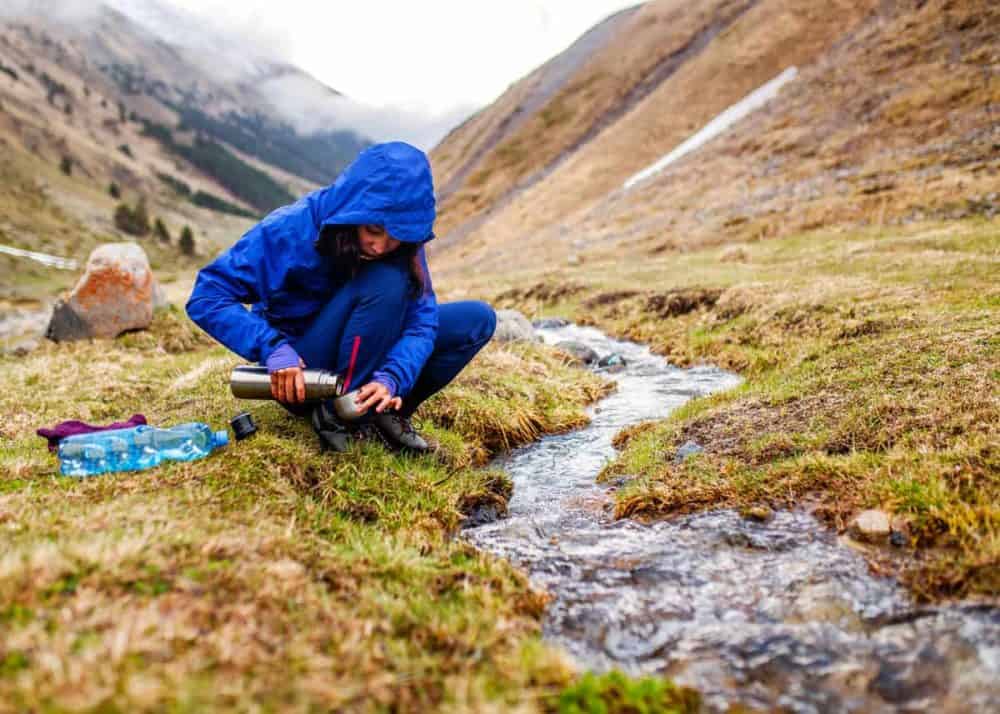
7 Best Portable Filters and Purifiers
1. lifestraw personal water filter.

Check the current price on Amazon or LifeStraw
Capable of filtering 4,000 liters (1,000 gallons) just remove the caps and place one end in the water to drink. The water comes through clean tasting because it doesn’t use any chemicals so your water is cleaner and fresh. Meets the US EPA and NSF water filtration standards.
2. Katadyn Vario Water Filter
Check the current price on Amazon or NRS
Produces 2 quarts per minute in the faster flow mode. Replaceable carbon core keeps water tasting fresh, and reduces chemicals, toxins, and odors. The adapter base attaches directly to a standard 32oz Nalgene water bottle opening.
3. Sawyer Mini Water Filtration System
Extremely versatile, it is easily used as a straw, or by attaching a squeeze pouch to filter drinking water into a bottle or hydration pack. You can also drink the water from the squeeze pouch directly by just attaching the straw to drink on the go.
Check the current price on Amazon or REI
It also attaches to most standard water bottles, so if you did have to buy a bottle of water, you can recycle that plastic water bottle by filling it and attaching the straw to drink through.
4. Lifestraw Go Water Bottles
Check the current price on Amazon or Target
It’s recommended to change the carbon filter after 100 liters so if you are traveling for a long time make sure to pack a spare.
5. Steripen Ultra UV Pen Purifier
Check the current price on Amazon
Able to purify a liter of water in 90 seconds this purification device can handle purifying 50 liters of water with one charge before being easily recharged via laptop USB, wall socket or portable solar panel if you’re in remote areas. Capable of over 300 charges in its lifetime, that equals 15,000 liters of clean drinkable water.
6. Potable Agua Water Purification Tablets
Check the current price on Amazon or Bass Pro
It needs time to sterilize anything that water may hold and make it safe to drink. These are a cheap, easy-to-travel way of making questionable water safe.
7. MSR Guardian Purifier

It has been tested in the most unsanitary of water sources and proven 100% safe removing all viruses, bacteria, protozoa, and parasites to leave tasty clean, clear drinkable water.
Worth the extra money if it is your only source of drinking water trekking through remote areas. More reading: How to safely purify river water for drinking
Best Expat Water Filter: Travel Berkey
The Travel Berkey holds 1.5 gallons and can filter almost 3 gallons per hour. It removes bacteria, chlorine, chloramines, heavy metals, and pharmaceuticals.
Check the current price on Amazon.
The replaceable filters last for 6000 gallons. The Berkey is available in 4 larger sizes (up to 6 gallons). Just be sure to see what will fit in your luggage.
We used a countertop water filter while living in Ecuador. And we still have a Berkey on our counter here in Canada.
What is potable water?
Water that is safe to drink or use in food preparation and cooking.
Once you have filtered or purified water to remove anything that may be harmful to humans, it is classed as potable water.
Here’s more about determining safe drinking water.
What do water filters remove from the water?
They remove debris, particles that cloud the water, bacteria, protozoa, parasites and anything else above .02 microns. This means even puddle water can come out crystal clear.
Just remember, a filter doesn’t remove viruses so zap it with a UV pen once it’s filtered and you’re good to guzzle.
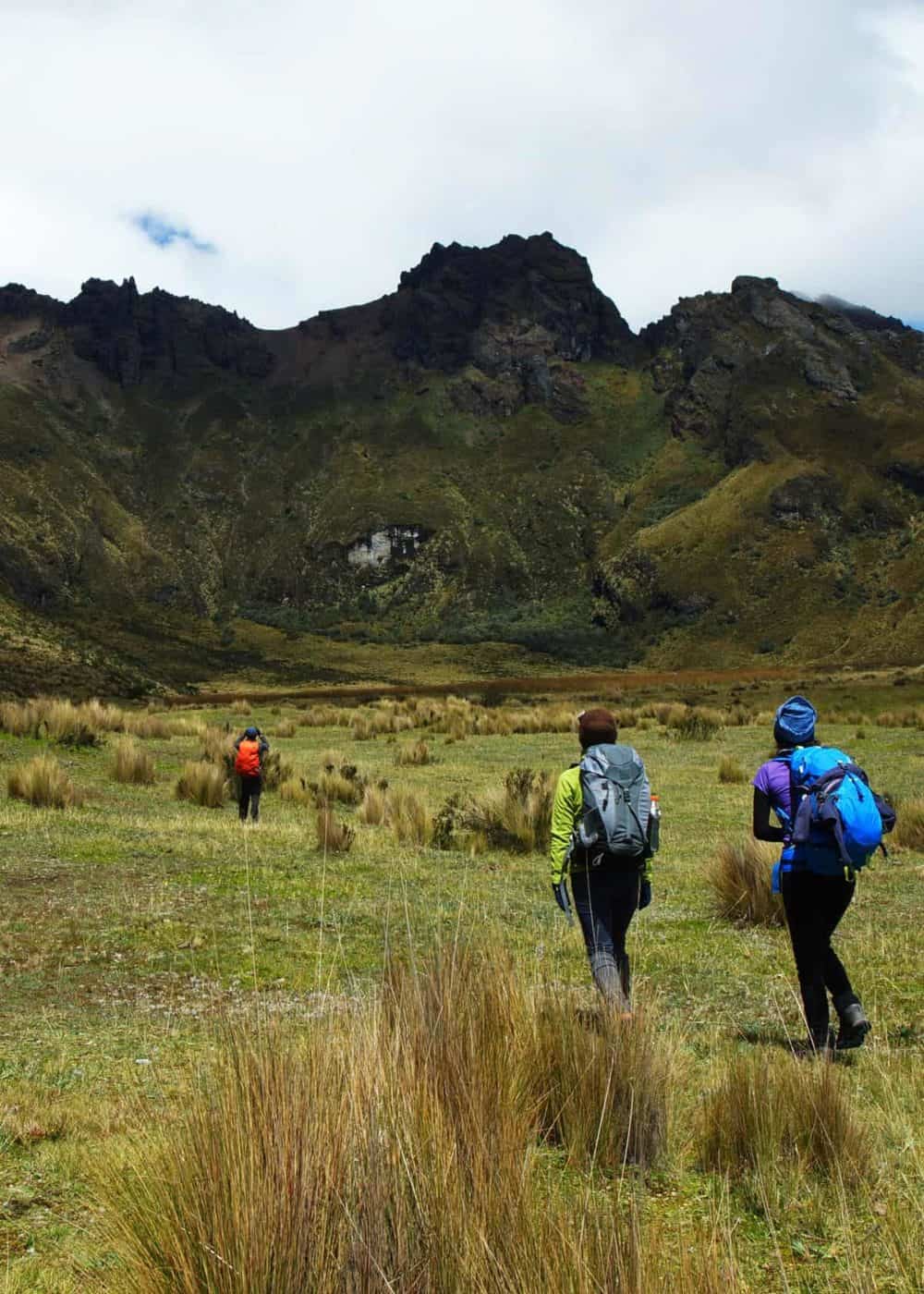
A Traveler’s Guide to Safe Tap Water
Safe water can be a pretty big issue. Not only can it ruin a perfectly good trip with diarrhea, but bad water can also carry hepatitis A, typhoid, and cholera. This is nothing to play around with.
When it comes to amoebas and parasites, it pays to be a bad host.
It isn’t just what you drink. Bad water can make you sick while swimming, brushing your teeth, ice cubes, and while in the shower.
How do you plan on having a safe supply of water on your trip? What’s your favorite filter? Join me in the comments below!
Bryan Haines is a co-founder and blogger on GudGear - and is working to make it the best resource for outdoor gear and guides.
He loves the outdoors and has hiked the Andes, kayaked the Galapagos, and biked and camped around Nova Scotia, Canada.
He is a travel blogger at Storyteller Travel and blogs about photography at Storyteller Tech . He is also co-founder of Storyteller Media , a company he started with his wife, Dena.
Similar Posts

12 Must Have Survival Gear for Hikers (Water, Fire, Health)
Heading out on a hike and want to make sure you’re safe? In this post, learn about must-have survival gear for hikers and outdoor lovers. Do you need survival gear for just a short hike? The answer is yes! It is good to be prepared for an emergency in the backcountry, no matter what your…
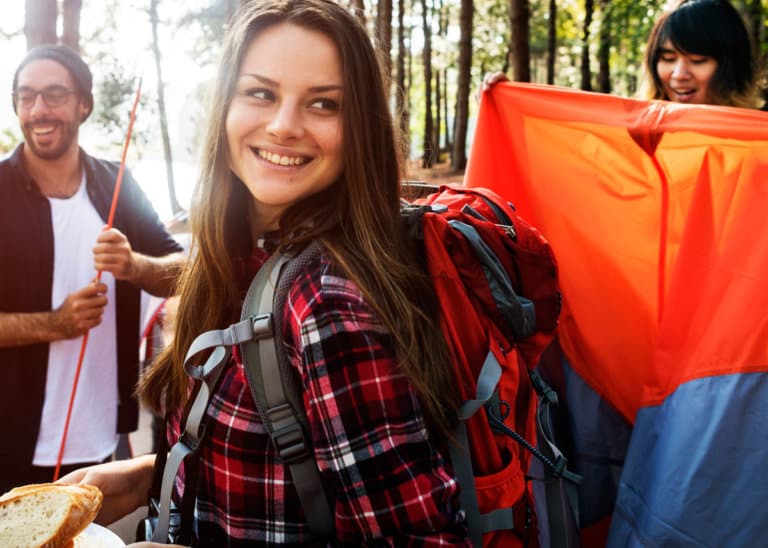
Best Camping Gear for Beginners: Essential Starter Kit (18 Pieces)
Planning your first camping trip? Here’s the best camping gear for beginners. We include tents, stoves, coolers, chairs, and lots more to make your camping trip a success. This camping starter kit covers the essentials for your trip. Heading out into the great outdoors? Perfect. Before you go, make sure you have the basics. Guide…
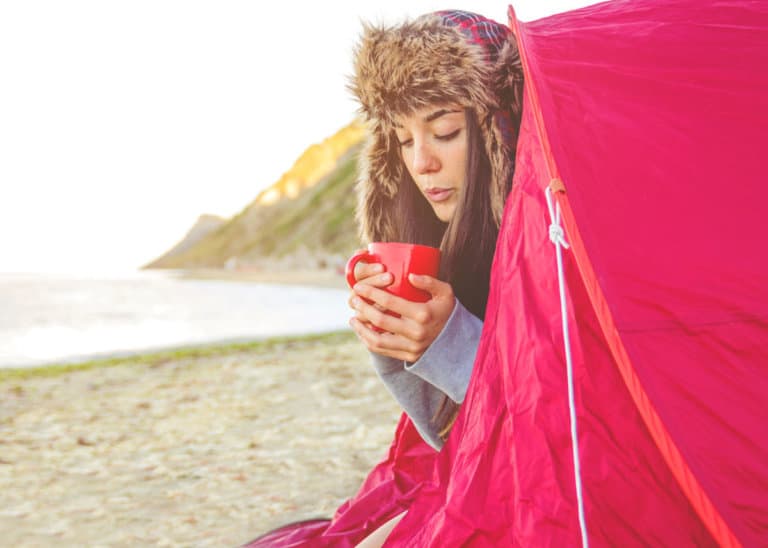
9 Best Heaters for Tents: Safe Camping Guide (Gas, Electric)
So you love camping – but hate being cold? This is the guide you’re looking for. You’ll learn about the best heaters for tents. There is also a detailed guide to choosing (and safely using) tent heaters to stay warm. These tent heaters for camping will even make winter camping comfortable. If you’re going camping in…
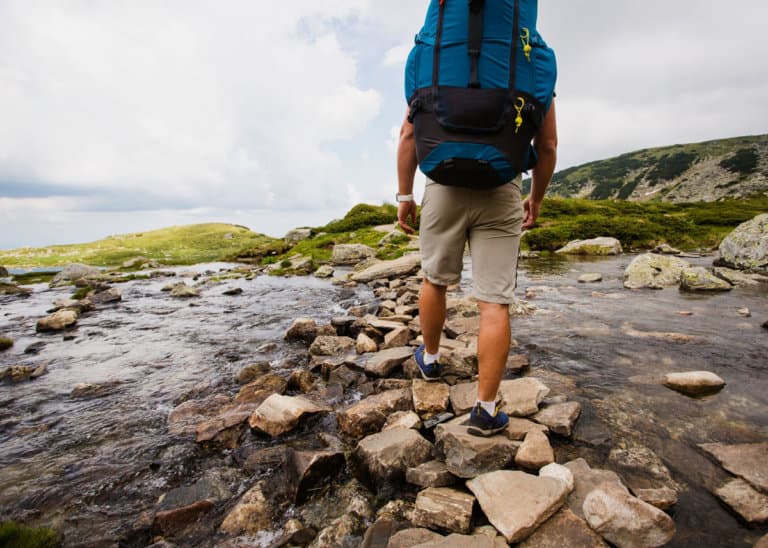
6 Best Shoes for Hiking in Water (Trail Guide to Dry, Healthy Feet)
Hiking in wet conditions takes a toll on your feet. Choosing the best shoes for hiking in water can make the difference between a successful hike or one that you might suffer through every step. Each of the water hiking shoes in this post will keep your feet healthy. We include both waterproof and amphibious…
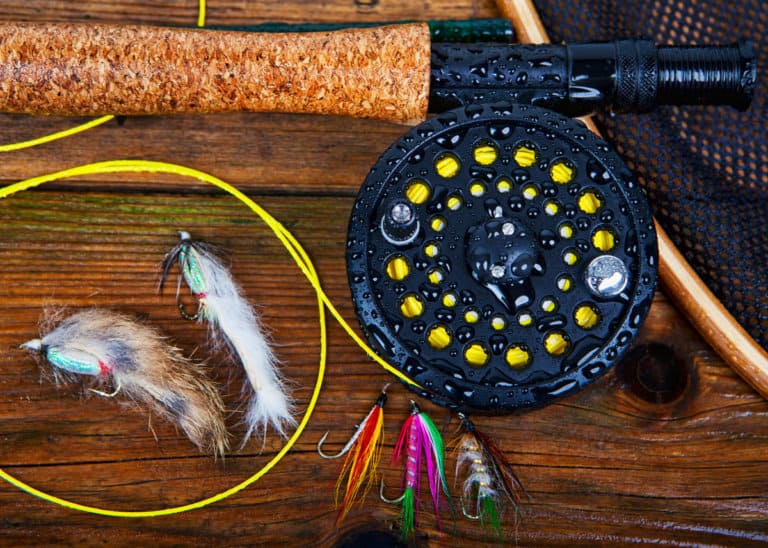
15 Must Haves for Your Fly Fishing Gear Bag (Gear List)
Heading out on your first fly-fishing trip? What gear do you really need? In this post, you’ll learn about some basics that you should take in your fly fishing gear bag. This gear list will set you up for a great season. Fly Fishing Gear Bag: What To Include? Nearly every fly fishing novice or…
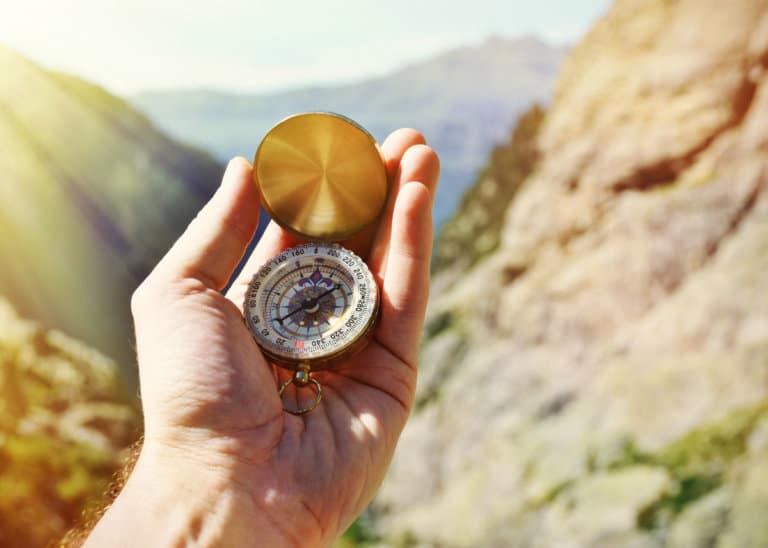
How to Use a Compass Without a Map (and Still Get Home for Dinner)
So while getting lost probably isn’t in your trip plans, things can happen. In this post, you’ll learn how to use a compass without a map. Your GPS might konk out – or maybe you’re a purist and want to explore without electronics. Whatever your situation, this post will help. How to Use a Compass…
Leave a Reply Cancel reply
Your email address will not be published. Required fields are marked *

Accelerate Vacation Rental Success
Upgrade Your Short Term Rental With a Water Filtration System
Why should you upgrade your short term rental with a water filtration system, clean water means happy guests.
Updated 8/2023
As a vacation rental homeowner or host, investing in a water filtration system can significantly enhance your guests’ experience and the overall appeal of your property. Familiarize yourself with the Environmental Working Group’s info on America’s tap water to understand toxins in the water. In this blog post, we will explore the numerous benefits of providing water purification in vacation rentals, including improved guest wellbeing, positive reviews leading to more bookings, cost savings, and reduced environmental impact.
We will also discuss various types of water filter systems suitable for different needs and budgets – from point-of-entry (POE) systems to point-of-use (POU) solutions as well as whole house vs single room options. Furthermore, you’ll learn how to choose the right water filtration system for your specific vacation rental by considering factors like filter technology available and installation requirements.
To Rent or Own?
When it comes to water filtration systems, choosing between renting and buying depends on various factors. Renting a water filtration system offers the advantage of affordability, as it eliminates the need for a large upfront investment. It provides flexibility, allowing you to adapt to changing needs and upgrade or downgrade the system as required. Renting also often includes maintenance and servicing, ensuring optimal performance without additional costs. On the other hand, buying a water filtration system gives you long-term ownership and may be more cost-effective over time. It provides the freedom to customize the system to your specific preferences and offers peace of mind knowing you have a permanent solution.
Consider your budget, desired level of control, and long-term plans to make an informed decision between renting and buying a water filtration system for your vacation rental.
Benefits of Installing a Water Filtration System in Vacation Rentals
In this section, we will discuss the advantages of installing a water filter system in your short term rental to target the wellness-tourism market. As a rental owner or host, it is essential to prioritize guest wellbeing and satisfaction while also considering cost savings and environmental impact. Doing so will help you to maximize short term rental income through positive reviews and repeat bookings.
Improved Guest Wellbeing
Installing a water filtration system can guarantee that visitors to your property have access to pure and secure drinking water while they are staying. Removing impurities such as bacteria, viruses, heavy metals, chlorine and other harmful substances present in city water is possible with a high-quality filtration system. Offering filtered H2O at your establishment not only upgrades the general quality of the visit for visitors, but also advances their health and prosperity.
Positive Reviews and More Bookings
A key factor contributing to more bookings on platforms like Airbnb or VRBO is positive reviews from previous guests who enjoyed their stay at your property. When you provide cool amenities like a yoga room or an efficient water filtration system that enhances guest comfort levels by offering clean drinking water throughout their visit; they are more likely to leave favorable feedback about your vacation rental home’s thoughtful features leading potential renters towards choosing yours over others without these accommodations. Check out some tips for getting 5-star reviews from Airbnb guests here.
Cost Savings
- Reduced Bottled Water Expenses: Providing filtered tap water eliminates the need for purchasing bottled waters which can be expensive and cumbersome to store.
- Lower Maintenance Costs: A quality water filtration system can prolong the life of your appliances like washing machines and dishwashers, by preventing hard water mineral buildup. Doing so ultimately saves you money on repairs or replacements in the long run.
Environmental Impact
Incorporating a water filter system into your vacation rental property is an excellent way to promote sustainable living practices among guests while reducing plastic waste generated by single-use bottles. By providing clean municiple water through a filter, you are encouraging eco-friendly habits that contribute positively towards preserving our planet’s resources for future generations.
Installing water purification in your vacation rental can bring numerous benefits, from improved guest wellbeing to cost savings. Let’s explore the various water filtration systems that can be installed in a holiday let.
Installing a water filtration system in vacation rentals has numerous benefits, including improved guest wellbeing by providing clean and safe drinking water, positive reviews leading to more bookings, cost savings on bottled water expenses and maintenance costs, and reducing environmental impact by promoting sustainable living practices. By prioritizing guest satisfaction while considering cost savings and eco-friendly habits, rental homeowners can elevate their properties through sustainable living.
Types of water filtration systems for vacation rentals.
There are several types of water filtration systems suitable for vacation rentals. In this section, we’ll explore the different options of water filter systems for vacation rentals, such as POE (Point-of-Entry) and POU (Point-of-Use), along with whole house vs single room setups.
Point-of-Entry (POE) Systems
Point-of-entry (POE) systems are installed at the main water line entering your property and treat all incoming water before it reaches any faucets or appliances. These comprehensive solutions ensure that every drop of water used in your rental is filtered and purified. Some popular POE technologies include activated carbon filters, sediment filters, ultraviolet disinfection units, and ion exchange softeners.
Point-of-Use (POU) Systems
In contrast to POE systems,point-of-use (POU)systems are designed to filter specific sources of water within a property like kitchen sinks or showerheads rather than treating all incoming supply lines simultaneously. Examples of POU devices include countertop filters, faucet-mounted filters,, under-sink reverse osmosis units,and showerhead attachments with built-in filtration capabilities. These can be more affordable options if you’re looking to target specific areas where guests may consume or come into contact with tap water.
Whole House Systems vs Single Room Systems
When deciding on a water filtration system for your vacation rental, you’ll need to choose between whole house systems and single room systems. Whole house systems are typically POE solutions that treat all incoming water, ensuring clean and safe water throughout the entire property. These are ideal if you want to provide filtered water in every part of your rental without any exceptions.
On the other hand, single room systems focus on specific areas or rooms within a property like kitchens or bathrooms where guests may be more likely to consume municipal city water directly. These POU devices can be cost-effective options for hosts who wish to prioritize certain high-traffic areas without investing in an extensive whole-house solution. Ultimately, the decision will be based on things such as monetary restrictions, local city water quality, and guest expectations for purified drinking sources during their stay, the quality of local tap water, and guest expectations regarding access to purified drinking sources during their stay.
No definitive answer exists for determining the ideal water filtration system for vacation rentals, so hosts must weigh their options carefully. It’s essential that hosts carefully consider their unique needs and priorities before making a decision about which option will most effectively enhance guest wellbeing while also generating positive reviews and increased bookings over time.
Let’s take a look at how to choose the right water filtration system for your needs.
When it comes to providing clean and safe water for vacation rental guests, hosts have several options including point-of-entry (POE) systems that treat all incoming water, point-of-use (POU) systems that filter specific sources of water within a property, and whole house vs single room systems. Hosts should carefully consider their unique needs and priorities before selecting the best type of filtration system to enhance guest wellbeing while also generating positive reviews and increased bookings over time.
How to choose the right water filtration system for your vacation rental.
Realizing the importance of picking an appropriate water purification system for your holiday accommodation is essential to make sure visitors are content and gain all the advantages that accompany it. To make an informed decision, consider your needs and budget, research different types of filters and technologies available, and evaluate installation requirements and maintenance needs.
Consider Your Needs and Budget
Firstly, assess your property’s specific water issues by testing the water quality. This will help you identify any contaminants or impurities present in the water supply that need addressing. Next, determine a budget for purchasing a suitable filtration system based on factors such as size of property, number of guests expected at peak times, local regulations regarding filtered drinking water provision (if applicable), etc.
Research Different Types of Filters and Technologies Available
Different filter technologies are designed to address various contaminants effectively; therefore it’s essential to understand which type suits your needs best:
- Mechanical filters: These remove sediment like sand or rust particles using physical barriers such as screens or meshes (source). They’re ideal if you have visible debris in your city water.
- Activated carbon filters: Using activated carbon granules or blocks made from charcoal derived from coconut shells or wood sources (source). They’re effective against chlorine taste & odor reduction while also reducing organic compounds, pesticides and some heavy metals.
- Reverse osmosis (RO) systems: These use a semi-permeable membrane to filter out dissolved solids, including salts, minerals, and most contaminants (source). RO systems are ideal for addressing high levels of water hardness or elevated TDS (total dissolved solids).
- Ultraviolet (UV) disinfection: UV light kills bacteria, viruses and other microorganisms by disrupting their DNA ( source ). This technology is best suited for properties with a risk of microbial contamination in the water supply.
Evaluate Installation Requirements and Maintenance Needs
Prioritize ease of installation when selecting your filtration system. Some options can be installed DIY-style while others may require professional assistance. Also consider ongoing maintenance needs such as filter replacement frequency or cleaning schedules to ensure optimal performance over time. For example, point-of-use filters like faucet-mounted units typically need more frequent replacements compared to whole-house systems.
To sum up this section on choosing the right water filtration system for your vacation rental: assess your property’s specific needs based on water quality testing results; set a budget considering factors like property size & guest capacity; research various filter technologies available that address identified contaminants effectively; finally evaluate installation requirements & maintenance aspects before making an informed decision.
Considering your needs, budget and the available filters/technologies; assessing installation requirements & upkeep demands can help you pick a suitable water filter system for your vacation rental. Here are some tips for maintaining a water filtration system in your vacation rental.
To choose the right water filtration system for your vacation rental, assess your specific needs and budget, research different filter technologies available such as mechanical filters or reverse osmosis systems, and evaluate installation requirements and maintenance needs. It’s important to prioritize ease of installation and ongoing maintenance to ensure optimal performance over time.
Tips for maintaining a water filtration system in your vacation rental.
To ensure effectiveness and longevity, regular maintenance of your water filtration system is key. Proper maintenance not only guarantees the best quality of water for your guests but also helps you avoid any unexpected expenses due to system malfunctions or damages. Here are some tips on how to maintain a water filter system in your vacation rental:
Regularly Change or Clean Filters as Needed
It’s essential to keep up with the manufacturer’s guidelines and swap out or clean filters on a regular basis, as they are vital for eliminating pollutants from the water. The frequency of filter replacement depends on factors such as usage, type of filter, and local water conditions.
- Carbon filters: Typically need replacement every 6-12 months (source)
- Sediment filters: Generally require changing every 3-6 months (source)
- Reverse osmosis membranes: Usually last between two and five years before needing replacement (source)
Monitor Performance with Regular Testing
It’s important to conduct regular testing of both the filtered and unfiltered tap water at your vacation rental property. This will help you identify any issues or changes in water quality that may require attention. You can use EPA-certified laboratories for accurate testing results, or purchase a home water test kit for more frequent monitoring.
Educate Guests on Proper Use of the System
It’s essential to educate your guests about its proper usage. This includes providing clear instructions on how to operate the system, occasional filter replacement, shut off valve location, etc..
You can include this information in your vacation rental property guidebook, create a dedicated instruction sheet placed near the filtration system, or even add labels with brief reminders directly onto relevant appliances like faucets and refrigerators.
Proper maintenance of a water filtration system in your vacation rental is crucial for ensuring the best quality of water for guests and avoiding unexpected expenses. This can be achieved by regularly changing or cleaning filters, monitoring performance with regular testing, and educating guests on the proper use of the system. By following these tips, vacation rental owners can maintain their water filtration system effectively and promote guest satisfaction.
Frequently asked questions: water filtration system, what is water filtration.
Water filtration encompasses various methods used to purify or treat contaminated drinking sources by removing impurities like sediments, microorganisms, chemicals or heavy metals. This includes understanding different types of filters (e.g., activated carbon), technologies (e.g., reverse osmosis), installation options (POE vs POU) as well as maintenance requirements.
What is a water filtration system?
A water filtration system refers to any device or process designed to improve overall quality by removing unwanted substances from source waters before consumption or use. These systems employ physical barriers such as membranes or media beds combined with chemical processes like adsorption/ion exchange that target specific pollutants, resulting in cleaner, safer water. Explore the USGS Water Science School for more information.
How does a water filtration system improve my rental business?
Adding a water filtration system in a vacation rental can significantly increase its property value and appeal to potential guests. Providing clean and safe drinking water can be a major factor for guests when choosing a vacation rental, and having a water filtration system in place can set a rental apart from others. The availability of clean water can lead to positive guest experiences, which in turn can result in higher nightly rates, increased bookings, and repeat customers. By investing in a water filtration system, vacation rental owners can enhance the guest experience, boost their property’s value, and ultimately increase their revenue.
How effective are water filtration systems?
Some filters can remove up to 99% of impurities, including bacteria, viruses, heavy metals, and chemicals. However, effectiveness varies based on factors such as filter technology and proper maintenance. The CDC provides guidance on selecting an appropriate system for your needs.
Why is filtration important for the water systems?
Filtration is crucial for maintaining safe and clean drinking water by eliminating harmful contaminants that pose health risks. It also improves taste and odor while reducing sediment buildup in pipes and appliances. In vacation rentals specifically, providing high-quality filtered water enhances guest experience and demonstrates a commitment to their wellbeing.Learn more from the EPA about protecting home water supplies.
If ownership is the goal, It’s critical to pick one that meets all of your requirements from the diverse selection accessible in the market today. Additionally, regular maintenance will help keep the water filter system running efficiently for years to come. By investing in a quality water filtration system now you can enjoy long-term benefits while providing peace of mind for yourself and those who stay at your property.
If renting meets your needs, there are several water rental brands available. However, there is no clear number one water rental brand. Here are some of the top water rental brands mentioned in the search results:
- Water.com (Primo Water North America)
- Culligan Water
- ReadyRefresh
- Premium Waters, Inc.
- Primo® Water Delivery
Each of these brands offers different types of water, delivery options, and pricing plans. Therefore, the best water rental brand for you will depend on your specific needs and preferences.
Want to learn more? Check out: How to Maximize Short Term Rental Income By Targeting the Wellness Traveler Niche >>
MindfulBnB will send useful articles every once in a while. We will never spam your inbox or sell your information!
Similar Posts

Achieve Green Certification for a Successful Short Term Rental Business
Why Green Certification for a Short Term Rental? Green Certification Puts Your Short Term Rental a Notch Above…

Reclaim Your Space with an Empowering Post-Holiday Cleanup Plan
Discover Effective Mindful Techniques To Tackle Post-Holiday Cleanup With Ease. Learn How To Mentally Prepare And Transform Your Space Into A Serene, Organized Haven. Start Your Journey Towards A Revitalized Home Today!

Waivo: The Best Damage Protection Insurance & Security Deposit Killer
Discover Peace-Of-Mind Comprehensive Vacation Rental Damage Protection; Insurance Coverage That Replaces The Outdated Security Deposit Model.

15 Best Air Purifying Plants to Upgrade Vacation Rental Indoor Air Quality
Why Feature Effective Indoor Greenery in Your Short Term Rental? Air Purifying Plants Detoxify the Home and Delight Guests…

Minimalism: Declutter Your Life with These Proven Mindful Tips
Declutter Your Home And Simplify Your Life By Embracing Minimalism With These Expert Tips And Ideas.

5 Easy Eco-Friendly Holiday Dinner Table Decor Ideas
Transform Your Holiday Dinner Table With Eco-Friendly Decor Ideas! Discover DIY Projects Like Hanging Mason Jar Chandeliers, Natural Centerpieces, And More For A Sustainable, Stylish Celebration.
Exciting news! FloWater is now part of Bluewater !
The Benefits of Purified Water Stations For Hotels

Hotels welcome millions of travelers every year who are primarily interested in what amenities the property has to offer. Is it a room with a view? An award-winning onsite restaurant? Or, does it all come down to the details and extras that hotels add to make guests feel welcome? The answer is: all of the above. In 2018, leisure travel spending totaled $761.7 billion and spending on business travel totaled $327.3 billion. Second only to food services, lodging was the highest source of spending. Quite a few people are willing to spend a bit of money to find what hotel best suits their needs.
These numbers mean hotels must stay competitive in their offerings to delight guests and give them the accommodations they want. Guest preferences are ever-changing and with the continual popularity of image-based social media and review sites, it’s important to understand what guests really want. Rooms with a view and delicious food options only scratch the surface of the kind of customization people look for when choosing a hotel. Now choices are being made based on the values of a company, the sustainability practices that are followed, and if other guests have left favorable reviews.
The benefit of adding purified water stations to part of your property’s perks list is that it aligns with what many guests look for in today’s world. It’s bound to please guests and give them another reason to leave a positive review either online or in-person to their friends, families, and co-workers. Many hotels have bottled water available in guestrooms or water cooler stations in the gym , but this type of offering is being replaced by water stations that are sustainable, convenient, and dispenses clean, crisp water for every guest that passes through.
The value that a hotel water dispenser can bring to the guest experience gives visitors another reason to book a stay or recommend your hotel to others. It also helps the hotel staff save on costs and offers guests a chance to co-mingle. It creates a positive impact for all by:
- Promoting sustainability
- Encouraging guests to congregate and engage with each other
- Saving on maintenance costs
- Driving positive reviews
- Improving the standards in water purification
Great-tasting water that’s readily available for travelers doesn’t have to be difficult to come by, especially when there’s a technology that makes things easier. Guests don’t have to settle for bottled water or wait in line for a refill. FloWater has a solution that makes things quick, convenient, and a perfect amenity for any hotel. This is a general overview of benefits that apply to any property, but each hotel will find unique ways a water refill station creates a better experience for their customers.
Promotes Sustainability
Sustainable tourism has seen an upward tick over the past few years largely because consumers demand more eco-friendly options. For example, it’s not uncommon for hotel chains to offer a “greener” turn-down service where guests can choose to have their sheets and towels washed and changed every three days rather than on a daily basis. Those few extra days saves tons of gallons of water and energy, a simple yet highly sustainable solution. Other environmentally-conscious trends hotels have begun to implement include:
- Going paperless. Rather than printing guest portfolios or receipts, everything is switching to being sent online or distributed via hotel apps.
- Conserving energy. Mini fridges and coffee machines are slowly being replaced with similar, shared guest amenities in a communal space. Also, many hotels are switching to more energy-efficient LED lighting for their guest rooms and common areas.
- Locally-sourced food. Growing produce onsite or receiving groceries from nearby farmers and vendors is how chefs prefer to run their restaurants. It’s an expanding trend in the hospitality industry and is considered a selling point for guests who have special dietary needs and care about where their food is sourced from and how it’s produced.
- Eliminating plastic waste. In addition to adding recycling bins to guest rooms, many hotels are trying to reduce the amount of plastic waste altogether by stopping the use of plastic water bottles and switching to hydration stations instead.
A purified water refill station does wonders to reduce the amount of single-use plastic used in hotels. Travelers often carry reusable water bottles but face difficulty finding a place to fill it up. While there are water coolers in gyms and filtration systems starting to pop in airports, in general, they are still scarce. Offering this type of sustainable solution speaks to a guest’s needs where they are and when they need it. It eliminates the need for plastic bottles and helps contribute to protecting the planet.
On a global basis, plastic waste is a growing problem. It takes up to 2,000 times the energy to produce bottled water than tap water and a single-use plastic bottle takes hundreds of years to naturally decompose. Using a water refill station keeps plastic out of the ocean and landfills where it usually ends up. To leave a greener footprint, it’s a welcome amenity for guests.
Encourages Guests to Congregate
Many hotels offer hospitality hours in the early evening that provide free food and beverages for guests. It gives people a chance to relax and mingle with others and enjoy some of the perks of the hotel. The same can be achieved with a water station set up in a communal space. Rather than refilling a water jug or replenishing individual water bottles, it gives guests a reason to sit down with a snack in an area other than a restaurant or bar.
For guests interested in a more engaging experience, this is a casual way to meet new people, sit with friends, or simply enjoy time alone outside of their guest room. This is especially true for boutique hotels or smaller accommodations where there aren’t as many rooms. It’s common to pass other guests in the hallway or trade travel tips in the breakfast area over coffee. This sense of camaraderie is part of what makes traveling interesting. It’s a chance to meet new faces and explore new places.
It’s also helpful to have a water refill station on-site as part of an event space for companies holding conferences or meetings. Access to crisp-tasting, pure water for all attendees keeps guests hydrated and better focused if they’re sitting in one space for back-to-back. Additionally, posting one by the pool or gym makes sense to allow guests to fill up during their workout and refrain from having to return to their rooms just to get a drink of water. Convenience is key when pleasing guests and a hydration station comes in handy on several occasions.

Saves Costs on Maintenance
Maintenance is virtually non-existent with a FloWater Water Refill Station. On a regular basis, though, the station refills automatically and holds seven gallons of purified water at all times. It features a recessed dispense nozzle, one-touch button to fill, and a hidden catchment tray which equals fewer germs, heavy metals, and grime than water coolers or drinking fountains. The internal system and stainless steel tanks are sanitized by the activated oxygen filter and the powerful drain pump means you’ll never have to empty the drain tray. Plus, a certified technician installs the station and a customer support team is available when you need them.
Since there’s no need for plastic bottles with this advanced purified water dispenser, there’s less trash to empty or recycle. It keeps the space clean rather than cluttered with empty bottles. It also reduces the need to swap out bulky, multi-gallon water jugs, which aren’t good for the environment either and is dictated by the delivery schedule more than actual use. Among the many tasks hotel employees have on their daily schedule, it’s nice to mark water station maintenance off of the list. It helps with productivity and ultimately, operational costs since staff members can achieve more in a day thanks to the self-sufficiency of the station.
Helps Drive Positive Reviews
Hotels rely on the helpful feedback and positive reviews left by guests. Travelers researching places to stay typically turn to reading online reviews first. Every detail matters when trying to stand out from your competitors. That’s why unique amenities like FloWater are great to help differentiate your business and generate positive reviews. In a recent guest survey done by the Hyatt Scottsdale, over ½ of guests surveyed said they were more likely to write a positive trip advisor or social media post about their stay at the Hyatt because of FloWater. This is huge when you consider a few positive reviews could be the deciding factor for many of your customers browsing different hotel options.
So why does FloWater generate such positive feedback? Well from an aesthetics standpoint, the modern design of the station is more appealing than the average water cooler or drinking fountain. Guests make decisions with their eyes first and the look of the refill station is appealing and user-friendly. It is sleek, energy-efficient, and transforms regular tap water into a purified drinking experience. Water is chilled to a crisp 42° for a refreshing drink every single time.
Guests won’t have to wait either, since it only takes 9 seconds to fill a 24-oz. bottle and the tanks automatically refill after water is dispensed. This level of automated “service” surpasses even some restaurants and is sure to make a memorable impression on anyone who uses it. To learn more about how guests are responding to the addition of the water refill station, ask them at checkout, email them a quick survey, or read through the reviews. If they like it, they’ll be talking about it online. Hotel management teams that hone in on their online reputation and consider all aspects of what makes guests happy deliver an ongoing value that maintains a positive buzz.
Improves Standards in Water Purification
Travelers are often wary of trying tap water in a new place. While most tap water is safe to drink , not every city is known for having water that tastes good or uses quality control practices. As a result, they turn to bottled water or other beverages to sustain their thirst. Fortunately, with the advanced purification process of FloWater, guests can rest assured the water they’re drinking has gone through a stringent filtering process to remove all the sediment, contaminants, heavy metals, and impurities tap water commonly contains.
At the same time, part of the process includes adding valuable minerals back to the water to improve the taste and enhance it with electrolytes. Specifically, in the sixth phase of filtration, potassium, magnesium, sodium, and calcium are added to the water. These electrolytes are commonly found in sports drinks and serve as a benefit to health-conscious guests, especially after a tough workout. People can receive these benefits without the added calories, sugars, or other ingredients sports drinks, sodas, and other beverages have.
The water refill station has the look that is pleasing to guests and delivers on the promise of the best-tasting purified water available. It holds six international patents and has energy-efficient features that include LED lights and sleep mode to keep operating costs low. Compared to the cost of operating a drinking fountain, FloWater costs less . The filters also last longer than any other refill station in use today, which means maintenance is kept to a minimum. It definitely raises the bar for water purification systems and continues to be at the top of its game in terms of giving guests what they want.
The One Thing Travelers Will Always Want
Travel trends come and go but people will always be grateful for a glass of refreshing water after a long trip or a day out exploring the city. Water has, and always will be, a necessity for everyone and to have it available at this high quality as an added bonus for guests is a gesture they’ll appreciate. Sometimes the best additions are the ones that become part of people’s daily lives and over time becomes the norm. Plastic water bottles have had their moment of popularity, but people now seek more sustainable solutions when they travel and feel grateful when hotels can accommodate accordingly.
The addition of a purified water station helps hotels impress their guests while also, reducing the amount of day-to-day maintenance that must be performed to keep everything running smoothly. It’s become one of many ways hotels are automating systems and updating their processes to better serve their guests. Take advantage of the water refill system technology that delivers premium purification and transforms regular tap water into something special for anyone who passes through your doors.
https://www.ustravel.org/answersheet
https://businessblog.trivago.com/sustainable-hospitality-trends-eco-friendly-hotel-tips/
Related Posts

New Study: Bottled Water Can Contain Up To 100 Times More Nanoplastic and Microplastic Than Previously Expected
A new study published in a peer-reviewed journal by the National Academy of Sciences has found that bottled water can contain 10…

Food waste in the U.S. is a serious problem
Food waste in the U.S. is a serious problem that gets worse during the holidays. Here’s how to have a sustainable Thanksgiving…

Ways to Reduce Plastic Waste at Conferences & Events
Conferences and events are cesspools for single-use plastics. Bins overflowing with plastic waste and disposables are a common sight. The average stadium…
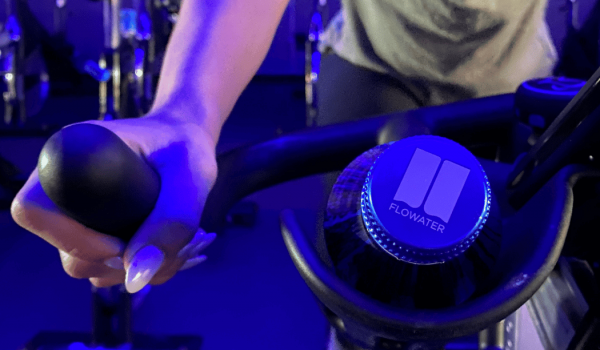
Hydration and Your Physical Fitness: How much to drink and it’s benefits
Drinking water to stay hydrated is especially important for athletes and general active people!. Whether you’re healing from an injury, surgery or…
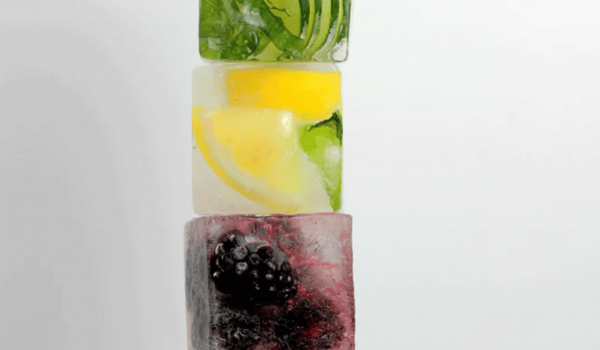
Level Up Your Summer Hydration with These Ice Recipes
Summer is here and so is the heat! Which means hydration is more important than ever – especially if you have kids…
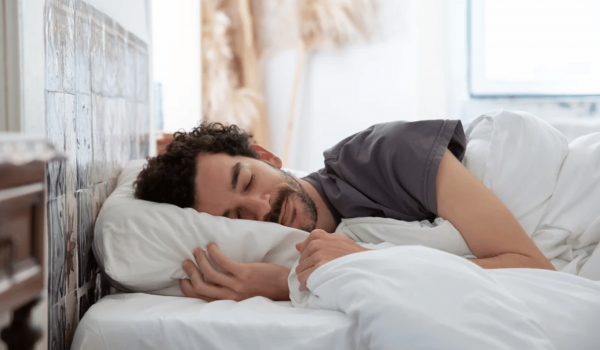
How Sleep is Impacted by Your Hydration Levels
Most water loss happens through urination, but the body also loses fluid through the skin and from respiration, which is known as insensible…

The Top 9 Coworking Amenities Tenants Want Post-Covid
COVID-19 has turned the approach people once took to work on its head: They used to be accustomed to driving back and…

5 Ways To Incorporate Water Into Your Coworking Office Floor Plan
The COVID-19 pandemic changed how people live and interact with the environment. Face masks became a norm, along with carrying around personal…
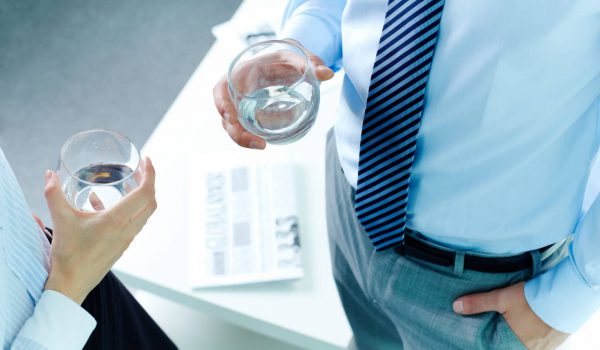
The Importance of Commercial Water Filtration
Did you know that 74% of companies with revenues of $1 billion or more have found clean water to be an increasing…
Subscribe & get your free guide to going abroad!!
The Best Portable Water Filters for Travel: 27 Perfect Options, and Why You Need One to Save Money and Stay Healthy
For adventurous wanderers, a portable water filter for travel is insufficient. a portable water purifier is necessary.
A major mistake that many travelers make is assuming that because they have the best filtered water bottle or travel water filter available that they are ready to drink from any water source in any place, but the average portable water filter (such as Lifestraw) doesn’t remove viruses – and that’s the major flawe that should drive your decision.
For adventurous international travelers that may end up in rural back country or the urban sprawl of a developing nation, in areas frequented by people and animals, a true portable water purifier is necessary to turn tap water into safe drinking water for the average North American or European.
Below, we’ve listed all of the travel water purifier options on the market suited for adventurous international travelers aiming to keep their pack small
Click here to jump to our list of the Best Travel Water Purifier Options
The most important reason drinking dirty water is such a risk, and why is drinking purified water so important: traveler’s diarrhea, parasitic infections, and gastrointestinal diseases.
We all want our travels to be as enjoyable as possible – enjoyment is specifically why we travel. Drinking “dirty” water, or more specifically water from an unpurified source that potentially carries bacteria, viruses, protozoa, and parasitic helminths, can quickly ruin your health and weeks of travel.
According to the CDC , most of the organisms that cause the much dreaded “traveler’s diahrea” can be transferred, and are most commonly acquired, through contaminated and unpurified water sources. This is why having a water purifier when traveling adventurously, to places throughout SouthEast ASia, South America, the Middle East, and Africa, is so important. In countries with poor hygiene (think, handwashing practices after using the bathroom and food handling practices in the kitchen) and inadequate sanitation practices (keep an eye on whether trash is sanitarily stored before disposal, or sits in the open and how sewage is disposed of) common water sources can become very contaminated carrying.
Though you can review CDC’s drinking and eating recommendations by country , generally avoiding drinking unfiltered tap water in South America, Southeast Asia, the Middle East, and Africa is a reasonable safe practice to take on that has kept me healthy during my travels.
So if we can’t drink tap water in most countries, what can we drink? And why is a portable water filter or purifier essential for travel in SEA, South America, and my other favorite destinations?
Why you need a portable water filter: To avoid disposable water bottle trash and protect yourself by knowing your water is clean.
Straight forward, here are the reasons you want to travel with a water purifier or at least a water filter .
- Drinking tap water is not a safe option in most of Southeast Asia, Central Asia, South America, the Middle East, and Africa
- When traveling through Southeast Asia, South America, adventures and off-grid destinations, the free “filtered water” may be insufficiently filtered or may have been standing too long to be safe
- In some locations, local vendors have been known to refill water bottles with tap water. To get around this, carry a purifier or filter to be safe when adventuring through rural destinations.
- Extensive environmental damage from plastic water bottle related waste is destroying beaches in some of our favorite destinations
Carbon packed water filters generally improve water taste and quality
- Constantly drinking bottled water when traveling is an unnecessary cost to your wallet. ($60 to $90 additional per month)
Drinking tap water is not an option in Southeast Asia, Central Asia, South America, the Middle East, and Africa
As we’ve reviewed, if you are traveling to some of the best destinations in the world, or wandering through some of the best cities for nomads and backpackers the tap water is not drinkable, for your safety and by the Center for Disease Control recommendations
When traveling through Southeast Asia, South America, adventures and off-grid destinations, the free “filtered water” may be insufficiently filtered, or may have been standing too long to be drinkable
Many welcoming and wonderful hostels and restaurants throughout South America and Southeast Asia are kind enough to offer free water for guests, in hopes of reducing water bottle waste and keeping their customers healthy. This is the kind of beautiful hospitality that makes travel to adventurous destinations around the world wonderful, however, wary travelers, especially those with sensitive digestive systems, should be wary.
Whereas some locations, like in Bali, have a standard process of delivering disinfected water, many other places have a less standard approach – perhaps a pitcher of filtered water or water from an unlabeled 5 gallon water bottle. If these bottles aren’t labeled with clear indications that they have been commercially disinfected and purified and delivered sealed, your best bet – to avoid a bout of traveler’s diarrhea – is to either stick to sealed, purified sources of water or use your own purification/filtration process in addition to the filtered water.
Though many hostels and hotels likely do only use water with a high level of purification, there is a very risk that a substandard filtration system or that the properly filtered water has been sitting exposed too long. Here, at my nomadic base in Bali, as a complement of beautiful island lifestyle, even bottled water poured into a cup and allowed to sit for a few days can collect mold, bugs, or waterborne bacteria that can ruin a week of travel – and the same can happen to a dilapidated water filter out of view in the back.
To avoid the risk of overestimating the water filtration capabilities, simply use the water (which may not be perfect but is far better than tap water) and pair it with one of the water purifiers on this list to ensure the best health possible and leave the risks for other, more worthwhile adventures.
In remote locations of developing countries, some local vendors have been known to refill water bottles with tap water – carry a purifier to be safe when adventuring through rural destinations to re-filter questionable bottled water
During my motorbike travels through far northern and rural Vietnam and into very rural Laos, finding a recognizable brand of bottled water was uncommon, but worse, finding a 100% trustworthy brand was difficult, simply because many of the water bottles had been sitting for so long. “Aged” water isn’t a problem however in some rural destinations, unscrupulous shopkeepers (around the world) have been know to refill used water bottles with tap water (not disinfected) ultimately putting you at risk without knowing it.
If you’ll be in a far off destination where the source of water (even bottled water) will be questionable, carrying a source for purification – such as a quick UV light – is an excellent choice.
Extensive environmental damage from plastic water bottle related waste is destroying beaches in some of my favorite destinations
Personally, the best reason for carrying a good water filter or purifier, aside from avoiding the unpleasantness of the sickness that comes from unsafe drinking water, is to avoid creating more disposed plastic bottles.
Some of the places that had potential to be the most beautiful places I’ve visited were beaches and destinations with thousands of miles of coastline ruined by trash washed ashore. This picture of Bali, just south of tourist beaches south of Canggu and north of Seminyak, shows the plastic that washes ashore everyday during the wet season.
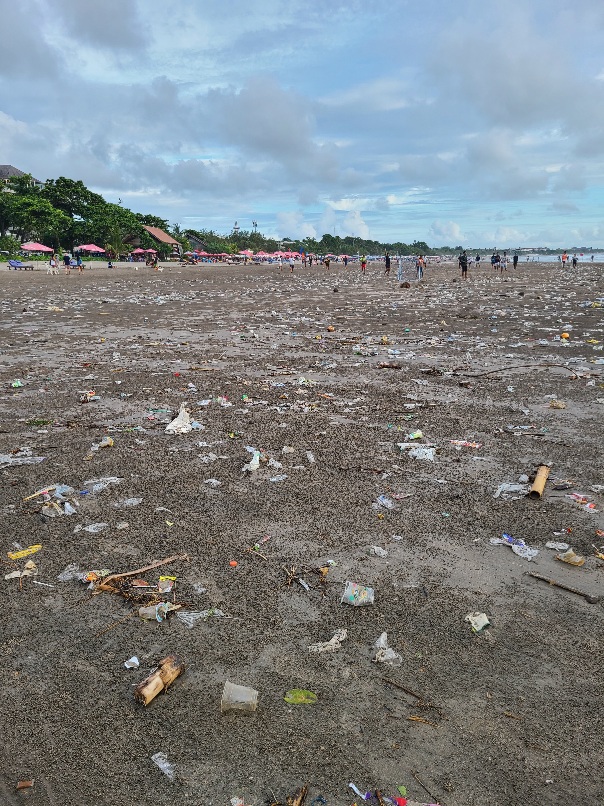
In developing countries with weaker trash disposal infrastructure, such as on Indonesia and the island of Bali, plastic that is “disposed of” commonly ends up in piles that are stacked and rarely end up in landfills, but more likely wash out to sea – eventually returning to ruin potentially beautiful shores as this picture shows.
Every single plastic bottle you use takes around 450 years to decompose as detailed in this article by WWF on the life of plastics and impact on the environment.
Even the most conservative filters can filter 150+ liters of water, equating to at least 150 bottles. If you’re in Southeast Asia and use a water filter instead of purchasing bottles of water, you’ve effectively saved 150 plastic bottles from washing ashore or into delicate ocean ecosystems.
Some places you may travel to (parts of the US for instance) may have potable, disinfected water, but the chemicals used (such as chlorine), or the water source (near volcanic lands) can leave the water drinkable but with off odors and tastes.
In water bottle filters, such as the **Lifestraw Go water bottle**, often have carbon packed filters and carbon is generally excellent at not only filtering water but improving the flavor.
Constantly drinking bottled water when traveling is an unnecessary cost to your wallet ($60 to $90 extra per month).
The average person needs 2 to 3 liters day minimum, and the average liter of bottled water costs roughly $1.
That means every 30 days you will spend $60 to $90 minimum if you plan on bottled water as your source of water. That $60 to $90 is the equivalent of 2 to 3 days of accommodation, food, and enjoyment in most destinations in Southeast Asia and South America.
Do your travels a favor – get a filter, skip the bottled water, and save the extra money.
The best solution for your health, and the environment: Refill a reusable water bottle with available potable water, and filter or purify for your safety
Ultimately, the best way to save money, save trash, and save yourself the trouble of diarrhea is to carry a well rated and effective water purification method you are confident in.
Pair that water purifier or filtration device with a good reusable water bottle – such as a **Smart Kanteen** or a **Nalgene** – and you’ll be able to have safe, clean water, virtually anywhere, without destroying the beach you flew across the world to get to.
However, not all water filter and purifier devices are made equal.
Let’s talk about how to find a good way to filter and purify water, appropriate to your travels.
The Difference Between Water Filters and Purifiers
The difference between water purifiers and water filters is purifiers use a water cleansing method that removes all harmful waterborne pathogens, chemicals, and contaminants that make water unsafe , including bacteria (like E. coli, salmonella and campylobacter), viruses (like hepatitis A, rotavirus and norovirus), protozoa , parasites (like cryptosporidium and giardia lamblia), heavy metals, and any undesirable elements in water,
Water filters simply use a filtration method, forcing water through a filtration medium that separates solids larger than the pores from the water , while potentially allowing contaminants smaller than the absolute pore size of the filtration medium through to the discharged, filtered water.
While purified water can be trusted to be safe and drinkable, some water filters have a pore size that is too large to filter out viruses, heavy metals (which are dangerous to consume), and chemicals.
Types of Water Filters, Filtration Methods, and Purification Methods **
- Mechanical straining and filtration (pushing through pores of a filtration medium)
- Electro – Adsorption
- Chemical Disinfection: Iodine
- Chemical Disinfection: Chlorine Bleach
- Ultraviolet Disinfection
Your average portable water filter isn’t good enough, so, what do we need in a travel ready portable water purifier ?
A travel water purifier should be contained in a bottle or in a very small, self-contained package, be able to remove any likely waterborne threats, last for the duration of your trip, and be easy to use.
Criteria for a good travel water filter:
- Eliminates viruses, bacteria, and protozoa/parasites: Filtering chemicals and heavy metals would be a great plus but isn’t necessary
- Long Life: The best travel water filter options have a useful life that will last on an extended trip (3-6+ months) and for the length of your trip. This accounts for durability and filter life
- Brand, Reputation, Reviews: From a reliable brand with a product that is reviewed well on multiple platforms (Amazon, blogs, etc.) – reputation and reviews are good assurance that the product will last through the adventures
- Small, self-contained design: Must be very packable no larger than a small pocket at max
- Clean, simple design: Avoid contraptions with external hoses that can break or snag
Also consider these options:
Consider getting a purification system that is an “EPA designated water purifier.” According to the CDC, “Filters that claim Environmental Protection Agency (EPA) designation of water “purifier” undergo company-sponsored testing to demonstrate removal of at least 106 bacteria (99.9999%), 104 viruses (99.99%), and 103 Cryptosporidium oocysts or Giardia cysts (99.9%).”
Any water filtration systems that are EPA designated water purifiers will be good in most places, excluding the possibility of chemical contamination or heavy metal contamination in the water.
For areas that have high human or animal activity (such as most cities) and poor sanitation practices and conditions, a filtration or purification method removes viruses is recommended by the CDC . Ultrafiltration (remove particles of 0.01 microns), nanofiltration (remove particles of 0.001 microns), and reverse osmosis (can remove particles of 0.0001 microns) are capable of filtering out viruses and enteric pathogens.
Filters with pore sizes of 0.001 microns or smaller are capable of removing chemicals and organic molecules.
Reverse osmosis filters, which pore sizes of 0.0001 µm [0.1 nm] and smaller) can remove salts, desalinating water, and remove dissolved metals.
(Source: CDC Recommended water disinfection practices )
The main types of portable water purifiers and water filter bottles
- UV Light and UV Purifier Options: Effectively use ultraviolet light to disinfect water against bacteria, parasites, and parasites, but can be less effective in cloudy water.
- Activated carbon filter cartridge options: Activated carbon effectively asdorbs (chemically attaches to thus removing from water), organic compounds, inorganic compounds and chemicals, like chlorine and iodine, and thus improves the odor and flavor of water. Howver, activated carbon filters are generally not rated for microbe removal and do not kill microorganisms, so are often paired with another disinfection/filtration method.
- Chemical Purifiers: Chlorine compounds and iodine are common examples of chemical disinfectants that are effective against bacteria and viruses
- Gravity filters or pump filers: Use a porous medium to push water through, removing microbes of a designated size or larger. These commonly don’t remove viruses, unless there is an electrochemical filter added to the normal medium. Judge these filters, and what they filter, based on their absolute pore size, not their nominal pore size.
Note: No matter what filter you have, always avoid potential chemical and heavy metal contaminated water sources at all costs. Even most “purifiers” don’t remove these elements well enough to risk it.
Additionally, avoid water sources that have potential viral contamination (from waste of humans or animals) if you are using a water filter that isn’t rated (by absolute pore size) to filter out viruses.
Why do viruses matter in choosing a travel water purifier?
Viruses are microscopic organisms, much smaller than parasites and bacteria, that when ingested cause disease and are transferred via contact with animal or human waste (i.e., feces, urine). In North America and Europe, the risk of viruses in tap water and rural water sources is low. Unfortunately, when traveling in rural areas and urban centers of developing countries differences in customs and infrastructure standards, compared to North America and Europe, can often lead to contaminated water supplies.
1. Bathing and water disposal in rural lakes and streams often contaminates rural water sources with viruses from humans
Customs, such as bathing in local water sources and disposing of waste in drainage runoffs that lead to local water sources, make most international, rural water sources very likely to be contaminated with viruses from human waste.
2. Leaks and unidentified breaks of underground pipes in developing countries can mix wastewater with freshwater and leave viruses in tap water without any clear warning
For these two reasons (local customs and degraded infrastructure) ensure your portable water filter is capable of removing viruses, in addition to bacteria and protozoa/parasites when you travel abroad.
Questions to ask when choosing the best portable water filter or purifier for you**
Questions to ask about your needs and your travels
- What do you need to filter out? Bacteria, parasites, viruses, chemicals, or metals?
- Where will you be traveling? What are the common contaminants or situations you’ll face? (Check the CDC websites)
Questions to ask about the water filter or purifier you purchase
- Does it remove the contaminants from the water that you are likely to face while traveling?
- How long (time or gallons/liters of water) is it good for? How easily can the filtration system be replaced?**
- What special issues are there for the filter? Doesn’t work with cloudy water? Doesn’t improve taste? Requires a separate container? — And will these limitations be ok for your planned travels?
HUGE WARNING: Always avoid farm and industrial waste runoff. These sources are more likely to contain chemicals and heavy metals and few portable water purifiers reliably remove these elements.
Be sure to check the CDCs food and drink recommendations. ( CDC Travel Site Link )
Best travel water purifier options, 1. the grayl water purifier bottle.
- 2. The Sawyer Select S2 and S3 Filter Bottles
- 3. Lifesaver Liberty
4. Etekcity Personal Filter
Additional Options
- Sawyer mini water filter**
- Lifestraw Go
The water purification new kid on the block, The Ultralight Grayl Water Purifier Filter Bottle is an excellent open for purifying water while traveling with a french press style design and function and easy to replace filters.
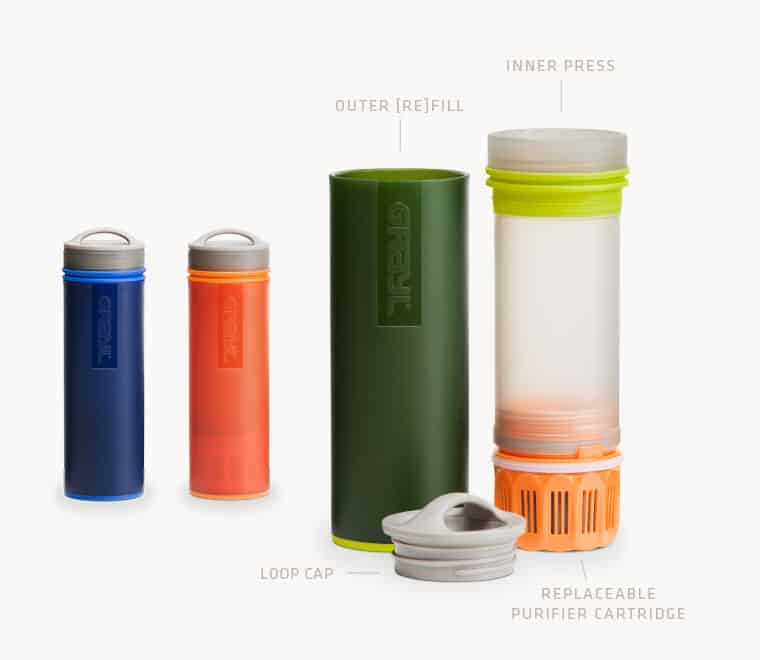
- What it filters: Viruses, Bacteria, Protozoa/Parasites, some Chemicals, some Heavy Metals
- What it doesn’t filter: Filters everything
- Lifespan (in liters & days): 150 liters per filter, 37 days of water at 4 liters per day
- Replacement filter costs : $25
- Recommended region & use: Great for any region of travel, compact enough for any type of travel
- Brand Reliability & Reviews : The Grayl water purifier is a new product and receiving many great reviews but reviewers have stated that when repeatedly using murky or sediment heavy sources, the Grayl can clog much more quickly (~1 week of routine use in the backcountry). Pro Tip: Avoid this and extended the by filtering your water with a bandana or t-shirt before purifying with the Grayl.
- Bottom Line: A new product receiving great reviews but limited by filter life (1 month). The Grayl Water Purifier Filter Bottle appears to be a great short-term travel water purifier, just remember to bring an extra filter from home if you’ll be gone longer than a month. Not recommended for RTW trips.
Purchase the Grayl Water Purifier Bottle on Amazon or REI
2. the sawyer select s2 and s3.

- What it filters: Viruses, Protozoa, Chemicals, Pesticides
- What it doesn’t filter: Heavy metals
- Lifespan (in liters & days): 484 liters, 121 days at 4 liters of water per day
Purchase the Sawyer S2 on Amazon or at REI

- What it doesn’t filter: You’re covered for everything with the S3
- Lifespan (in liters & days): 242 liters, 60 days at 4 liters of water per day
- Recommended region & use: The S2 and S3 are capable of filtering water commonly available in urban centers and rural areas of the developing world.
- Replacement filter costs: Replacement filters not available
- Brand Reliability & reviews: Sawyer is renowned for great portable water filter options for the backcountry. Sawyer’s newest additions (the S2 and S3) perform the job of filtering out nasties very well. Users have reported frustration on occasion with difficulty manually squeeze water through the filtration system and with an odd flavor for the first several uses of the system.
- Bottom Line:
Purchase the Sawyer S3 on Amazon or REI
3. lifesaver liberty.
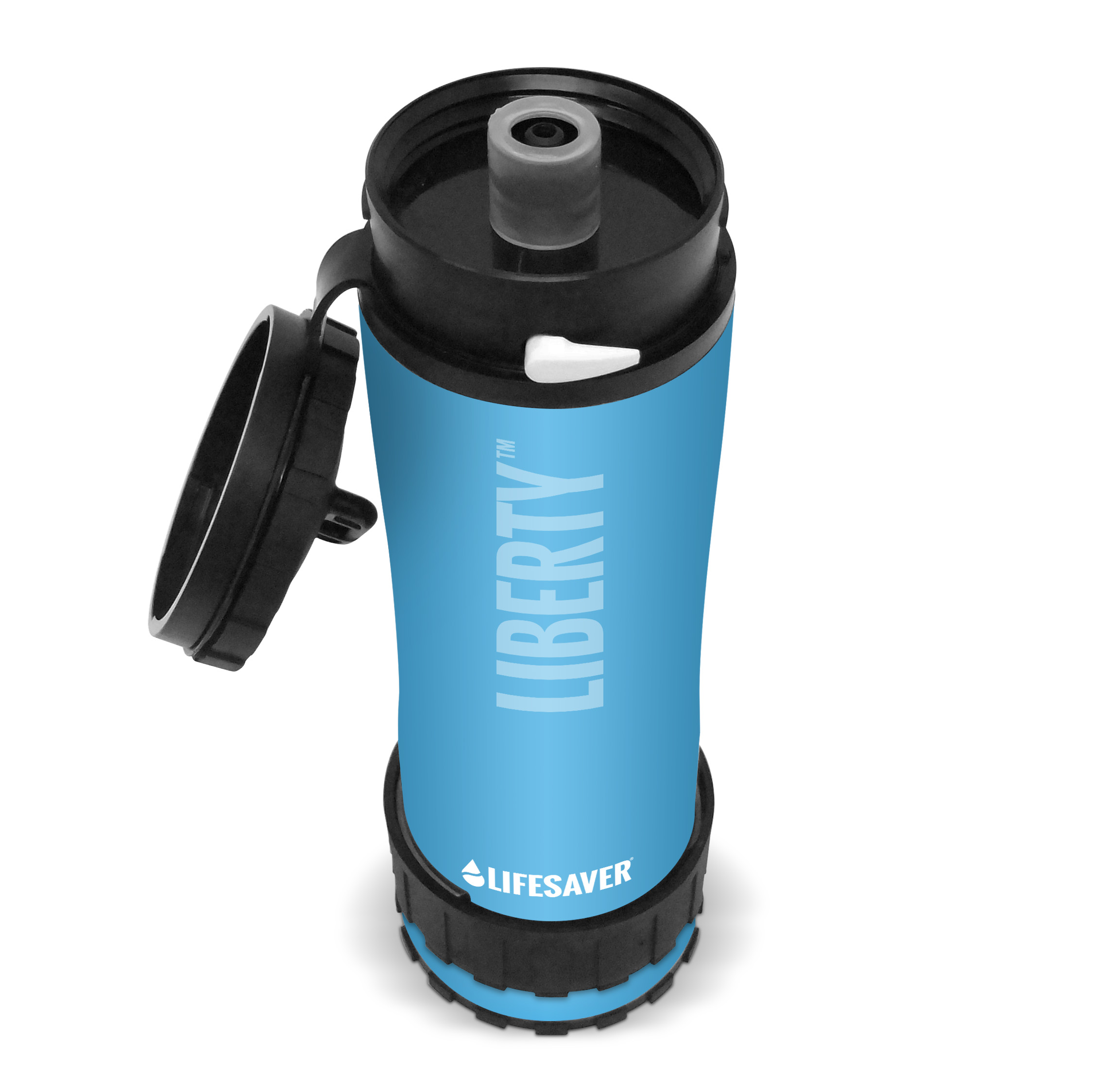
- Lifespan (in liters & days): 2000 liters, 500 days at 4 liters per day
- Replacement filter costs: $40
- What it filters: Viruses, Bacteria, Protozoa/Parasites
- What it doesn’t filter: Chemicals, Heavy Metals
- Recommended region & use: Suitable for everywhere – originally designed for disaster relief efforts
- Brand Reliability & reviews – What are other people saying?: Large and cumbersome (similar to a coffee thermos) but a suitable option for reliable water if you’ll be spending extended time in the bush.
- Bottom Line: This is the only filter water bottle with an inline pump, meaning you won’t have to suck the water through, just pump. Additionally, a detachable hose allows you to refill from streams but remove it and tuck it away while on the move. The Liberty is the newest among our travel appropriate portable water purifier bottles…but that remains to be proven.
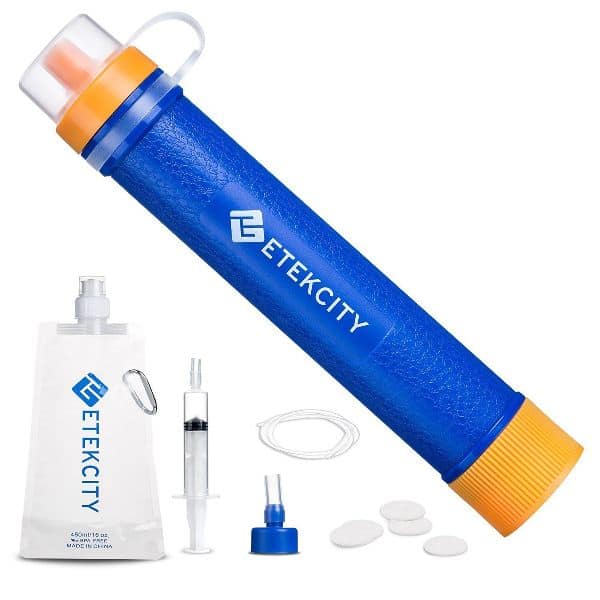
- Lifespan (in liters & days): 1500 liters, 375 days at 4 liters per day
- Replacement filter costs: Filter not replaceable
- What it filters: Bacteria and Protozoa/Parasites
- What it doesn’t filter: Some viruses
- Recommended region & use: Not for travel (see reviews)
- Brand Reliability & reviews – What are other people saying: Though this filter cleans water very well, sucking water through the straw is extremely taxing and not worth the work. This filter is more for a survival scenario as a last resort than adventurous travel situation where you to use it. Additionally, there isn’t clear evidence on the manufacturers site of tests proving the filter can remove viruses.
- Bottom Line: Designed for survivalists and should be combined with chemical or UV purification for safety. Travelers should look elsewhere
Other Popular Portable Water Filter options, and why they’re inadequate (but still awesome)
The following portable water filters are beloved by their following but are inadequate for international travel as they do not filter out viruses. The Sawyer Mini, Lifestraw, MSR Trailshot, and Survivor Straw Filter all contain pore filter sizes too large to remove all viruses. See how your favorite portable water filter pore size stacks up against common viruses
Average Virus Size: 0.004 to 0.1 microns
Common Viruses and Sizes:
Hepatitis A, 0.004 microns
Rotavirus, 0.004 microns
Norwalk, 0.004 microns
The Best Travel Water Filter Options and Filtration Capabilities
Sawyer mini.

- What it doesn’t filter: Vruses – Doesn’t filter Hepatitis A, Rotovirus and Norwalk virus
- Filter Pore Size: .1 Micron
The Sawyer Mini is available on Amazon and at REI
Msr trailshot.

- What it doesn’t filter: Viruses – Doesn’t filter Hepatitis A, Rotovirus and Norwalk virus
- Pore Size: .2 Microns
The MSR Trailshot is available on Amazon and at REI
Lifestraw ( lifestraw go , lifestraw universal , and original lifestraw ).
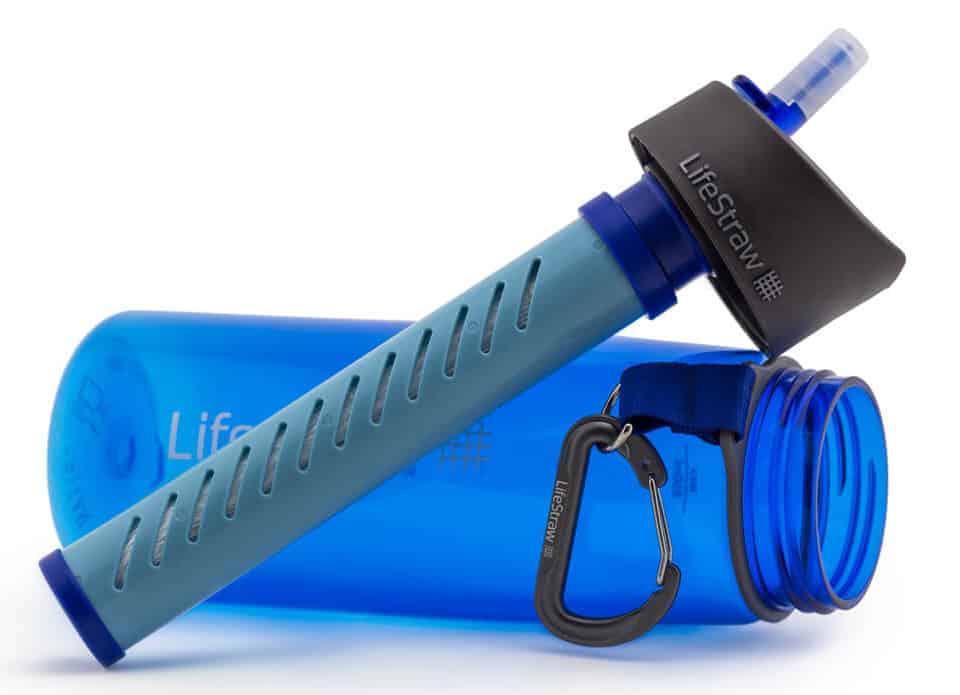
- Filter Pore Size: .2 Microns
Available on Amazon and REI
Survivor Straw Filter

- Pore Size: .05 microns
Ultimate List of the Best Portable Water Filters for Travel
Water Purifiers
- Water to Go Water Bottles (Classic, Active, and Go!) – https://watertogousa.com/
- Lifesaver 4000UF – https://iconlifesaver.com/product/lifesaver-bottle/?v=7516fd43adaa
- Grayl Geopress – https://grayl.com/products/24oz-geopress-filter-purifier-water-bottle-nature-edition
- Grayl Ultralight Water Purifer – https://grayl.com/products/16oz-ultralight-compact-filter-purifier-water-bottle
- Epic Water Filters – Ultimate Travel OG Water Bottle – https://www.epicwaterfilters.com/products/ultimate-travel-bottle-og
- Sawyer S1 Select Water Filter – https://www.sawyer.com/products/s1-select-water-filter
- Sawyer S3 Select Water Filter – https://www.sawyer.com/products/s3-select-water-filter
- OKO Original with Level 2 Filter – https://okoh2o.com/product/oko-original/
- Katadyn BeFree . 6L – https://www.katadyngroup.com/us/en/8019639-katadyn-befree-0.6-us~p10915
Ultraviolet Disinfection Options
- Waatr Crazy Cap – https://waatr.com/pages/crazycap
- Katadyn Steripen Ultralight – https://www.katadyn.com/us/us/72078-ULL-MP-EFG-UltraLight
- Katadyn Steirep Adventurer Opti – https://www.katadyngroup.com/us/en/ado-mp-efg-steripen-adventure-opti-uv-water-purifier~p6693
Water Filters (Do Not Remove Viruses)
- Lifestraw Go – https://lifestraw.com/products/lifestraw-go-1l
- Lifestraw Go Stainless Steel – https://lifestraw.com/products/lifestraw-go-steel
- Lifestraw – https://lifestraw.com/products/lifestraw-go-1l
- Lifestraw Flex – https://lifestraw.com/products/lifestraw-flex
- Lifestraw Universal – https://lifestraw.com/products/lifestraw-universal
- Sawyer Mini Water Filtration System – https://www.sawyer.com/products/mini-water-filtration-system
- Sawyer Squeeze Water Filtration System (Models SP129, SP131, SP137) – https://www.sawyer.com/products/squeeze-water-filtration-system
- Sawyer Bottle Water Filtration System – https://www.sawyer.com/products/bottle-water-filtration-system
- Aquapure Traveller Filtered Water Bottle for Travel – https://purehydration.com/products/aquapure-traveller
- Katadyn Vario Filter – https://www.katadyn.com/en/de/251-8014932-katadyn-vario-eu
- https://seychelle.helpscoutdocs.com/article/51-what-do-seychelle-products-reduce-from-tap-water
- Sawyer Personal Water Filter Bottle – https://www.sawyer.com/products/personal-water-filtration-bottle
- MSR MiniWorks EX Microfilter – https://www.msrgear.com/water-treatment/filters-and-purifiers/miniworks-ex-microfilter/56425.html
- NSF Guide to Water Filtration Standards 42, 53, 44, 55, etc. https://www.nsf.org/consumer-resources/articles/standards-water-treatment-systems
Recommended Water Bottles
- Klean Kanteen
Frequently Asked Questions about the Best Portable Water Filter for Travel Options
How do you filter water while traveling.
Water should be filtered using a portable travel filter with an absolute pore size smaller than the largest contaimant (e.g., bacteria, viruses, parasites) that you will face during your travels. Be sure to operate the filter according to manufacturer specific instructions based on its function as a gravity filter or pump/suction filter.
Which portable water filter is best?
The Grayl water bottle purifier is currently the best, safest, and most convenient water bottle purifier for travelers.
Do travel water filters work? How effective are portable filters?
Travel water filters fo work, however, each travel water filter is only as effective as its tested specifications at removing microbes of the declared absolute micron filtration size.
ABOUT THE AUTHOR
Carlos is a nomad, slow traveler, and writer dedicated to helping others live abroad and travel better by using his 7+ years of experience living abroad and background as a management consultant and financial advisor to help other nomad and expats plot better paths for an international lifestyle. Click here to learn more about Carlos's story.
- Partnership
- Travel Blog
- Responsible Travel
- Online Payment
- +977-9851058664 Call us 24/7
- [email protected] Email support
Hydration in the Himalayas – A Complete Guide to Water Purification on Trekking

An amazing place in the universe is the planet Earth, where all types of living organisms exist. The human being with plants and flora where survives with the support of water. Similarly when traveling from one country to another where all travelers need to carry smaller containers or water bottles.
As water is life, without this valuable gift of nature, nothing can survive and all travelers should be well aware. Nobel Adventure Tour and Travels brings this great topic and subject to help all trekkers, traveling around the Himalayas.
A subject is collected from various sources to blend into one topic, making it easier for trekkers how and why. Water is needful to the body when trekking the Himalayan country like Nepal, the land of the world’s highest mountains.
Nepal with massif Himalayan range where hundreds of streams, rivers, and lakes are formed from the glaciers. The country with the world’s highest volume of fresh water from its natural source makes a country rich in hydropower.
As well as for irrigation to various agricultural fields and terraces from mid-hill, green valley to low-land of the Terai belt. The main source and gift of nature to Nepal are its high Himalayan Mountains, the savior for all living beings.
Every drop of water is precious to nature and for human life to survive on this beautiful planet. Where humans, plants, animals, and birds can live for some days without food; but water is essential at every hour of the day.
The most important than in normal walks of life is while you are outdoors with physical activities like trekking. Whether on sunny days or on cooler days of walking, where trekkers can get dehydrated, losing enough fluids from sweat.
On every step on treks climbing uphill needs more energy and power, where every sip of water will help. From the danger of dehydration which might lead to ill health, the power of water will be an elixir.
Table of Contents
5 Safe Ways to Drink Water in the Himalayas
Enjoy safe drinking water from the filling stations.
While on treks around Nepal Himalayas, there are few regions where one can refill your water bottle for the day. Which is only in Annapurna Himalayas, the facilities provided by ACAP (Annapurna Conservation Area Project). In the future, there might be other popular areas of trekking routes, like Everest, Langtang, and Manaslu. The water filling stations are 100 % safe, at the lowest cost that you buy from the lodge’s restaurants. So far the drinking water stations are available on the way to Annapurna Sanctuary at Chomrong village. As well on the Annapurna Circuit Route near Chame Town, where one can enjoy the facilities of safe drinking water.
Boiling to Certain Safe Temperatures
Of all the drinking pure clear clean water to drink apart from fresh spring is boiling and cooled water. The boiling water should be boiled to certain temperatures above 100° degree Celsius or 212 Fahrenheit. That kills all the bacteria and makes the water safe for drinking, in some areas of trekking. For around high Khumbu, Langtang, or Mustang region it might be more costly, than filling stations.
But it will be the only and best option for one’s health during the trekking days and for being safe from bugs. On Tea House or Lodge Trekking make sure it is boiled properly and filtered separating the saturation.
Using Disinfecting Measures Like Adding Purifying Tabs or Lodine
Besides the pure form of spring water, is hard to find at present due to the presence of human settlements. Well as grazing of animals, but one can use purification tablets to kill bugs or bacteria? From the waters of the clean springs, running streams, creeks, or brooks. The purifying tablets work only about 60 to 80 % on
In Himalayan waters, as in Nepal, there are two types of water, hard and soft.
The hard waters are full of iron, magnesium, sodium bicarbonate, and other minerals, which are good for health. But for people used to soft water will be hard to digest, one should be used to it for a week or more. The soft waters are found around the lowland of the Terai belt, which is free from minerals. But the taste of the water is not good up to the mark, can smell and taste pungent. For example, when you wash your hands with soap the lather or foam comes less with hard water. Whereas with soft water the soap foam easily forms enough to wash your hands or body.
The other method is using iodine as an option from purifying tablets, it works better than purification pills. But the taste will be different till you are used to it for some days.
Filtration to Make the Water Clear from Sedimentation
The best water method is to have clean and fresh water fresh from the taps, running streams, or creeks and wells. Using a portable filter gadget, available in trekking shops and stores in Kathmandu or at Pokhara. Can bring from your home country to be safe from the product and how it functions. The best ways way of filtration from unwanted sedimentation in the water is to be able for drinking purposes. But the filtration should be good and must be cleaned and washed quite often, after being used.
Leaving in the Sun for a Long Time and Purifying with the Help of UV
The other best method of purifying the water for drinking purposes is leaving the water bottle in the sun. At higher altitudes above 3,000 m / 9,843 feet, the sun is strong with bright UV, Ultra Violet rays. Leaving in the sun can be time-consuming, but it is worth the effort if you have time at one place for an hour or more. So that the drinking water in your bottle is purified by the hot sun with strong Ultra Violet bright rays.
Annapurna Himalaya Region

At present, there are water filling stations on Annapurna trekking routes , like around Annapurna or Annapurna Circuit . As well as on the way to Annapurna Base Camp and the Sanctuary. Carry at least two water bottles to refill water from the stations where available, which is cheaper than buying from the lodge.
Eco- Responsible Tourism
We discourage using plastic bottled mineral water unless the plastic is recycled, otherwise, it creates much garbage. As the Himalayas are sensitive, where all should follow the rules of Eco or Responsible Tourism. By making the country free from litter and waste, enjoying safe, and following Eco-Tourism rules and norms.
That leaves nothing behind except for your footprints, Carry the litter and dispose at proper disposal sites.
Our Partners

We are associated with

Sister Company


The Best Travel Water Filters To Keep You Healthy On The Road in 2023
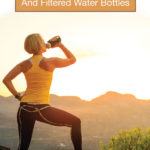
Find the best travel water filters for 2023. These portable water filter brands give you clean, purified water while you travel.
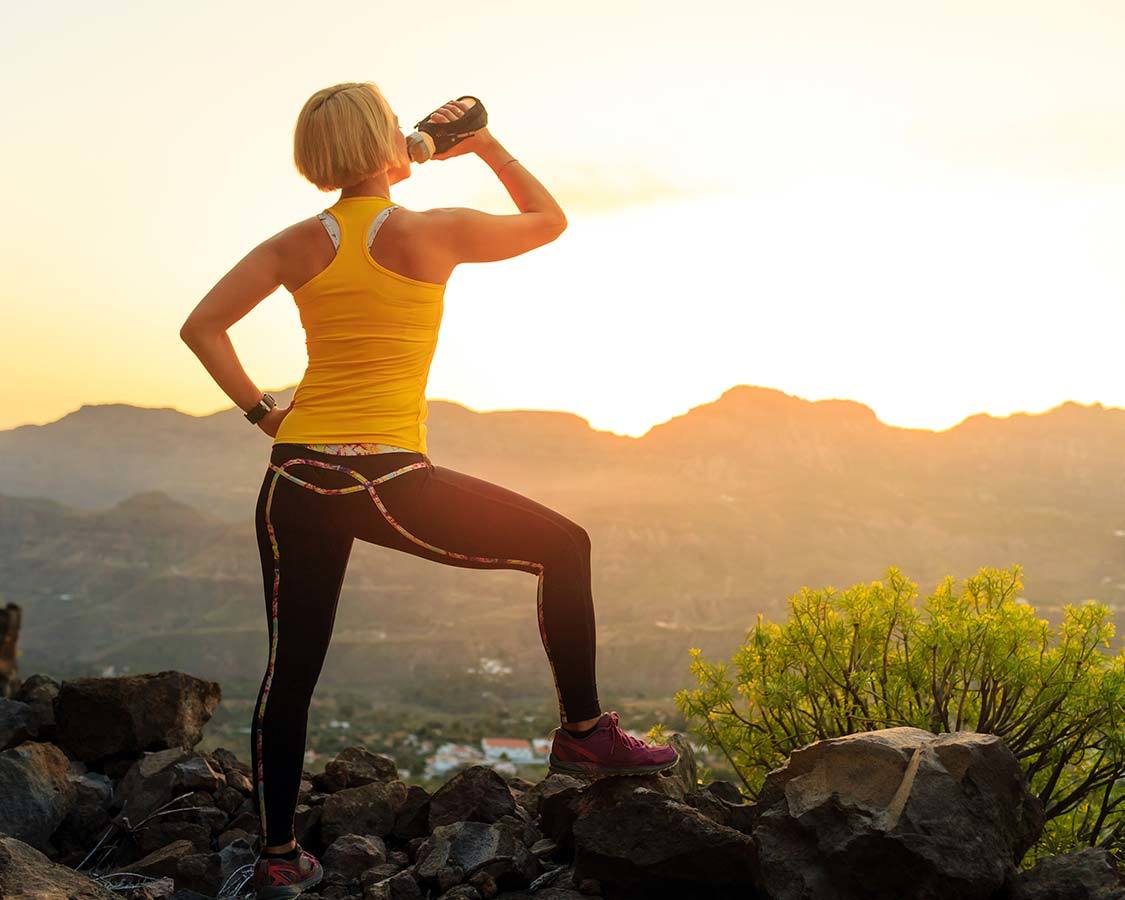
Finding the balance between clean water while hiking and traveling and maintaining a sustainable ecological footprint can be a challenge. Disposable water bottles are not only unwieldy, but they also are a huge contributor to pollution and waste.
Travel water filters and portable water purifiers offer a convenient and environmentally friendly alternative to purchasing bottled water for those who hike, camp, or travel. Ready access to clean water is also an essential part of staying healthy while traveling .
In this guide to the best travel water filters, I’ll explain the difference between water filters and water purifiers and share which water filter products I recommend based on the type of adventurer that you are.
Water purifiers offer the benefit of clean, safe water on demand. And they do this while minimizing ecological damage . If you travel to off-the-beaten-path destinations, they can also help ensure that these bottles don’t end up in the trash where advanced recycling infrastructures likely don’t exist.
Travel water filters come in many different forms, but the ones that I recommend here will ensure that you have clean, fresh-tasting water which won’t leave you with a bad case of Delhi Belly.
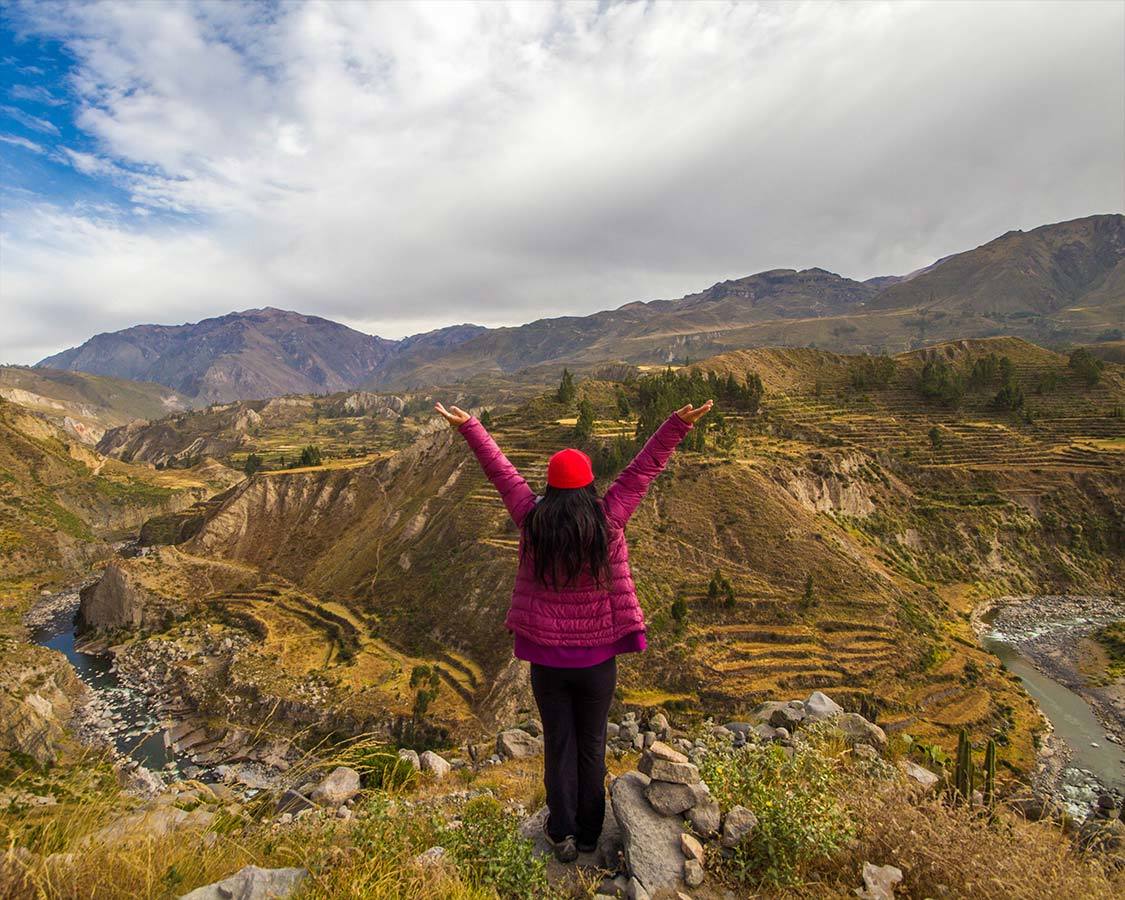
Why Trust My Opinion On Filtered Water Bottles?
Table of Contents
I have spent much of my adult life traveling the world . I’ve adventured everywhere from far-north of the Arctic Circle to remote Guarani villages in Argentina and everywhere in between.
When I became a Dad back in 2011, those travels didn’t stop. They just got more intense. Becoming a Dad simply re-inforced my need to keep my family safe during our remote travels and outdoor hiking and camping adventures.
I use travel water filters not just as a way to reduce my impact on the environments that I’m visiting, but also for the convenience of having fresh and clean water at my disposal almost everywhere, and to keep myself and my family safe from bacteria and viruses that can be found in unknown water sources.
During our travels, we’ve been in our fair share of places where finding clean water was a challenge . And when traveling in countries without drinkable water, travel water purifiers have been, literally, a life-saver.
Travel water purifiers are small, easy-to-use, and offer an even healthier alternative to bottled water , even when taken from the nastiest sources of water. The number one rule when traveling to many countries is “don’t drink the water.” A travel water purifier can change that.
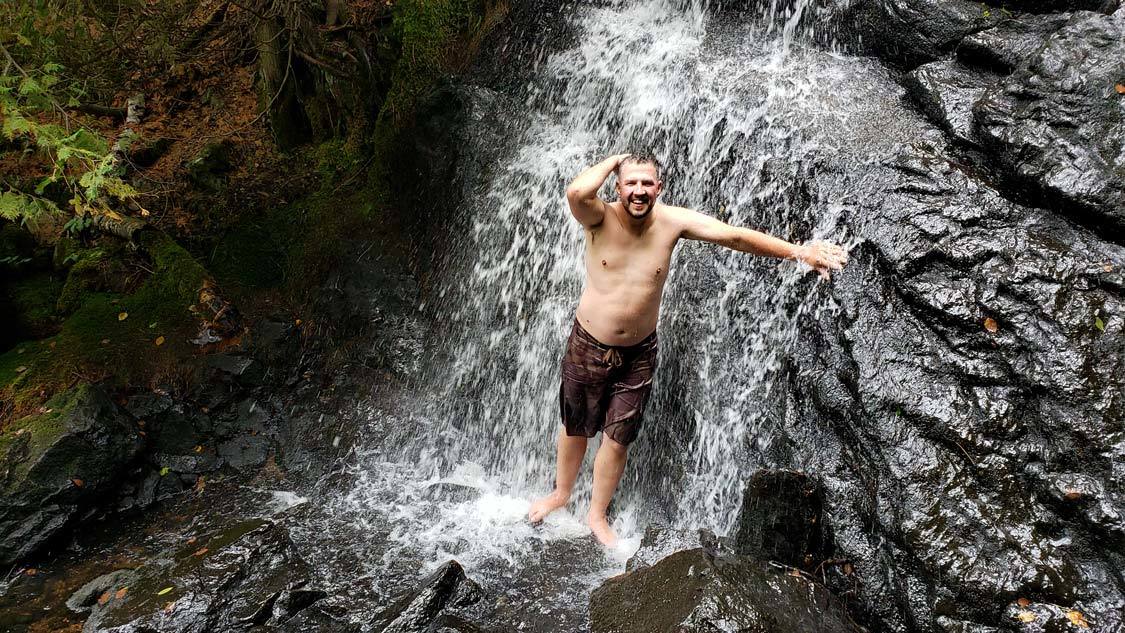
The Best Water Filters and Water Purifiers
I know that time is short, so if you don’t have time to read my in-depth reviews of the best water filters for travel, camping, and hiking, I’ve laid out my top picks along with my main weighting factors when choosing the best travel water filters in this chart below.
If you’d like to see more information on each one of these products, keep scrolling and you’ll find a detailed breakdown of what makes each water purifier product good , and the pros and cons of going with that particular model.
GRAYL Ultralight
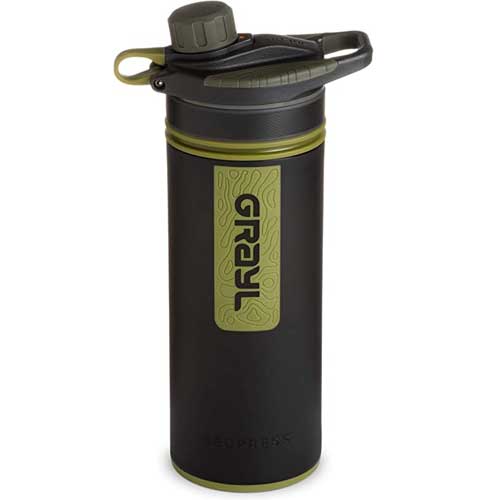
The Grayl Geopress travel water purifier is a straightforward, convenient, and feature-packed filtered water bottle . The integrated water bottle and filter make the Grayl Geopress one of the most popular water purifier filters for professional adventure travelers.
Using the Grayl Geopress
To use the GRAYL water filter you simply fill the bottle, press the inner filter down, and then drink the clean water directly. It’s fast, easy, and doesn’t involve waiting minutes or sucking from a narrow straw filtration system. The portable water purifier cleans out 99.99% of water-borne bacteria and viruses . The unit works very much like a french coffee press . The whole process only takes about 30 seconds before you can drink freely from the bottle.
Cons of the Grayl Geopress
There are limitations to the GRAYL Ultralight. The first is capacity. The filter takes up quite a bit of room in the bottle. Because of this, each fill-up can only hold about 16oz (>500 ml) of water. This means that you may have to fill up often , especially when it’s hot. It also means that if you’re in dry areas, you can’t carry a lot of water with you.
Another limitation of this unit is the cost of filter GRAYL Ultralight filter refills. Each filter is good for about 30.6 gallons (150 liters). But the rock-solid performance and tried and tested nature of the product make the GRAYL Ultralight is a solid, convenient, and all-around great choice.

SurviMate Filtered Water Bottle
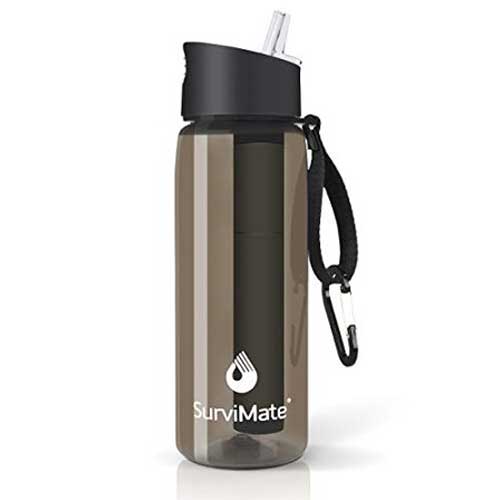
The SurviMate filtered water bottle is built to take on any situation. This travel water filter can handle anything from urban travel to the Ganges with a combination of four unique filters that help you adapt to any travel circumstance.
The SurviMate replaceable filters last an impressive 8 months . This means that you don’t have to have filter angst on your adventures. You can just enjoy some fresh, clean water wherever you are.
Using the Survimate Filtered Water Bottle
The features of the Survimate travel water bottle filter include a UF membrane filter, coconut shell activated carbon filter , antibacterial beads , and a medical-grade PP cotton filter . This combination gives this travel water filter the most comprehensive portable water filtration system on the list. The filter eliminates heavy metals, harmful chemicals, viruses, bacteria, and protozoa . And the replacement filters won’t break the bank either.
This is done using a straw-style filter . The raw water goes into the water bottle and you simply suck through the straw. As the water passes through, impurities are captured in the filtration syste m and you only receive fresh, clean water in your mouth.
Cons of the Survimate Water Filter
The Survimate filtration system is one of the best on the market. The filters are excellent and relatively inexpensive , especially compared to the Grayl system. However, where the Survimate hits a wall is its ability to deliver fresh, clean water quickly.
Because it uses a narrow, straw-style filtration system , drinking the water requires quite a bit of suction. And you won’t get a lot of water at a time. This means that drinking is quite a bit of work and less enjoyable than a system like the one from Grayl.
LifeStraw Go Water Filter Bottles
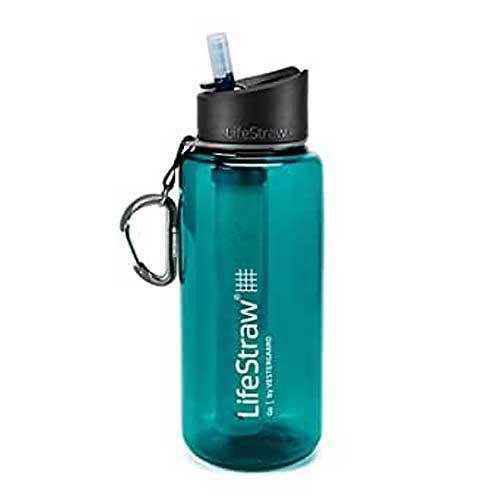
LifesStraw is one of the most established names in portable water filtration . They’ve adapted their unique water filter straw design into various formats. Many of these are focused on the travel water filter market . I’ve tested several Lifestraw models and found that the LifeStraw Go seems to offer the best combination of functionality and convenience for travel lovers.
Using the Lifestraw Go
Lifestraw Go is a 22-fluid-ounce water bottle with an integrated LifeStraw filter . The bottle can be used with or without the filter . This means that you don’t need a separate bottle for when you’re in an area with good, clean drinking water.
You can also remove the straw itself and use it to drink water directly from a water source without using the bottle at all. This is perfect for those looking to cut down weigh t and bulk in their packs such as on backcountry expeditions .
The filter itself uses activated carbon to filter out 99.9% of bacteria and organisms while also lowering the amount of chlorine, odor, and aftertaste .
One thing I love about the LifeStraw Go portable water filter is the lifespan of the filtration unit itself. One filter is good for a whopping 4,000 liters (1,056 gallons) or 3 months .
Cons of the Lifestraw Go
On paper, the Lifestraw Go should be hands-down the most economical travel water filter on the market. However, because the filter is two-stage, the LifeStraw carbon stage filter that removes chlorine and odor particles is only good for about 100 liters .
This isn’t a deal-breaker though. At only about $10 USD for a two-pack, this isn’t a major expense . And the design means that this part of the unit is incredibly small, so packing a few of them for a long trip isn’t too hard .
Brita Water Bottle with Filter
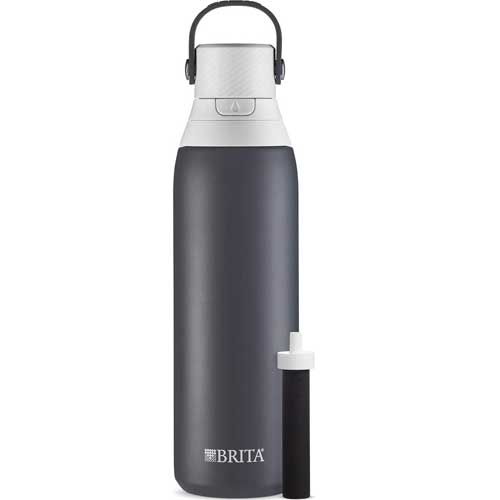
From the makers of your favorite fridge water filter comes the clean, convenient, and stylish Brita filtered water bottle . Brita has been making filters for decades, and they’ve found a new market in travel water bottles. These water bottles with filters are lightweight and easy to carry. The unit uses an activated carbon that not only removes pollutants and bacteria but also removes unwanted taste and odor .
Using the Brita Filtered Water Bottle
The Brita filter is tiny . This means that it doesn’t take up a lot of the water space within the bottle itself. That means more clean, delicious water between fill-ups. And it works very well.
The flip-open straw is easy to drink from. And it offers great flow compared to some of the other straw-style water filters . One portable Brita filter cleans as much water as about 300 disposable water bottles .
Cons of the Brita Water Bottle
I love the taste and convenience of water that comes out of the Brita. However, with its traditional straw style, I’d love for this unit to be able to be used directly without the bottle. Unfortunately, that is not the case. This means that the Brita is not ideal for ultralight hiking or camping .
What About Chemical and UV Travel Water Purifiers?
This guide focused primarily on travel water filters rather than typical water purifiers and tablets. The reason for this comes down to things like taste, sediment, and the ability to work without batteries .
Chemical water purifiers work to kill micro-organisms, bacteria, and things like Giardia in water . However, they are unable to eliminate things like sediment and bad taste . I tend to drink a lot of water when I travel, so I like that experience to be enjoyable.
Ultraviolet water purifiers act as a non-chemical alternative to chemical water purifiers . They tend to be safer, as they don’t rely on chemical interactions, and they are better for the environment . However, they require power, so this means extra batteries on long trips .
Honorable Mentions: Water Filters, UV Purifiers, and Chemical Purifiers
There are other products on the market than what I’ve mentioned earlier. Those are simply my selection for the best filtered water bottles. Depending on your situation, these units might also work well for you.
Best Travel Water Purifier For Urban Travelers
Steripen ultra.
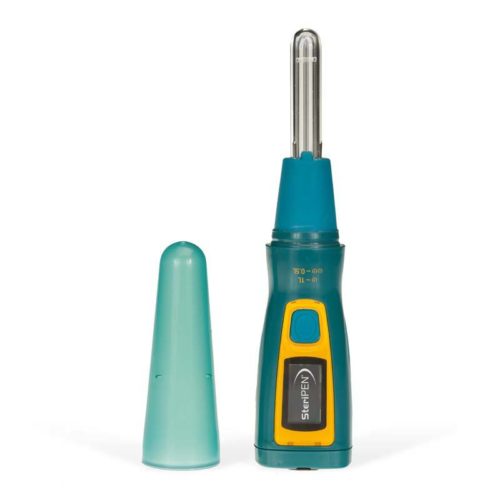
The Steripen Ultra uses a UV lamp to kill and disinfect drinking water . Unlike filtered water bottles and straws, you simply dip the lamp into a water bottle or cup, shake or stir for a couple of minutes, and drink . This unique travel water purifier runs on a battery charged via USB . But because of the UV format of this unique water purifier, there are limitations to its abilities.
Due to the UV lamp, the Steripen Ultra is not a travel water filter. Instead, it acts only to purify the water that the lamp is dipped into. Because of the lack of filter particulate matter like dirt and setiment can remain in the water .
The UV lamp of the Steripen Ultra kills nearly all bacteria and viruses within the water. Because of this, the purified water is unlikely to cause any illness. However, it may leave the water cloudy and/or dirty to look at .
The other limitation of the Steripen Ultra is that it relies on battery power . This means that, should you be on an extended remote trip with limited or no access to power, you could be left high and dry.
Some of the cheaper versions of the Steripen use disposable batteries, however, this means you have to remember to carry batteries with you when you travel.
If you are traveling in areas where water is fairly free of sediment, the Steripen Ultra is a nice, easy travel water filter to carry with you . It also doesn’t have a limit to the quantity of water it can purify beyond the battery life.
Best Travel Water Filter For Backcountry Camping And Hiking
Survivor filter pro.
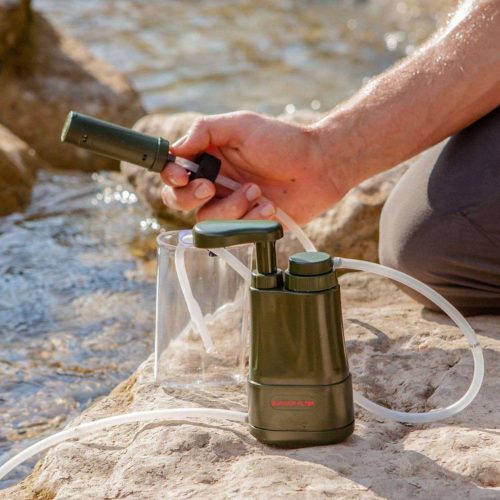
If you’re looking at spending some time on long hiking or camping excursions , having a camping water filter that can be a workhorse without being heavy or bulky is a blessing.
This is where the Survivor Filter Pro comes into play. This small and lightweight (just 8oz or 266 grams) has a three-stage filter that can handle more use than any other water filter on this list . The carbon filter can filter 440 gallons (2,000 liters). The other two filters in the chain can handle a whopping 22,000 (100,000 liters) .
The Survivor Filter Pro isn’t super fast . It takes about two minutes to filter 34 oz (1 liter) of water. However, because the Survivor Filter Pro is meant as a portable water filter for those doing longer excursions , it’s ideal for that environment.
The unit is priced well and the hand pump makes it very easy-to-use . The biggest limitation of this portable water filter is the tube input. This can get clogged when filtering water from especially dirty sources and can be awkward to use from a tap.
What You Need To Know Before Choosing A Filtered Water Bottle for Travel
How water filters work.
Portable filtration systems are designed to clean water on the go . Whether this is by filtering directly as you drink or filtering small amounts of water at a time for you to easily drink afterward. Water filtration systems use a series of filtration and sterilization techniques to accomplish this. These setups can change from one manufacturer to the other , so don’t assume that all portable water filters are the same. Here are some of the basics about what makes up a travel water filter.
Active Carbon Filter
Active carbon filters are one of the most common and effective methods of removing impurities from water sources . Activated carbon, also known as activated charcoal uses porous carbon to trap impurities . Because of this, it has a limited amount of filtration capacity .
Activated carbon filters generally need to be changed more frequently than other filter types. Occasionally you may notice black flecks floating around in filtered water. These are actually flecks of carbon and they are completely harmless .
Activated charcoal has been processed to become incredibly porous. These tiny pores act to f ilter particulate impurities from water sources , allowing clean, pure water to course through.
Ultra Violet Light
UV light filters are relatively few and far between for portable water filtration systems. This is usually because it takes time to purify water using Ultra Violet light and because the system relies on a power source. UV light actively kills bacteria, protozoa, and viruses via germicidal radiation that is harmless to humans.
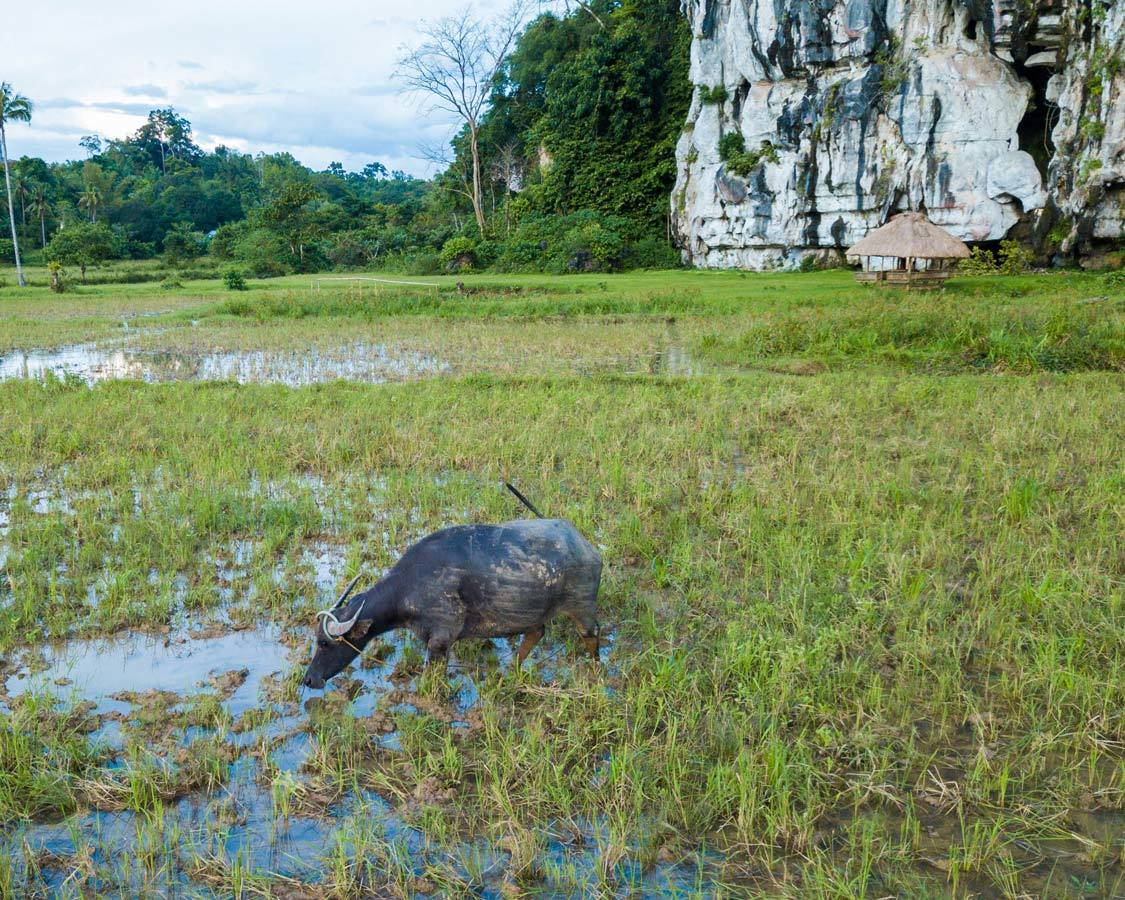
Benefits and Disadvantages of Travel Water Filtration Systems
If you’re interested in purchasing a water filter for travel there are both advantages and disadvantages to using them. I’d love to say that everything is rosy and you’re life will instantly be perfect after choosing a travel water purifier. But there are some things you’ll need to get used to when using one.
Advantages of a Travel Water Filter
- Protecting The Environment – This is by far the most important reason for choosing a water bottle filter for travel. By using one you are potentially eliminating thousands of plastic water bottles that will otherwise end up wasting energy in recycling facilities, or worse, ending up in landfills, or in the oceans.
- Economical Value – The other advantage of not having to buy disposable water bottles is money. Replacement filters are far more affordable than disposable water bottles . investing your money in a water filter for travel means investing money in those trying to save the world rather than those causing the problems.
- Practicality – Having a portable water filter on hand means that you have access to clean water anywhere you go . If there isn’t a store nearby, just look for the nearest puddle, stream, or lake. No more stocking up on bottles; Just filter the water and drink.
- Convenience – If you are in remote areas, a water filter saves the time it takes to boil water . Getting clean water doesn’t mean starting a fire, getting water, waiting for it to boil, and then waiting for it to cool down enough for you to actually consume it. Water filters also eliminate the need for disinfection tablets .
Disadvantages of a Filtered Water Bottle
- Weight – Even the best-filtered water bottle is heavier than it’s a non-filter alternative. I think the benefits far outweigh the weight issue, especially when you consider the amount of gear you need to carry to boil water.
- Speed – Many travel water filters that use a straw system take time to drink consume or filter. It’s not as fast as just pouring water from a tap and shooting it down the hatch. LifeStraw products, for example, require a bit of work to suck through.
- Size – A filtered water bottle is generally designed to filter water in small amounts at a time . Because of this, it’s rare for one to hold more than about 24 oz of water.
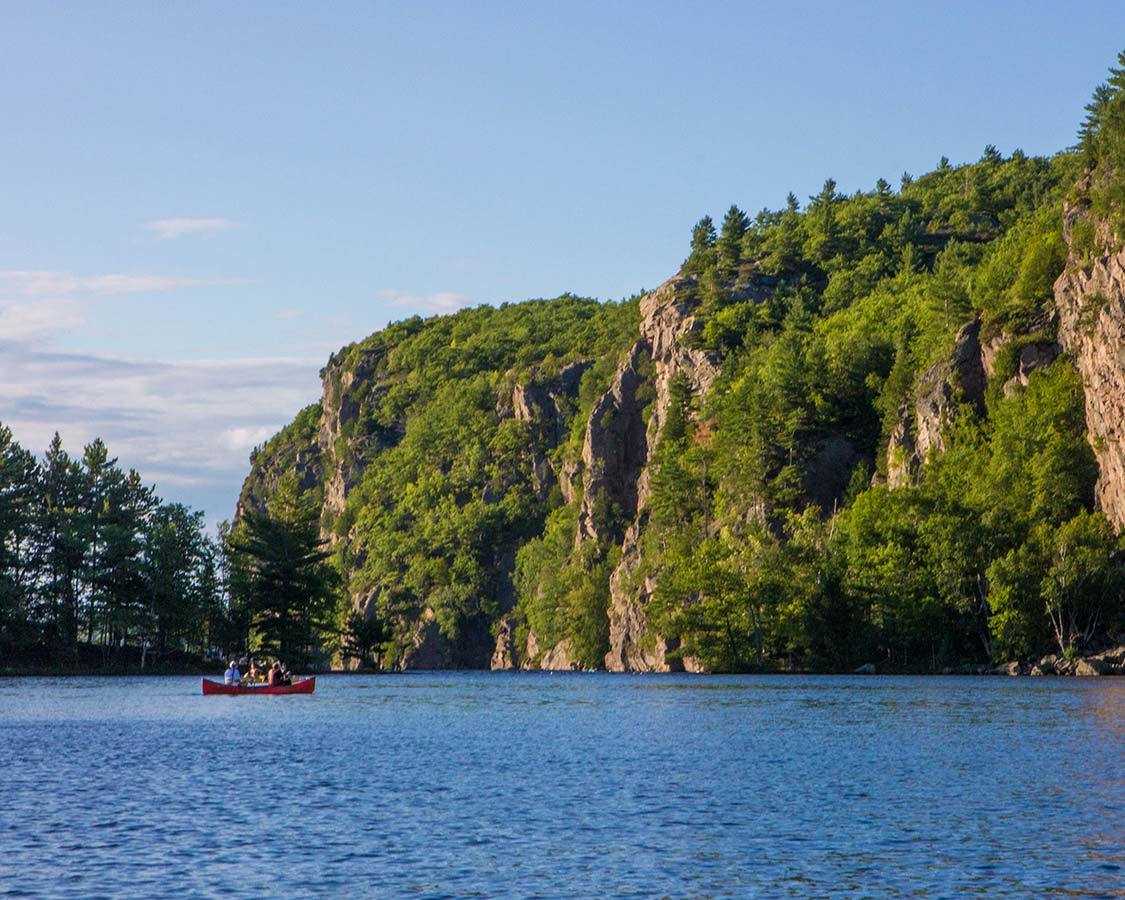
Which Travel Water Filter Should You Buy?
When all is said and done, my personal choice for the best travel water filter is the GRAYL Ultraligh t. I rarely travel to destinations where I’m more than a short distance from a water source. Because of this, the small capacity of the GRAYL model is outweighed by its portability and durability . I’m not a big fan of sediment in my water, so I like that this filtered water bottle cleans out particulates .
The integrated bottle and filter also make carrying and using it a cinch. And the push filter method is far more practical for my uses than having to take hard sucks from a straw-based water filter.
Do you carry a travel water filter with you? Let me know your favorite model in the comments below, and tell me why you love it. You can also swing by our Facebook page and share a photo of your travels. We would love to hear from you.
You May Also Like To Read:
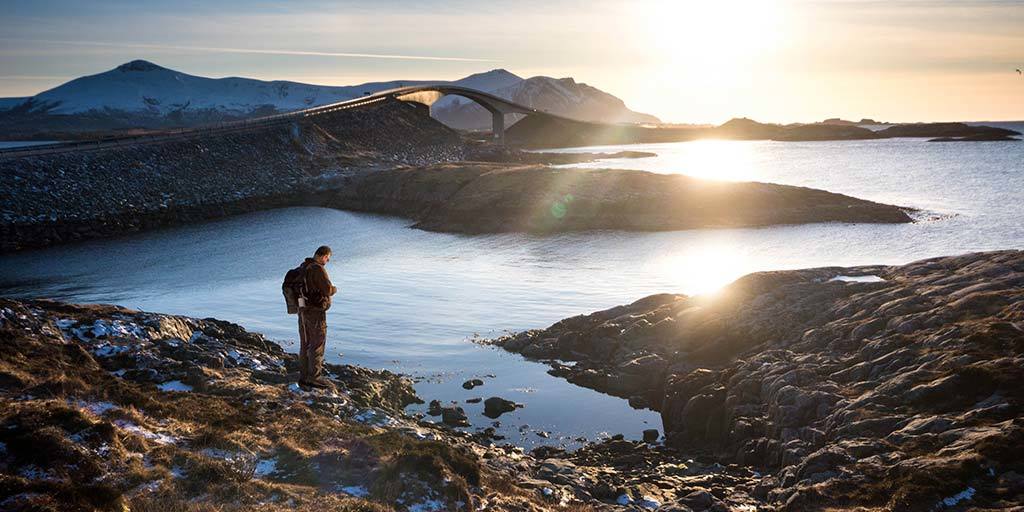
Pin This Post For Later:
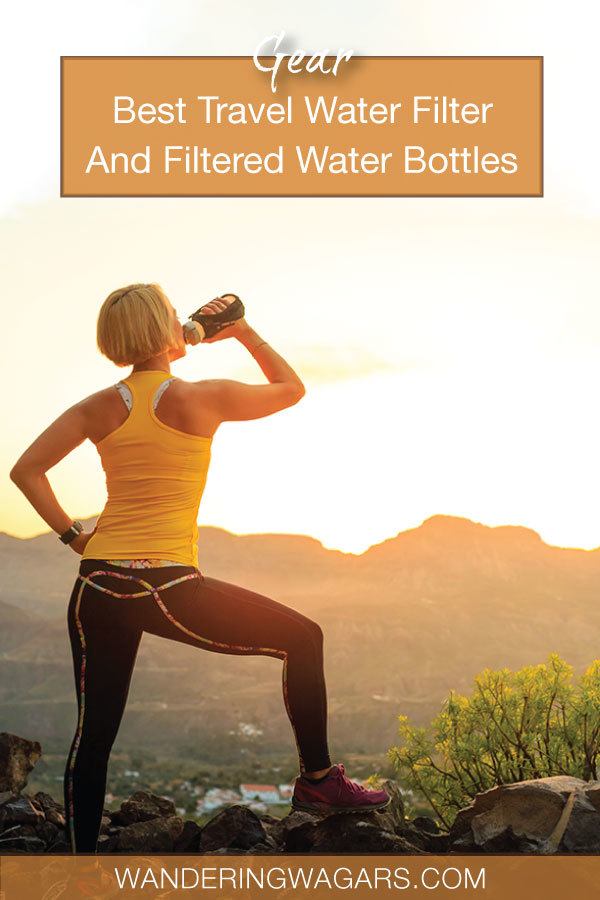
Glen Taylor
Saturday 17th of April 2021
No. 3 is fantastic! All is working perfectly after I followed the directions to the letter! Turn the filter upside down when discharging it for the first time so that water enters from the bottom. I designed it from the ground up at first and am baffled as to why the water does not enter the actual filter. Fill the bottle with water, adjust the filter, and set aside for 10 minutes, according to the directions. I believe this is the aspect that some people are missing, which is why draining the water in the first few sips is so difficult. I let it sit for a while so that the water seeps through the filter properly, and the first few sips are really relaxing!
Kevin Wagar
Sunday 18th of April 2021
Thanks for the great tips Glen! Sometimes using these filtered water bottles involves a bit of a learning curve. I appreciate that feedback.
Privacy Overview

7 Best Portable Water Filters & Travel Purifiers: 7 Factors Compared
If you’re traveling to rural areas abroad, you need to decide how you’ll filter your water supply. In this huge guide, you’ll learn how to choose the best portable water filter and purifier for your travels. We include factors to consider, plus common water risks, and answer commonly asked questions about water.
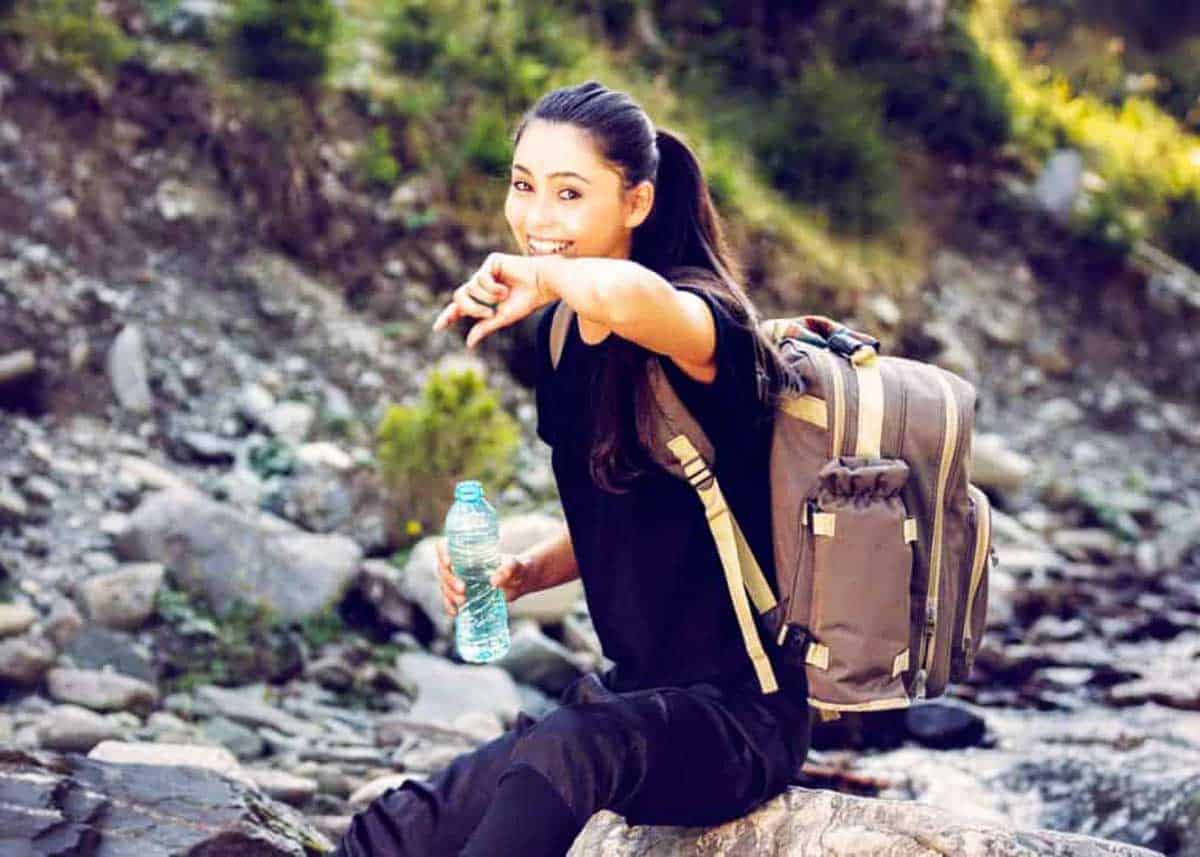
How to Choose the Best Portable Water Filter / Purifier
If you’re used to having clean, safe water at home, you might not think about the need to filter water when you travel. Uganda does not have treated water available everywhere, like you may be accustomed to in your home country.
Yes, you can buy bottled water in Uganda. But you can never be 100% sure of where bottled water comes from, and we all know how plastic is taking a negative toll on the environment. And who wants to carry that extra weight all day long?
Taking one or more portable water filters with you on your trip to Uganda can provide the perfect solution.
Not only are most portable water filters easy to use and light enough to carry in your backpack, but all of them are designed to clean water of most bacteria and parasites while many others can remove viruses, metals, and other toxins.
Your water filter is an important thing to include as you pack for your African safari .
When looking to purchase portable water filters, you will discover that they come in a wide variety, so how do you know which one is right for you?
This guide aims to help you determine just that by suggesting some of the best water filters available on the market as well as informing you about things you need to know about water filtration and purification.
What’s in this guide? You’ll learn about types of water filters and purifiers, including methods of purification. Plus, common risks of drinking untreated water. And the difference between water filters vs. water purifiers.
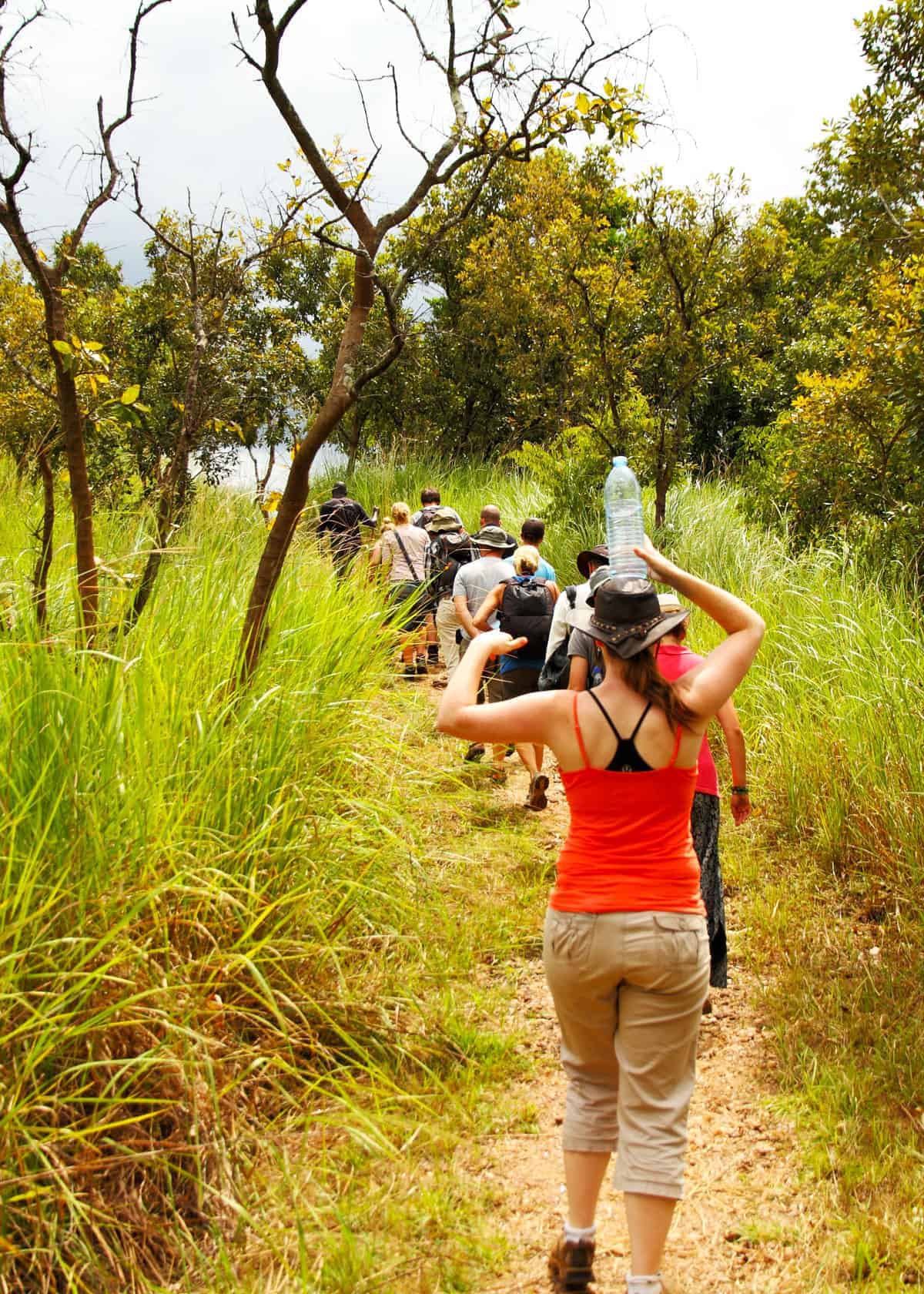
3 Top Picks: Best Portable Water Filters
1. best for long-lasting life: sawyer all-in-one.

Find this on Amazon or REI
For convenience, this water filter features an adapter that can transfer your cleaned water to a drinking bottle or other receptacle.
2. Best for Family: LifeStraw Family 1.0

Get yours on Lifestraw or Amazon
This is ideal for families or large traveling groups. On top of that, this unit cleans your water of bacteria, parasites, protozoa , and viruses so that you can have peace of mind knowing you are drinking healthy water.
3. Best for Efficiency: SteriPEN Ultra

Get yours on REI or Amazon
The SteriPEN is small, lightweight, simple to use, and gets the job done with little effort.
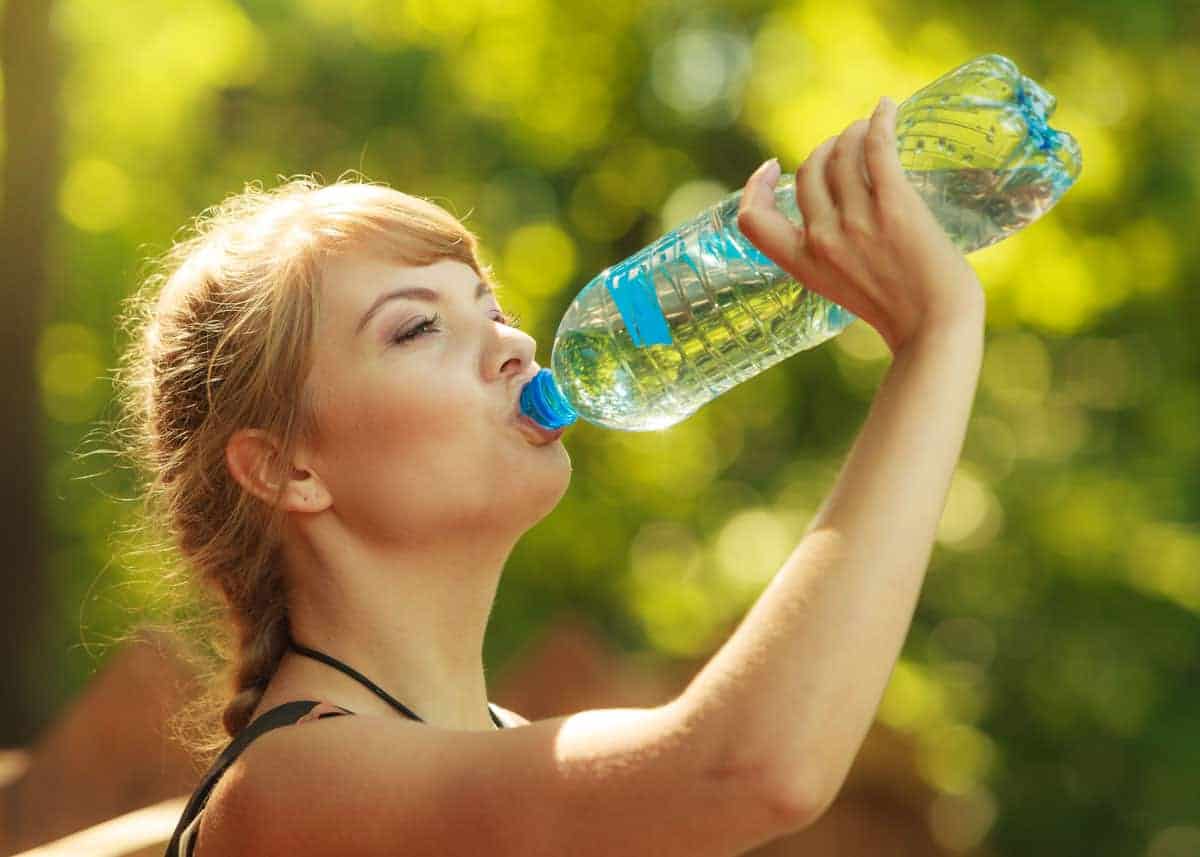
Buyers Guide: Portable Water Filters and Purifiers
7 types of portable water filters and purifiers.
Advanced technology has produced a wide variety of water filters and purifiers that perform different functions, but the following are the most common:
- Straw filters are among the lightest and easiest types of portable filtration you will find on the market. These filters may look like large, fancy straws, but there is a lot of high-tech stuff going on inside them. Straw filters feature cartridges made from layers of tightly woven fiber membranes so that your water can pass through, but bacteria, parasites, and other contaminants get trapped. How they work is as simple as drinking through a straw, except you may need to give these straw filters a little extra suction.
- Pump filters feature a pump component that requires you to force water through by hand, but many of these types are designed to work quickly so that you don’t wear out your arm. Pump filters are usually larger than other filters but still compact enough to fit in your backpack. These pump types use various filtration techniques such as fiber filters, ceramic filters, or a combination of these with an activated carbon filter.
- Bottle filters are basically water bottles with a straw filter cartridge inside them that clean up the water as you drink. You use the bottle to take in the water, and then the straw filter does its job of filtering out contaminants so that only healthy water reaches the mouthpiece. Most bottle filters use fiber filters, but some may use solid block activated carbon filters which can effectively reduce viruses, arsenic, heavy metals, and other toxins. Many bottle filters come with a removable water filter, so if you know your water is from a pure source you can remove the filter and use it as a normal water bottle, then attach the filter again when you need it.
- Gravity water filters usually consist of two containers where gravity pulls the water from one – through a filter and into the second to clean your water. Often, these containers are hanging bags with attachable hoses. Gravity filters often use a combination of activated carbon and ceramic filters or inline filters to effectively remove bacteria, viruses, parasites, and some pesticides and herbicides . Gravity water filters are usually larger than other filtration systems and feature multiple components.
- UV filters feature glass elements of ultraviolet light rays that kill bacteria when the water passes through the system. UV filters are used less because they rely on batteries, but they do have some advantages that include working quickly and improving the taste and smell of the water.
- Ceramic filters kind of work like a coffee maker. You pour water in the top which then goes through the filter and into a receptacle that has an attached spigot. These filters are heavier than other filters, but they are porous with extremely small holes (0.5 – 1-micron) that trap bacteria, parasites and other contaminants like asbestos. Some of these filters are treated with silver to prevent mold and algae growth. Many ceramic filters are used in conjunction with activated carbon filters to increase the effectiveness of eliminating many volatile organic compounds such as solvents, gasoline, and cleaning agents.
- Inline filters are the most versatile because they can be used by themselves as a straw, inside a regular water bottle, or attached to an output hose of a bucket or hydration bladder. Inline filters are also small and lightweight and have a long lifespan.
5 Methods of Purification
- Reverse Osmosis : Reverse osmosis forces water through a membrane of pores that are so small and fine that most contaminants cannot pass through. After the filtering process, the purified water is collected and safe to drink.
- Boiling : Boiling water is one of the safest, easiest, and cheapest ways to purify water. Bringing your water to a boil and allowing it to boil between 1 and 3 minutes kills harmful parasites and bacteria.
- Filtration : One of the most effective and economical methods of water purification, filtration can involve both physical and chemical processes to rid your water of dangerous contaminants. These processes include using materials that trap bacteria and active carbon that absorbs harmful compounds such as pesticides.
- Distillation : Distillation is a purification method in which clean water is collected by vaporizing it from boiling water. While this method is a slow process and requires a heat source, it is effective in removing bacteria and parasites as well as heavy metals such as mercury, arsenic and lead.
- Chlorination : This method has been used for many years in developed countries to treat water for the use of home consumption in cities because chlorine is known to be effective in killing germs and other disease-causing agents found in groundwater. However, you can also buy chlorine tablets to use for water treatment when traveling. People with some medical conditions may not be able to use chlorine tablets, so make sure you talk to your doctor beforehand.
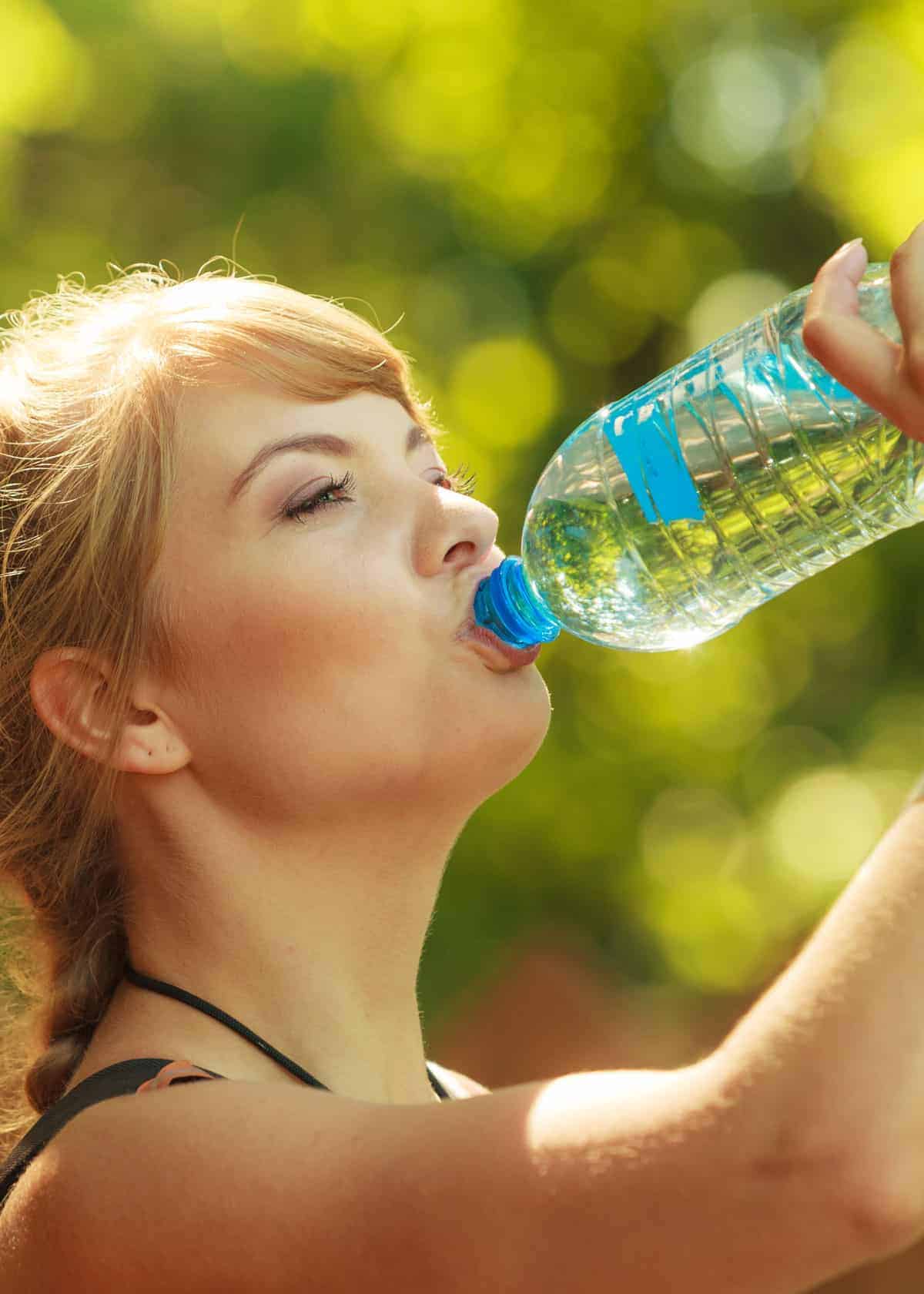
Check out our Uganda Food Guide (16 Must-Try Dishes for Your Visit)
7 Things to Consider When Buying a Portable Water Filter
- Function : What will you need your water filter to do? Will you be hiking in high-altitude mountains where the biggest water threats are bacteria and parasites? Or, will you be in an area that is largely concentrated with people and need to reduce your risk of viruses? Some water filters are not designed to kill viruses, so be sure you purchase the type of model you need.
- Weight : You probably don’t want to carry around a heavy portable water filter when you travel. Most filters are designed to be carried in your backpack, but their weight varies according to their structure, filtering technology, and components. Be sure to note the weight of each filter that interests you.
- Filtration Speed : How quickly will you need your water filtered? Each portable water filter model works at a specific rate. Some will filter a few ounces per minute while other models may produce 16 ounces per minute. Think of what your needs are to determine how much of a filtration speed you require.
- Filter Capacity : How often will you be using your portable water filter? Some models are only good for a few days or weeks while others can keep on functioning well for a longer period. Take a look at each filter and note its filter capacity. Some models can filter up to a couple of hundred gallons of water while others are equipped to clean up to 100,000 gallons of dirty water.
- Ease of Use : As you can see from this guide, not all portable water filters are created equal. Some are simple devices that get the job done quickly with little effort. Others are complex systems with components that need to be assembled and cleaned after each usage. Note whether a model requires batteries or a set-up with instructions. Consider which of these works best for your personal situation.
- Durability : Will this portable water filter hold up to elements? How likely is it to be damaged if you drop it? The durability of a water filter is determined by how it is designed and from the materials it is constructed.
- Cost : Just like all other products, portable water filters come in every size, shape, and style as well as price. Consider your budget before purchasing one. An expensive price tag doesn’t always guarantee a quality product. Some models can provide you with exactly what you need at an affordable price.
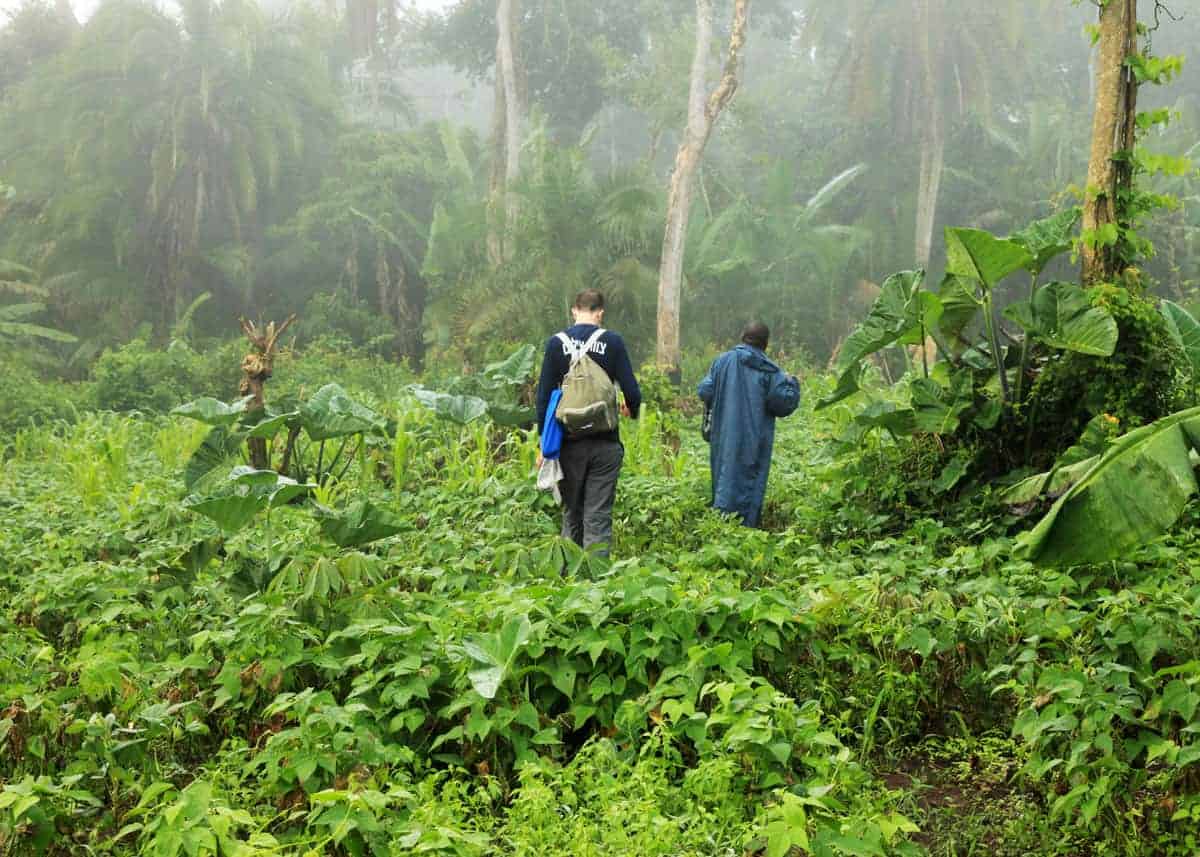
How to choose the best camera for safari
5 Common Risks for Drinking Untreated Water
Do you really need a portable water filter? You may wonder this if you are traveling from Canada or the USA where there is not that big of a problem with contaminated water.
It is important for anyone traveling to any foreign country to be aware of the possibility of sickness, disease or even death when drinking untreated water. There are always higher risks of viruses in larger populations and exposure to chemical run-off in industrialized areas.
Here are some of the most common risks you want to avoid:
- Bacteria : Bacteria from animal and human fecal waste that includes cholera, E. coli, Shigella, Salmonella, and coliform can cause serious illnesses. If you do become sick, you could die without treatment.
- Protozoa : These parasites can cause giardiasis, cyclosporiasis (known as traveler’s disease) and cryptosporidium, which are intestinal infections involving pain, severe diarrhea, nausea, vomiting, and a weakened immune system.
- Viruses : Viruses common in untreated water include hepatitis, meningitis, norovirus, polio, rotavirus, SARS, and hand-foot-and-mouth disease.
- Chemicals and heavy metals such as oil, lead, mercury, pesticides, paint, industrial run-off, and cleaning agents can also be harmful.
- Algae : There are some forms of algae blooms that can be harmful to humans.
Water Filters vs. Water Purifiers: What’s the difference?
While these seem to be very similar, there is one primary difference: virus elimination.
- Water filters are designed to filter water of bacteria, parasites, and protozoa, but not viruses since they are much smaller and can slip through the system. Some water filters can also filter out metals such as lead, iron, mercury, and copper.
- Water purifiers , on the other hand, can eliminate viruses and all the above impurities from water. Water purifiers are required by the Environmental Protection Agency to rid water 99.9% of all viruses.
Boiling water , chemical treatments, and UV light are traditional methods of purification that are able to kill viruses but not physically remove them.
That is where pump water purifiers come in handy. Not only does a pump purifier remove dead viruses from water, but sediment as well.
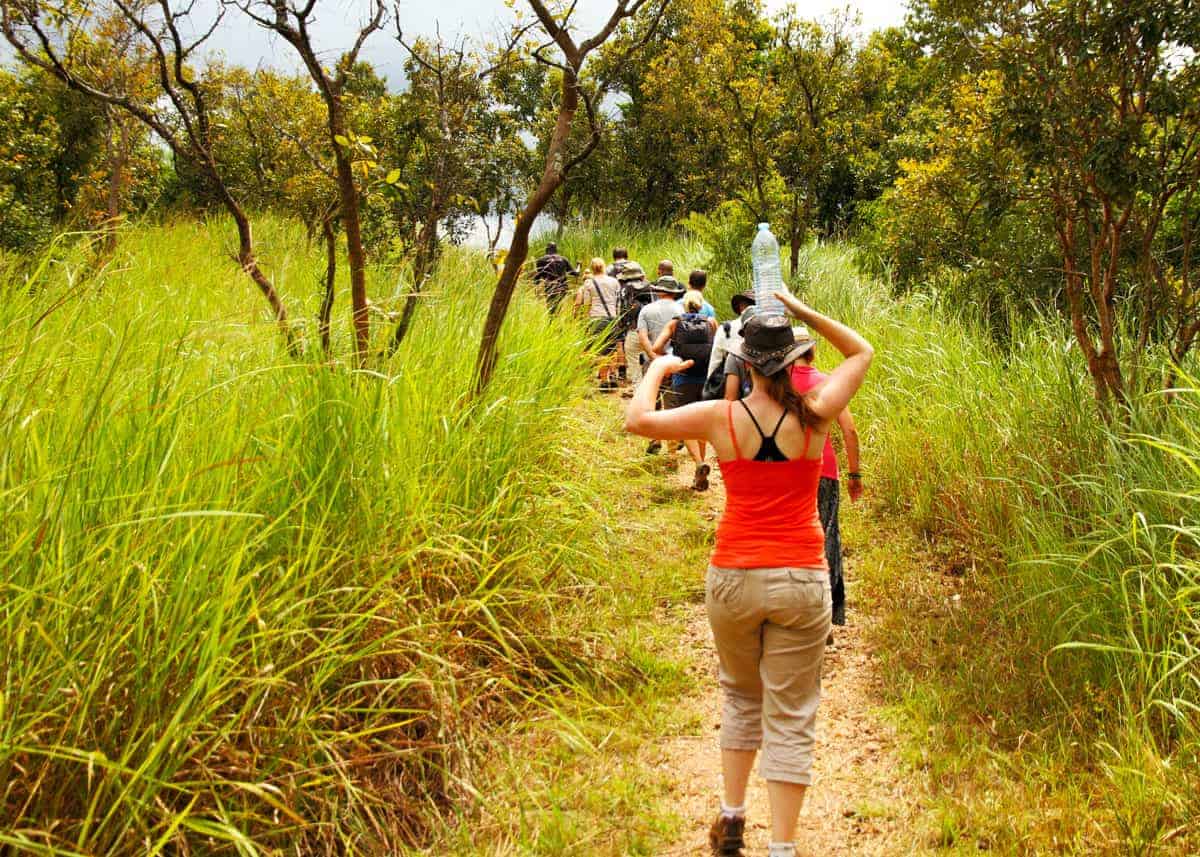
More reading: Is Uganda Safe? Guide to Water, Crime, Disease, Sun
4 More Portable Water Filters and Purifiers
Take a look at these highly-rated portable water filters to see what appeals to your needs and preferences. It is recommended that you use more than one type of water filter because no filter is perfect.
Having a mix of different types of water filters can provide you with different functions and a backup if one becomes damaged.
1. Katadyn Vario Water Filter

Weighing about 15 ounces and small enough to fit in your backpack, this water filter features a 36-inch outlet and inlet hose and plastic clip that attaches to your water bottle to prevent it from slipping while it fills with water.
Check current price on Amazon or Bass Pro Shops
The pump on this water filter works quickly, so you won’t have to throw your arm out while pumping water.
Plus, it can filter up to two quarts per minute. You will also appreciate how the charcoal in this Katadyn Vario model filters out most undesirable smells and tastes so that your water is pleasant to drink.
2. LifeStraw LSPHF017 Water Filter

Check current price on Amazon
Best of all, this filter is designed to remove up to 99.9% of the protozoa and bacteria that ordinarily live in water.
The Lifestraw needs suction to get it going good for each use, but it can provide a flow rate of 57 oz. (1.7 liters) per minute.
3. LifeStraw Go Water Filter Bottle
The water filter removes unpleasant smells and tastes through a two-stage carbon cartridge.
There is also a fiber membrane that filters out 99.99% of bacteria and protozoa that you find most common in water.
The filter is removable, so if you have a source of pure water you can remove it and use it as a normal water bottle.
The straw filter is designed to clean up to 264 gallons of water before it needs replacing. You will know when the filter reaches its limit because it will stop collecting water.
4. Sawyer Products Mini Water Filtration System

This system comes with a versatile adapter that you can attach to a bottle, faucet, or water pouch whenever you want to improve the quality of your drinking water. You will appreciate the durability of the filter because it can clean up to 100,000 gallons of water before requiring a replacement.
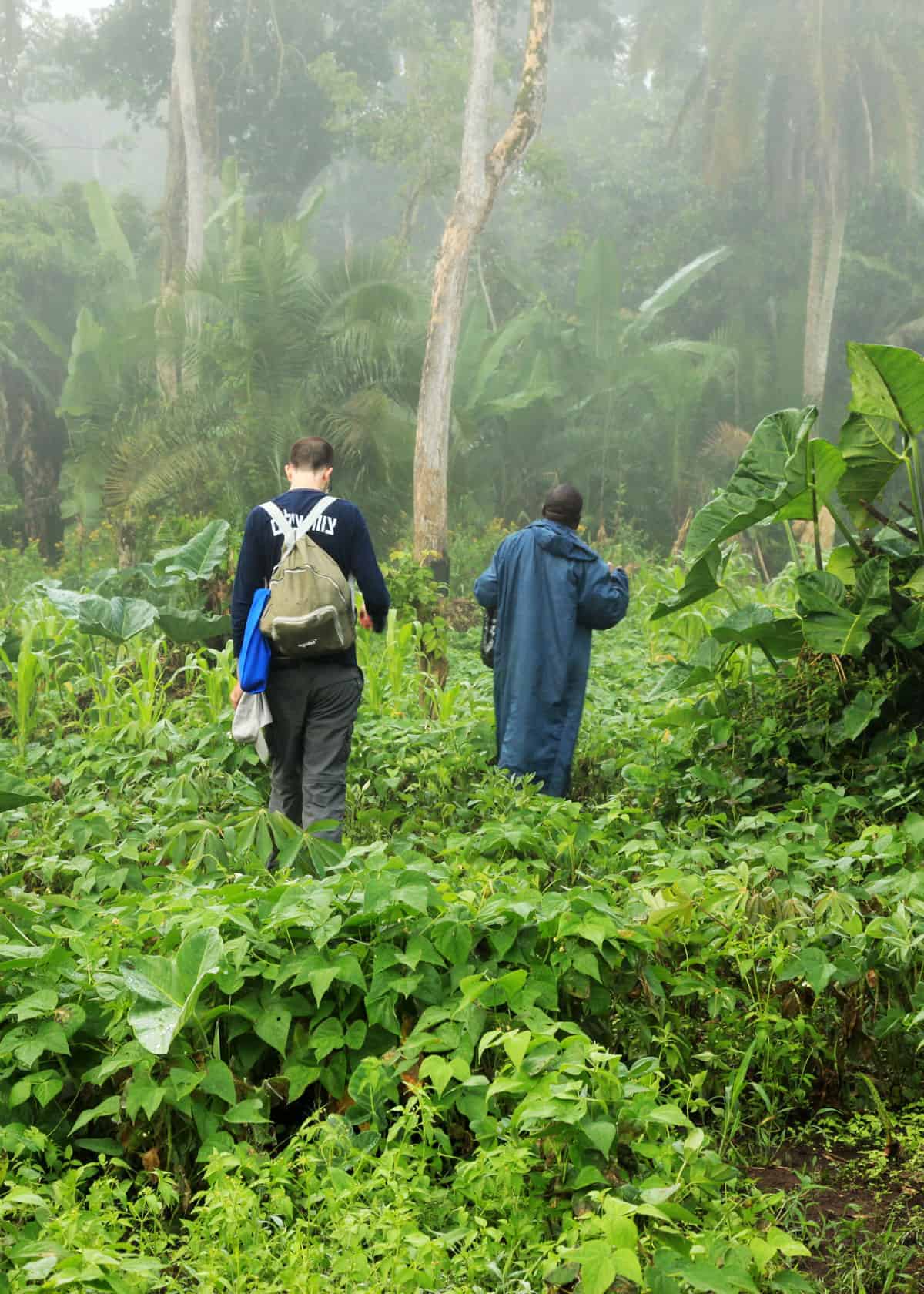
FAQs About Water Purification
1. what is potable water.
Potable water is a term used to mean water that is safe for humans to drink without presenting any health risks throughout lifetime consumption.
Potable water doesn’t mean it must taste good. It just needs to be safe for your health.
2. What do water filters remove from the water?
Depending on their design, water filters can remove bacteria and parasites that cause diseases such as E. coli, cholera, dysentery, traveler’s diarrhea, giardiasis, typhoid fever, and hepatitis.
Some water filters can also eliminate harmful chemicals and metals such as iron, lead, pesticides, and chloramines.
3. How reliable are portable water filters?
Portable water filters can be considered reliable if they meet the certification standards of NSF International , a respected organization that protects human health globally by setting guidelines for food, water, and environmental products.
A water filter that meets NSF standards should have the organization’s logo on its package.
You can expect your water filter to be reliable if you change the filter cartridge regularly and clean it according to the manufacturer’s instructions.
4. How do you care for your water filter in freezing temperatures?
Unfortunately, freezing temperatures can cause water filters to crack , which then allows toxins to slip into your drinking water. Frigid weather can also cause clogging and batteries to stop working on some filters.
The best way to protect your water filter during freezing temperatures is to keep it warm with your body heat. This means keeping it close to your body. Put the water filter in a ziplock bag and place it in your sleeping bag near you.
If temperatures are below freezing during the day and your water filter is small enough, you can place it in your pocket or tie it on a cord to hang around your neck or waist. Another option is to place a hand warmer packet on your water filter.
5. How do you know when to replace your water filter?
One of the surest ways to know when your portable water filter needs replacing is when the flow rate decreases significantly .
If you are trying to drink clean water and little is coming into your mouth, this means the filter is probably clogged with contaminants and needs replacing.
You can also note the filter capacity for how many gallons your water filter is rated and keep track of how much water you are cleaning. Another recommendation is to throw it out when it gets to within 10% of its expected lifespan.
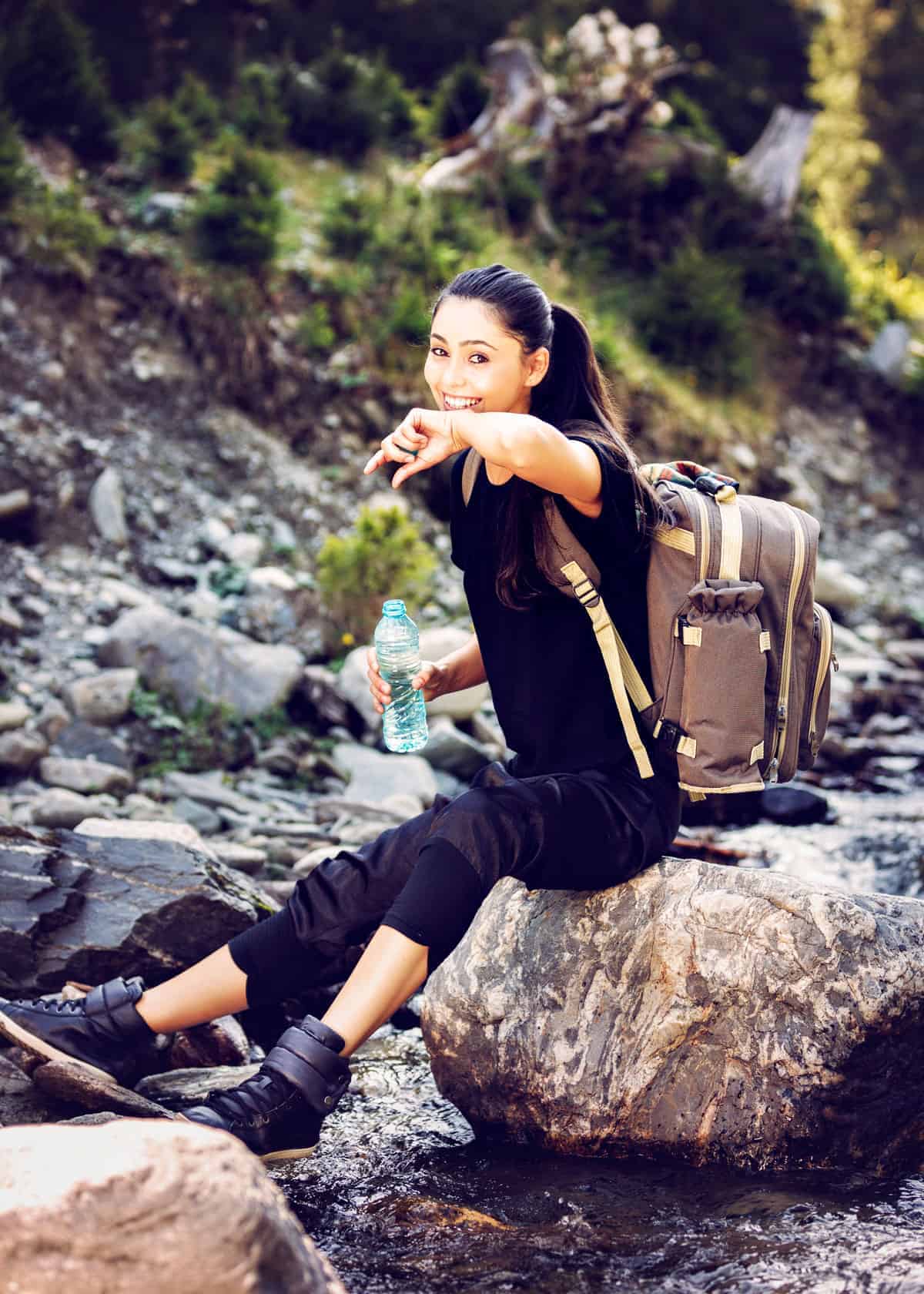
We recommend picking up a travel insurance policy before traveling to Africa. It can cover surprise visits to a medical clinic and protect your belongings should they get lost or damaged.
Once you know what to look for, buying a water filter is not that difficult. We hope this guide has provided you with the information you need to make the best choice for you.
We want your Uganda experience to be a happy one without worrying about sickness due to unhealthy water. Traveling with a good water filter will give you peace of mind.
Travelers often boil water to make it safe for drinking. Does salt make water boil faster?
What type of purification system are you planning on using? Have a tip or a question? Join me in the comments below!
Hi, I'm Bryan Haines . And I'm a co-founder of Storyteller.Travel . I'm a traveler and photographer.
I also blog about photography on Storyteller Tech .
Similar Posts

What’s the Largest Lake in Africa? 9 Largest Lakes Compared
Africa is home to many huge lakes. What’s the largest lake in Africa? And where are the best places to visit? In this post, you’ll learn about the 9 largest lakes in Africa. Plus lots of photos and details. Africa has so much to offer a western traveler including world-renowned lakes. Second only to the…

Uganda Animals: 27 Amazing Safari Animals of Uganda
Looking for Uganda animals? In this post, you’ll learn about 27 amazing animals that you can see while trekking and on safari in Uganda. They include mammals, birds, reptiles, and fish. 27 African Safari Animals in Uganda Uganda is a landlocked country in eastern Africa. Along with Tanzania and Kenya, it is home to Lake…

10 Tips for Shopping at an Open Market in Ecuador (11 Spanish Phrases)
The attraction for many gringos, of traveling and living in a foreign country, is the thrill of traditional open markets. When we first arrived here, we heard everything from: “everything is so cheap” and “its such nice / fresh / beautiful / unique products here” to “don’t go there – you’ll get robbed or mugged”…

How to Choose a Uganda Gorilla Trek (Best Time to Go, Tour Companies, Price…)
Planning your Uganda gorilla trek? Perfect! In this post, you’ll learn what to expect, the best time to go, prices, and how to choose. I also include a list of the top 3 trekking tour companies. What should you bring on your gorilla trek? Don’t forget anything with our Complete African Safari Packing List How…
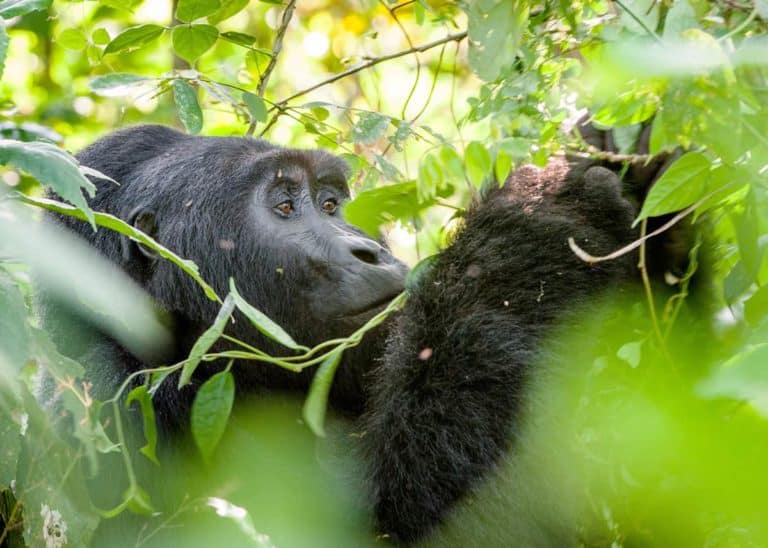
19 Amazing Facts About Uganda Mountain Gorillas (Silverback, Baby, Habitat…)
In this post, you’ll learn all about Uganda mountain gorillas, including their diet, habitat, silverbacks and more. You’ll also learn specific facts about male, female and baby gorillas. And you’ll see lots of amazing pictures and video. 19 Amazing Facts About Uganda Mountain Gorillas Because Uganda is one of only three places where you can…
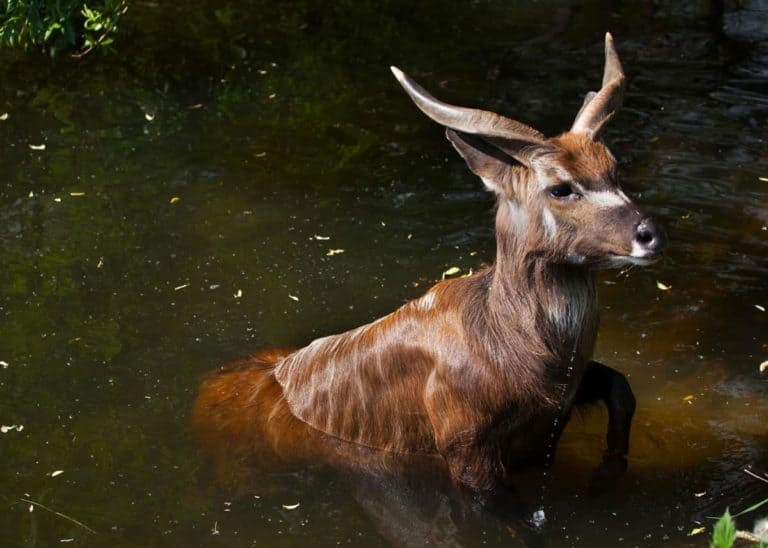
20 Facts About Sitatunga: Africa’s Swamp-Dwelling Antelope
Want to learn about Africa’s sitatunga antelope? In this post, you’ll learn 20 facts about the sitatunga. 20 Facts About Africa’s Sitatunga Antelope The sitatunga is one of the most unusual animals found in Uganda. They are a species of small antelopes that are located throughout much of southern and central Africa. Sitatunga are known…
Leave a Reply Cancel reply
Your email address will not be published. Required fields are marked *
-lw-scaled.png.png)
- Inspiration
- What To Do With All Your Stuff When You Travel: The Ultimate Guide To Pre-Trip Decluttering
- The Best Travel Insurance Providers For Backpackers, Nomads & Adventurers in 2020
- The Ultimate Guide To Housesitting For Beginners: Get Free Accommodation Anywhere In The World
- The 15 Best Carry-On Backpacks For Travel in 2021 (Complete Buyer's Guide)
- The 11 Best Anti-Theft Backpacks For Travel in 2020 (Complete Buyer's Guide)
13 Essential Tips For Preventing Room Theft While Travelling
- 84 Essential Travel Safety Tips You Have To Know For 2021
- 50 Powerful Travel Photography Tips To Dramatically Improve Your images
- The 18 Best Travel Cameras in 2021: Complete Buyer's Guide
- 19 Underexploited Ways To Deal With A Slow Wifi Connection When Travelling
- The 7 Best Travel Laptops in 2021 (Complete Buyer's Guide))
- How To Back Up Your Photos And Videos When Travelling - A Definitive Guide
- Travels in Sri Lanka
- Travels in Burma
- The Best Travel Jobs
- 27 Packing Hacks & Tips For Minimalist Travel
The 7 Best Portable Water Purifiers For Travel (Complete Buyer's Guide)
.png)
You may also like
.jpg)
8 Smart Ways To Save Money On Water When Travelling
JOIN OUR LIST
Get free exclusive travel tips delivered straight to your inbox.

The Best Backpacking Water Filters of 2024, Tested and Reviewed
We rounded up eight of the most portable and functional backpacking water filters so you can find the perfect fit for your next trip.
We may earn revenue from the products available on this page and participate in affiliate programs. Learn more ›
When hiking in the backcountry, you need a good backpacking water filter to ensure access to safe, clean water. A functional water filter (and often a water purifier , too) can’t be missed on a packing list. However, it takes time and research to pick the right one for you, with such a variety of styles and brands available.
The main difference between a water purifier and a water filter is that a filter is designed to remove waterborne bacteria and protozoa, while a purifier removes all microbes including viruses. While both can be beneficial, water purifiers tend to be more of a concern when traveling abroad versus in the North American backcountry. For this review, we focused only on the best backpacking water filters that have an optimized lifespan, are easy to use, and are compact enough to take with you on the trail.
- Best Overall: Sawyer Squeeze
- Best Lightweight: Katadyn BeFree
- Best Budget: Sawyer Squeeze Mini
- Best Gravity Filter System: CNOC Outdoors Vecto and Versa Flow
- Best Pump Filter: MSR Guardian
- Best Bottle Filter: Grayl GeoPress Bottle
- Best Squeeze Filter: Platypus Quickdraw
- Best Straw Filter: Lifestraw
How We Picked the Best Backpacking Water Filters
The best backpacking water filters must be portable, functional, and suited to your backcountry needs. The region, time of year, and length of trip can all play a role in the type of filter you may choose. In putting together our top picks, we took all of that and more into account. Although I personally have my favorite and go-to water filtration system, all the water filters went through the same process to ensure we only included the highest-performing options on the market. Once chosen, they were assigned an appropriate category.
Primary considerations in choosing the best backpacking water filter:
- Portability: What is the size and weight of the entire filtering system? Is it small and compact enough to bring with backpacking? Are there a lot of parts that are easy to lose?
- Ease of Filtration: How easy is it to filter the water through the system? How long does it take to filter the water?
- Water Quality: What exactly does the water filter out? How is the water quality once filtered?
- Maintenance: Is it easy to keep the filter clean? How long does the filter last? How many liters of water can it filter in its lifetime?
- Durability: What is the lifespan of all filter components? Is there a return or repair policy if components break or malfunction? What is the warranty on the products?
Whenever possible, we test products for review. When products are not available for testing during the writing of the review, we rely on firsthand experience from other industry experts along with additional knowledge about industry practices, manufacturing processes, and interviews with companies. Products are subject to change, and reviews are updated periodically as more gear is tested for longevity and durability.
Best Backpacking Water Filters: Reviews and Recommendations

- Type of Filter: Squeeze
- Liters Per Lifetime: 378,541 L / 100,000 gal
- Weight: 5.7 oz
- Effective Against: Particulates, bacteria, protozoa
- Lightweight and portable
- Straightforward and easy to use
- Affordable price
- Lifetime guarantee
- Filter fits on a standard Smartwater bottle
- Bags are not the most durable
- Regular filter cleaning is necessary
It’s no surprise that our top pick is the Sawyer Squeeze. A classic icon in the world of backpacking, it’s an affordable, adaptable, and versatile water filter option for individual hikers. It’s hard to beat the packability and functionality. The filter is long-lasting and, if kept clean, has an excellent flow rate for its entire lifespan. Still, even if you lose or break the bags (they aren’t the most durable), the filter is adaptable to other water containers, like the popular ultralight option of using a Smartwater bottle.
To use the Sawyer Squeeze water filter, all you have to do is fill the squeeze pouch with water, attach the filter to the pouch, and drink directly from the removable flip-top cap or squeeze the water into another bottle. This filter is also compatible with Sawyer hydration packs, allowing you to attach the filter to the water reservoir so it filters as you drink. If you are on a long trek, bring the backflushing syringe to ensure the flow rate stays up to par. Otherwise, the filter will be backed up, and it will be hard to use. The Sawyer Squeeze filter is an excellent system for individuals entering the backcountry. It is reliable, lightweight, easy to use, and highly effective at removing bacteria, protozoa, and microplastics.
One downside? The filter comes with so many parts and pieces that it can be easy to lose them when you’re out on the trail.

Best Gravity Filter System: CNOC Outdoors Vecto and Versa Flow

- Type of Filter: Gravity, squeeze, straw
- Weight: 2 oz (filter), 1-3 oz (per bag)
- Effective Against: Particulates, bacteria, protozoa
- Lightweight system
- Durable CNOC bags
- Versatile filter application
- Clear window to see when cleaning is needed
- Needs to be backflushed often for best flow rate
The Hydra Blue Versa Flow Filter is a standalone water filter option that is versatile in and of itself. You can use it with various bags and in several ways to filter water. My favorite way to use it is as a gravity filter, but it also works as a squeeze or straw filter when needed. When used as a gravity filter, we recommend pairing it with the CNOC Outdoor Vecto bags . With just one bag, you have a very lightweight filter kit that can still act as a gravity filter system or simply as a squeeze filter. With two bags, fill one bag with dirty water, attach the filter with a secondary bag, hang the system, and let gravity do the work. Within a few minutes, you have clean water in a portable container.
One issue we’ve found with other filter systems, like Sawyer, is that the filter itself is amazing, but the bags are less durable and long-lasting than they need for outdoor use. That’s not the case for these. The CNOC Outdoors bags are available in 1L, 2L, or 3L sizes, and with the filtration speed and bag sizes, this can be a functional filtering system for groups if you’re willing to filter water a few times. The bags in the image below are 2L bags (2.8 oz), and all of the bags attach to any filter with a 28 mm thread (Sawyer Squeeze and Mini and the LifeStraw Flex). The bags have a breaking point of 220 lbs but still have the potential to be punctured or damaged.
After using this filter for 2+ years, I haven’t experienced any issues with bags being damaged or compromised. The only negative I’ve found is that they’re prone to discoloration with specific exposure to UV and water chemicals because they are made from a BPA, BPS, and BPF-free TPU (Thermoplastic Polyurethane) material. Fortunately, the color changes do not affect the functionality or compromise the water quality, so the bags are safe to continue to use.

- Type of Filter: Hand pump
- Liters Per Lifetime: 10,000 L / 2642 gal
- Weight: 2.19 lbs
- Effective Against: Viruses, bacteria, protozoa, and particulate
- Also filters out viruses
- Very fast flow rate
- Durable construction
- Works well in even cold weather conditions
- Overkill for most hikers, especially in the North American backcountry
The best hand pump water filter we’ve found is the MSR Guardian. For the standard backpacker and most ventures in the North American backcountry, this filter may be a bit overkill but the size, price, and capabilities of filtering out viruses make this an excellent investment for international travel. It has a fast flow rate and is self-cleaning, so it’s great for groups and for preventing additional maintenance when on the trail. The self-cleaning feature helps maintain the fast filtration speed (1L in 40 seconds) and ensures the filter doesn’t clog, even when filtering water with a high sediment level (turbid water).
The hollow fiber filter has a pore size of 0.02 microns and can filter out viruses, bacteria, protozoa, and particulate. The only thing that would make this filter better is if it had activated carbon in the filter also to remove chemicals from the water. It’s heavy in comparison to other filter options, but it’s very durable. It can withstand moderate falls onto hard surfaces and rocks and still works even in freezing temperatures. It comes with a convenient carrying case, which we recommend for keeping all the pieces together. While this filter is a bit bulky, it’s very effective and ideal for backpackers who frequently travel internationally.

- Type of Filter: Bottle press
- Liters Per Lifetime: 250 L / 65 gal
- Weight: 15.9 oz
- Effective Against: Viruses, bacteria, protozoa, particulates, chemicals, and heavy metals
- Quick and easy filter process
- Highly effective filter
- Easily replaceable filter
- Great for backcountry and travel
- Short filter lifespan (350 presses)
Many straw and squeeze filter brands on the market also sell versions with the filter built into a water bottle. These applications of those filters are quite practical and were considered for this category, but the overall best water bottle filter we found is the Grayl GeoPress Bottle. Unlike the straw filters that use suction to pull the water through the filtration process, this bottle requires you to fill it up and press the filter through the water. You have clean, ready-to-drink water in just eight seconds and one push.
Like other filters on our list, the Grayl GeoPress removes bacteria, protozoa, and particulates, but it also removes viruses, chemicals, and heavy metals. Because of the presence of activated charcoal in the filter, it also eliminates flavors and orders from the water. If you’re looking for a water bottle filter that you can bring in the backcountry and for international travel, we recommend this one because of the high level of water filtration available.
While the filtration process is quick and easy, the filter does not last as long as other options (replace after 350 presses). Luckily, the filter is replaceable so that the bottle can function for quite some time.

- Liters Per Lifetime: 1,000 L / 264 gal
- Weight: 3.3 oz
- Effective Against: Bacteria, protozoa, and particulates
- Tool-free backflush cleaning
- Thread attaches to Smartwater bottles
- Filters 3L per minute
- Fast flow rate
- Easy-to-understand filtering system
- Not the most durable or versatile option
- No known bag replacement by the company
If the Sawyer Squeeze contains too many parts, we recommend the Platypus Quickdraw as an alternative. While we found that this water filtering system is not as durable as the Sawyer filter or the Versa Flow, it’s still worth considering if you want something simple and to the point. The Platypus bags are more durable and more functional than the Sawyer bags, but harder to fill than the CNOC Outdoors Vecto bags. The thread on the filter itself is versatile enough to fit on Smartwater bottles and other filter bags.
The filter is a hollow fiber membrane that filters out bacteria, protozoa, and most particulates. The thread on the filter is part of the system that may break over time, but if needed, the filter is sold separately. If the bag is damaged, I am not sure if they sell dirty water bags separate from the filter, but the filter is compatible with other water containers.
To clean the filter, you do not need additional tools, which is a big sell for many backpackers. Platypus utilizes a shake clean system, but it isn’t necessarily the most effective clean. It works in a pinch on the trail if the filter is really clogged, but a system like Sawyer’s is ideal for a more thorough clean. This filter does the trick, but it isn’t my favorite. If you want a sweet, simple, and relatively affordable backpacking system, we still recommend it. It is lightweight and has a straightforward filtering system.

- Type of Filter: Straw
- Liters Per Lifetime: 4,000 L / 1,000 gal
- Weight: 2 oz
- Effective Against: Bacteria, parasites, and particulates
- Lightweight and highly packable
- Great for backpacking and emergency kits
- Easy to use
- Available in multi-packs
- Can’t filter large amounts of water at a time
- Can be difficult for some users to filter water while drinking
The LifeStraw filter is an innovative and straightforward water filter design. LifeStraw has two amazing straw options: the original (pictured above) and the Peak Series Personal Water Filter . We like both options for backpacking and emergency kits because they are compact and easy to use. You can drink directly from a water source by sticking the intake end into the water and then using the other end as a straw to use suction to draw water through the filter. Since leaning down into a lake or a river isn’t the most practical in all applications, you can also fill a water container and use the filter as you would a straw to drink the water.
The Peak Series offers some features beyond the original that may make it more favorable for your backpacking adventures. It has an enhanced microfilter performance for a better flow rate and a lower likelihood of clogging from sediment. The premium materials mean a more durable and leak-proof design, and it is more versatile overall. The built-in gravity hose attachment and universal threading allow you to attach it to squeeze bottles for easy drinking on the go.
As an individual water filter system, LifeStraw is effective regardless of the option you choose. The main downside we found is that it doesn’t have the same capability to filter large quantities of water at one time. LifeStraw sells a variety of other filter options that include water bottles and some larger filter systems that can filter more water at one time. All straw water filters have limited application and can be awkward to use, but they’re effective. If you like the LifeStraw concept, our favorite filter option they produce is the LifeStraw Flex which functions as a water bottle or a squeeze filter.

- Type of Filter: Squeeze, water bottle
- Weight: 2.1 oz
- Straightforward filter design
- Collapsible bottle
- Can drink directly from the filter
If you’re looking for a lightweight filter perfect for day hikes and other domestic travel applications, the Katadyn BeFree is a great option. If you are a long-distance trail runner, we favor this option because of the portable design. While the water container is small, the filter and bottle are easy to use. All you need to do is fill the water bottle, and then drink directly from the filter, which doubles as the mouth of the bottle. Alternatively, this can function as a squeeze filter to fill other water containers.
Overall, the functionality is ideal, and it has a great flow rate when filtering as a squeeze system. However, the small size makes it somewhat limited in application, and the collapsible bottle has a questionable level of durability. It is a decent value for the price, and depending on how you use it, it is an excellent water filtration option. If you are an ultralight backpacker or know you’ll cross several water sources on a trip, you’ll likely favor this filter over other, more complicated options.

- Weight: 3.5 oz
- Verastile system
- Long filter lifespan
- Straightforward to use
- Small bag makes it harder to filter larger quantities of water
- Bag durability could be better
One of the most compact and affordable water filters with a high performance level is the Sawyer Mini filter. It’s smaller and more lightweight than the Sawyer Squeeze, but it still provides the same filtering capabilities and water quality. The system has a small filter, a squeeze water bag, a straw, and a plunger/syringe to clean the filter. This filter functions the same as standard squeeze filters: Fill the water bag provided and squeeze the water to apply enough pressure to move the water through the filter.
The quality of the filter itself is ideal, and it lasts up to 100,000 gallons of water. The best way to get close to that lifespan for the filter is to clean it regularly and ensure it never freezes. If you’re hiking in cold temperatures, hike with the filter close to your body to prevent it from freezing. Freezing may damage the filtering capabilities. If you want a lightweight and reliable filter, then Sawyer is an easy choice. It has a straightforward filtering process, is easy to maintain, and is highly portable (not to mention one of the most affordable options).

What to Consider When Choosing a Backpacking Water Filter
Intended use.
Backpacking water filters are meant for use in backcountry settings where clean drinking water is not readily available. Drinking from natural water sources like rivers, lakes, or streams poses risks of exposure to bacteria and other contaminants that can make us sick. Using a water filter provides a safe way to collect water for drinking. The type of water filter you choose largely depends on your comfort level with different water filter and purification methods, the amount of weight you’d like to carry, how much water you need to filter, and the water filtering speed.
Knowing the types of water sources on the trail gives you a good idea of the kind of water filter that may best suit your needs. Some water filters provide storage for clean water so you can carry it from place to place. If you are crossing several water sources throughout the hike, a small water bottle filter may be the best choice. Researching the type of water source and the distance between sources provides the necessary information for choosing the best backpacking water filter for your hike.
Consider packability and ease of use, too. For instance, gravity filters are one of the least labor-intensive water filtering methods, but they can be more time-consuming than squeeze or pump filters. Pump filters tend to have more parts and are harder to repair if something goes wrong than other options. Other factors, such as the group size and water filtration quality, may also come into play.

Type of Filter
The type of water filter could mean how the filter functions to clean the water. Some examples include a straw filter, a pump filter, a gravity filter, or a squeeze filter. Each of those types of water filters has varying benefits.
Types of portable water filters:
- Gravity: Gravity water filters utilize one container to hold dirty water and use gravity to move the water through the filter. Some gravity filter systems have two bags, one for dirty water and a second for clean water. Other methods only have a dirty water bag, and the filter drips water into a bottle or other container of your choice.
- Pump: Pump filters are not as convenient as other filtering methods because they require manual pumping to move the dirty water through the filter. That said, pump filters are good for groups or filling up larger water containers. Usually, the hose inserts directly into the water, you manually pump the water to push it through the filter, and the clean water flows through the other tube into a new container.
- Straw: Straw filters are a portable filter option, and like a drinking straw, all you have to do is put the straw filter into the water and drink. The suction of your drinking moves the water through the filter to clean it. These don’t filter much water at a time, but they work well for travel or emergencies.
- Bottle: Water bottle filters are ideal for travel and backpacking as they include a water canister with a filter built directly into it. These bottles often use the same type of straw filter discussed above, but they come in a reusable easy-to-carry container that makes it easier to drink from on the go.
- Squeeze: Similar to a bottle and gravity filter, a squeeze filter has a filter attached to a water container. To use a squeeze filter, fill the water container with dirty water, attach the filter, and then squeeze the water into a clean water bottle. You can also drink directly from the filter on squeeze bottles which combine the idea of a squeeze filter and a water bottle.
The type of filter can determine how easy it is to use. For backpacking, squeeze, pump, and gravity filters are the most common because they can filter a large amount of water at a time for drinking, cooking, or washing. Squeeze filters offer a more lightweight filtering option, whereas gravity filters, in some cases, can be light but are easier to use when filtering large quantities of water. Pump filters are very effective and work well but are less popular because it is more labor-intensive to filter the water. It’s also worth considering if water storage is built into the filtering system or if you need to bring additional water storage for clean water.
Filter Media
The filter media also determines the type of filtering method and the effectiveness of cleaning specific contaminants. Some filters may contain activated carbon, which can remove things like pesticides, smells, and heavy metals.
Four types of filter media available include:
- Fiberglass: Effective at removing particles, fiberglass filters are one of the most fragile filter media available. Made from 100% micro-fine borosilicate glass fibers, they have a high flow rate where sub-micron filtration is necessary. Fiberglass filters are commonly used to filter both liquid and air commercially.
- Hollow Fiber: Made up of synthetic polymers to create a U-shape microtube that resembles a drinking straw (fibers), a hollow fiber filter works by moving water through the tiny holes or pores. All pores are uniform in size and only allow clean water to pass through, removing contaminants. The standard pore size of a hollow fiber filter is 0.2 microns, but they can be as small as 0.01 microns. The larger the pore size in a hollow fiber filter, the faster the flow rate, which makes them common for gravity or straw filters. Hollow fiber filters with smaller pore sizes, closer to 0.01 microns in size, require more pressure to move water through but have the benefit of addressing more advanced removal in some applications.
- Ceramic: A natural, earthen material, ceramic filters are long-lasting and easy to clean. This is important because they get clogged up quickly, so you’ll be cleaning them often. Many ceramic filters also have a carbon core or an additional filtration media to remove chemicals more effectively.
- Silica Depth: Using multiple levels of finely grained silica sand, these filters work by layering the sand from largest to finest. As the water moves through the layers, the sand filters out the particles and organisms, so only clean water results.
Many popular backpacking water filters utilize a hollow fiber filter media. Sawyer products, for example, utilize a hollow fiber filter with a 0.01 membrane pore size. Other filter brands, like MSR, may primarily use hollow fiber but also have some ceramic + carbon filter options.
Filtration Speed
The filtration speed or the filter’s flow rate is how fast dirty water flows through the filter out into clean, potable water. The micron size, pressure, and type of filter can all influence the speed of filtration. Some filters are nearly instantaneous, while others may take a few minutes. Pump, straw, and bottle filters provide the fastest filtration rates on average.

Gravity and squeeze filters may take a little longer, with gravity filters being the slowest. While they are slower, they are still very effective and one of the easiest to use overall. Gravity filters work well to filter a few gallons of water at a time, but it takes several minutes. The best way to use these is by filling them up at the start of a hiking break or while setting up camp. That way, the water is filtered and ready when you need it, but you can get other things done in the meantime.
Maintenance and Cleaning
Knowing how to clean and maintain your water filter will keep it in working order for the entire lifespan of the product. Over time, filters will start to get clogged and backed up by debris, dirt, and sediment. If your water filter is beginning to have a slower flow rate, it may need to be cleaned. Frequent and proper cleaning is the best way to preserve the filter’s effectiveness and prevent you from having to purchase a new one prematurely.

How you clean the filter depends on the filter media and the manufacturer’s instructions. Most filter brands have specific instructions and even solutions or tools that come with the product to clean the filter. Popular filters like the Sawyer Squeeze are cleaned with a backflush method. Other filters with removable filter media may use a sanitizing solution and need to be rinsed under water. Pump filters often have you run a sanitizing solution through the filter and then rinse it afterward. Whatever the method, we recommend doing this at the end of the season after your last trip while the filter is still wet and easier to clean.
Q: How do I choose a water filter for backpacking?
First, identify the intended use. Then narrow it down by evaluating the weight, size, flow rate of filtration, maintenance, and durability of the filter. Every filter has advantages and disadvantages, so knowing your preferences and comfort levels with the varying options will help you find the best backpacking water filter.
Q: What is the safest water filter for backpacking?
All the backpacking water filters on our list are considered safe for use in North America. Water-borne viruses are uncommon in the North American backcountry, which is why it is not a concern. Most water filters do not filter out viruses, so when traveling to foreign countries, a water filter and purifier may be necessary. The only filters on our list that we recommend for international travel are the MSR Guardian and Grayl GeoPress since they can filter out viruses. Lifestraw also has a model capable of filtering out viruses: The LifeStraw Family . The standard LifeStraw filters do not have the same capabilities as this water purification system.
Q: What kind of water filter do I need for backpacking?
To safely filter the water while backpacking in the backcountry of North America, any of the water filters on our list make the cut. These filters vary from pump filters to gravity filters or even straw filters. All of these filters have a micron size of 0.4 or less which ensures that they can effectively remove any parasites, bacteria, or other contaminants. Keep in mind that these water filters cannot remove any chemical or viral contaminants; to do that, a purification system, UV, or chemical treatment is necessary.
Q: How do I clean a backpacking water filter?
The type of filter you have determines how to clean it. Standard gravity or squeeze filters tend to be the easiest and most straightforward to clean because they typically don’t require removing any components. Some filters require backflushing, some you can take apart and clean, and others may need a sanitizing solution run through them. For more detailed information, read our Gear Rx column on the best ways to backflush and sanitize a water filter .
Q: How long does a backpacking water filter last?
How long a backpacking filter lasts depends on the filter size and the liters it can filter in its lifetime. Larger filters generally last longer because they can filter larger quantities of water. Backpacking water filters will range from filtering 500-100000 gallons of water in their lifetime. Proper cleaning and maintenance of the filters help them last close to the expected lifespan. Still, if left unmaintained, filters can easily clog up, and even the best filters may only last about 300 gallons of water in those conditions.
Final Thoughts on the Best Backpacking Water Filters
The best backpacking water filters are not only portable, but they are also easy to use and have a decently long lifespan. There should be no questions about the durability of the water filters, and they need to effectively filter out bacteria, protozoa, parasites, and other contaminates commonly present in the North American backcountry. We chose the Sawyer Squeeze as the best overall filter for its affordability, effectiveness, and ease of use. All the other filters on our list are still excellent backcountry filtration options, but one may suit your backpacking needs more than another.
Why Trust Us
For more than 125 years, Field & Stream has been providing readers with honest and authentic coverage of outdoor gear. Our writers and editors eat, sleep, and breathe the outdoors, and that passion comes through in our product reviews. You can count on F&S to keep you up to date on the best new gear. And when we write about a product—whether it’s a bass lure or a backpack—we cover the good and the bad, so you know exactly what to expect before you decide to make a purchase.

Author of the Outdoor Minimalist and host of the Outdoor Minimalist podcast, Meg Carney, has been an outdoor and environmental writer for over six years. After studying communication arts and literature in Duluth, Minnesota, she pursued various outdoor-industry jobs that eventually led her to her current career in freelance writing.
Want More of the Great Outdoors?
Stay adventure-ready with outdoor news that keeps you informed, not spammed.
- Skip to main content
- Keyboard shortcuts for audio player

- LISTEN & FOLLOW
- Apple Podcasts
- Google Podcasts
- Amazon Music
- Amazon Alexa
Your support helps make our show possible and unlocks access to our sponsor-free feed.
What to know about the new EPA rule limiting 'forever chemicals' in tap water

Berly McCoy

Regina G. Barber

Rebecca Ramirez

Following a new EPA rule, public water systems will have five years to address instances where there is too much PFAS in tap water – three years to sample their systems and establish the existing levels of PFAS, and an additional two years to install water treatment technologies if their levels are too high. Justin Sullivan/Getty Images hide caption
Following a new EPA rule, public water systems will have five years to address instances where there is too much PFAS in tap water – three years to sample their systems and establish the existing levels of PFAS, and an additional two years to install water treatment technologies if their levels are too high.
Wednesday the Environmental Protection Agency announced new drinking water standards to limit people's exposure to some PFAS chemicals.
For decades, PFAS have been used to waterproof and stain-proof a variety of consumer products. These "forever chemicals" in a host of products — everything from raincoats and the Teflon of nonstick pans to makeup to furniture and firefighting foam. Because PFAS take a very long time to break down, they can accumulate in humans and the environment.

Shots - Health News
Epa puts limits on 'forever chemicals' in drinking water.

'Forever chemicals' could be in nearly half of U.S. tap water, a federal study finds
Now, a growing body of research is linking them to human health problems like serious illness, some cancers, lower fertility and liver damage.
Science correspondent Pien Huang joins the show today to talk through this new EPA rule — what the threshold for safe levels of PFAS in tap water is, why the rule is happening now and how the federal standards will be implemented.
Listen to Short Wave on Spotify , Apple Podcasts and Google Podcasts .
Listen to every episode of Short Wave sponsor-free and support our work at NPR by signing up for Short Wave+ at plus.npr.org/shortwave .
This episode was produced by Berly McCoy. It was edited by Rebecca Ramirez and Scott Hensley. Rebecca, Berly and Pien Huang checked the facts.
- forever chemicals
- drinking water
- Environmental Protection Agency

IMAGES
VIDEO
COMMENTS
Saving water is the first step towards a sustainable tourism industry. It is generally acknowledged that tourists consume more water than residents and in very different quantities depending on the destinations. The World Tourism Organization (UNWTO) states that in European hotels, every guest consumes on average around 394 liters per night; in ...
Tourism stakeholders at all levels can support this target by working together with government bodies, community groups and other tourism companies to improve local water governance and to address identified challenges in water-related tourism projects. Potential indicators in this target are grouped by the following Theme and sub-theme:
Water Management. Water is a key resource in tourism and services to tourists are heavily dependent on it. Water can become a constraint to sustainable development, a limit on tourist activities and an issue of conflict with local residents over allocation and pricing, in particular when water is a scarce resource.
The good news is that there are ways to use water filtration systems in your tourism business for both increased sustainability and lower costs. Why Water Filtration Is an Important Part of Creating a Sustainable Water Supply. Actual consumption of water is a surprising contributor to both excess water use and increased carbon footprints.
Access to clean and safe water has primary importance for tourism in hotel and resorts industry. This can be for drinking water in remote island locations, swimming pool make-up water and (golf) resorts ... providing ultimate water treatment solutions for all sorts of applications, from domestic equipment to industrial turnkey plants ...
The good news is that there are ways to use water filtration systems in your tourism business for both increased sustainability and lower costs. Why Water Filtration Is an Important Part of Creating a Sustainable Water Supply. Actual consumption of water is a surprising contributor to both excess water use and increased carbon footprints.
Sewage Treatment, Excerpt from Indicators of Sustainable Development of Tourism Destinations, A Guidebook, World Tourism Organization (2004), pp.171-173.: Environmental Purity, Making Tourism more Sustainable, A Guide for Policy Makers, World Tourism Organization (2005), pp. 47,179 and 199.: Waste and Waste Water Management in Tourist Accommodation, Best Environmental Management Practice in ...
Five waste water treatment stations were scheduled for construction by 2020, with a total capacity of treating 66,000 m 3 of urban waste water per day (Fig. 3). Tourism destinations without access to the existing water treatment facilities are required to treat wastewater before it is discharged to the environment.
To effectively conserve water in a sustainable tourism setting, consider implementing rainwater harvesting techniques. ... These programs can include interactive workshops, field trips to water treatment facilities, and informative materials that highlight the impact of water consumption on the environment. Sustainable Landscaping and Irrigation.
Drop a NaDCC purification tablet— Aquatabs are one example—in non-turbid water to release hypochlorous acid, which reduces most pathogens and renders the water drinkable after about 30 minutes ...
Global water use has tripled over the last 50 years. Tourism may contribute to improvements in water quality, such as when sewage treatment systems are built that also process local wastewater, or when treatment systems are installed to improve local water quality to meet tourist expectations. However, tourism can also worsen water quality.
Water use is water that is withdrawn from its source for a specific purpose (agriculture, industry, etc.). Water demands by the tourism accommodation sector are usually classified in the wider category of domestic water use. Whereas the term water consumption is defined as the portion of water use that is not returned to the original source ...
On the one hand, the discharge of gray water from the tourism industry involves multiple departments and fields, making governance difficult. On the other hand, some tourist attractions and hotels have problems such as irregular gray water discharge, lack of treatment facilities, and high treatment costs [10,11]. 2.1.1 Agricultural gray WF
This is an original contribution to tourism research as it is the first attempt: (1) to obtain an integrative perspective about the phenomenon of tourism experiences based on water and health; (2) to offer new ideas for tourism products development using water in a non-consumptive way, in line with the modern tourists' demand of ...
Purification Tablets. How to Choose a Travel Water Filter: 8 Factors. 7 Best Portable Filters and Purifiers. 1. Lifestraw Personal Water Filter. 2. Katadyn Vario Water Filter. 3. Sawyer Mini Water Filtration System.
Bali, for example, where tourism uses 65% of the local water (Merit, 2010, cited by Cole, 2012) , has been projected to experience a major water crisis by 2025 due to tourism growth as well as the ...
Improved Guest Wellbeing. Installing a water filtration system can guarantee that visitors to your property have access to pure and secure drinking water while they are staying. Removing impurities such as bacteria, viruses, heavy metals, chlorine and other harmful substances present in city water is possible with a high-quality filtration system.
Coastal wetlands provide important services, such as food and bio-materials as direct resources, habitat for wildlife, carbon sequestration, protection against storm surges, and sediment accumulation for land accretion. They also provide water purification, tourism resorts, and other functionalities.
Improving the standards in water purification; Great-tasting water that's readily available for travelers doesn't have to be difficult to come by, especially when there's a technology that makes things easier. ... Sustainable tourism has seen an upward tick over the past few years largely because consumers demand more eco-friendly options ...
For adventurous wanderers, a portable water filter for travel is insufficient. A portable water purifier is necessary. A major mistake that many travelers make is assuming that because they have the best filtered water bottle or travel water filter available that they are ready to drink from any water source in any place, but the average portable water filter (such as Lifestraw) doesn't ...
Filtration to Make the Water Clear from Sedimentation. The best water method is to have clean and fresh water fresh from the taps, running streams, or creeks and wells. Using a portable filter gadget, available in trekking shops and stores in Kathmandu or at Pokhara. Can bring from your home country to be safe from the product and how it functions.
Weight: 15.9 oz Weight: 6.7 oz Weight: 10 oz Weight: 7.8oz Capacity: 24 fl oz Capacity: 22 fl oz Capacity: 22 fl oz Capacity: 20 fl oz Filtration Type: Electroadsorption and activated carbon Filtration Type: Activated carbon Filtration Type: Activated carbon Filtration Type: Activated carbon Liters Per Filter: 64 gal Liters Per Filter: 793 gal Liters Per Filter: 1,000 gal
1. Best for Long-lasting Life: Sawyer All-in-One. 2. Best for Family: LifeStraw Family 1.0. 3. Best for Efficiency: SteriPEN Ultra. Buyers Guide: Portable Water Filters and Purifiers. 7 Types of Portable Water Filters and Purifiers. 5 Methods of Purification.
The Filter Pro has three-stage filtration, with the carbon filter capable of handling 2000 liters before needing replacement, and the other two filters handling up to a huge 100,000 liters. You can push up to 17oz (500ml) of water a minute through the Filter Pro, which is more than fine when traveling as a couple or individual.
water purification, process by which undesired chemical compounds, organic and inorganic materials, and biological contaminants are removed from water.That process also includes distillation (the conversion of a liquid into vapour to condense it back to liquid form) and deionization (ion removal through the extraction of dissolved salts). One major purpose of water purification is to provide ...
The LifeStraw Personal Water Filter is one of most highly rated, popular and acclaimed water purifiers on the market with an almost cult-like following. It markets itself as an effective, portable water purification system for travellers and especially outdoor folk, as well as a solution to unsafe drinking water for people living in developing ...
We rounded up eight of the most portable and functional backpacking water filters so you can find the perfect fit for your next trip. Best Overall. Sawyer Squeeze. SEE IT. Best Gravity Filter ...
If a local public water system does not test for PFAS or you use well water, try purchasing a test from a certified lab, Andrews said. In the new EPA regulations, PFOA and PFOS, two of the most ...
Rebecca, Berly and Pien Huang checked the facts. Wednesday the Environmental Protection Agency announced new drinking water standards to limit people's exposure to some PFAS chemicals. For decades ...
The rule is achievable and implementable. Drinking water utilities will be able to implement these new requirements as control technologies exist and are in use today. Water treatment technologies exist to remove PFAS from drinking water including granular activated carbon, reverse osmosis, and ion exchange systems. EPA's